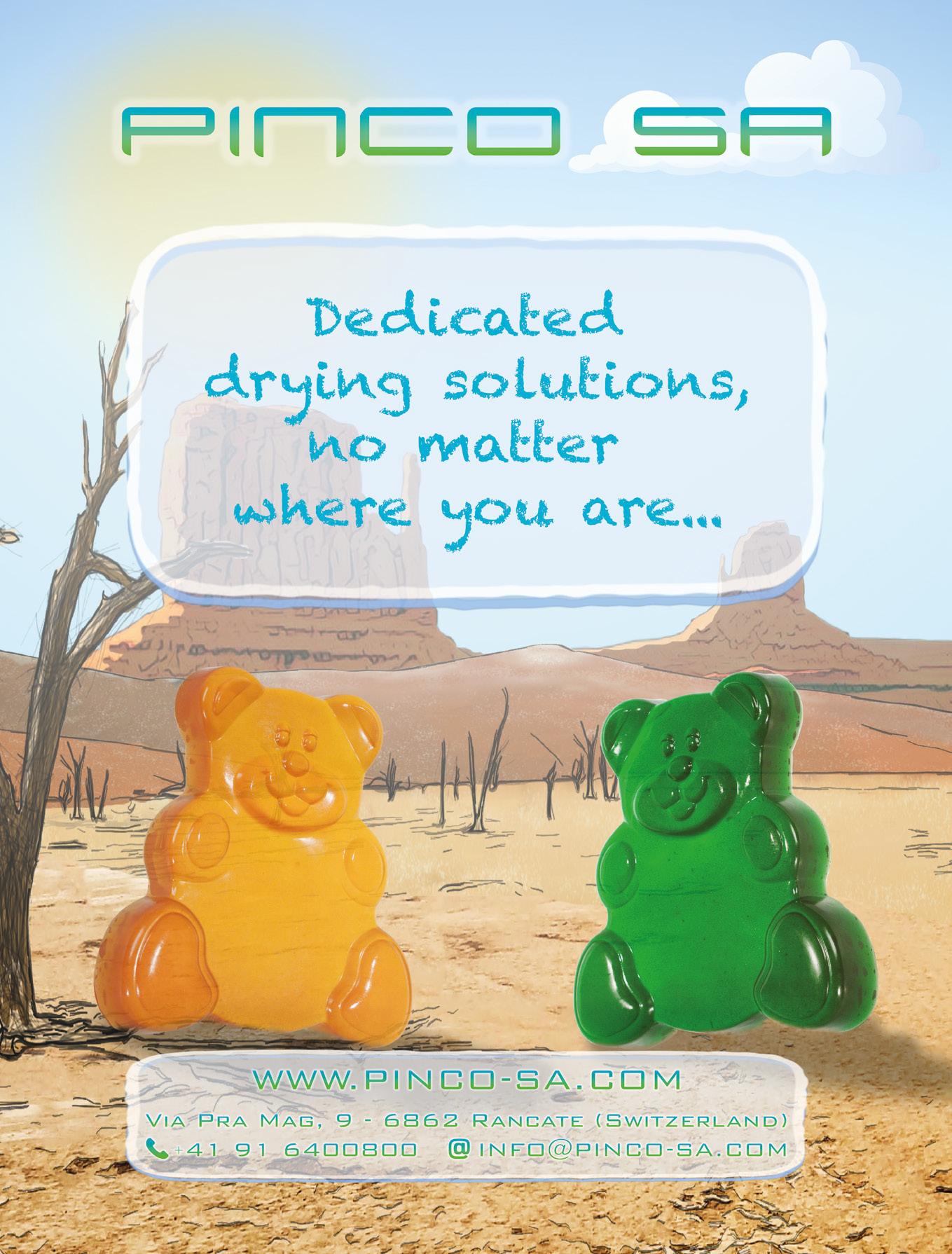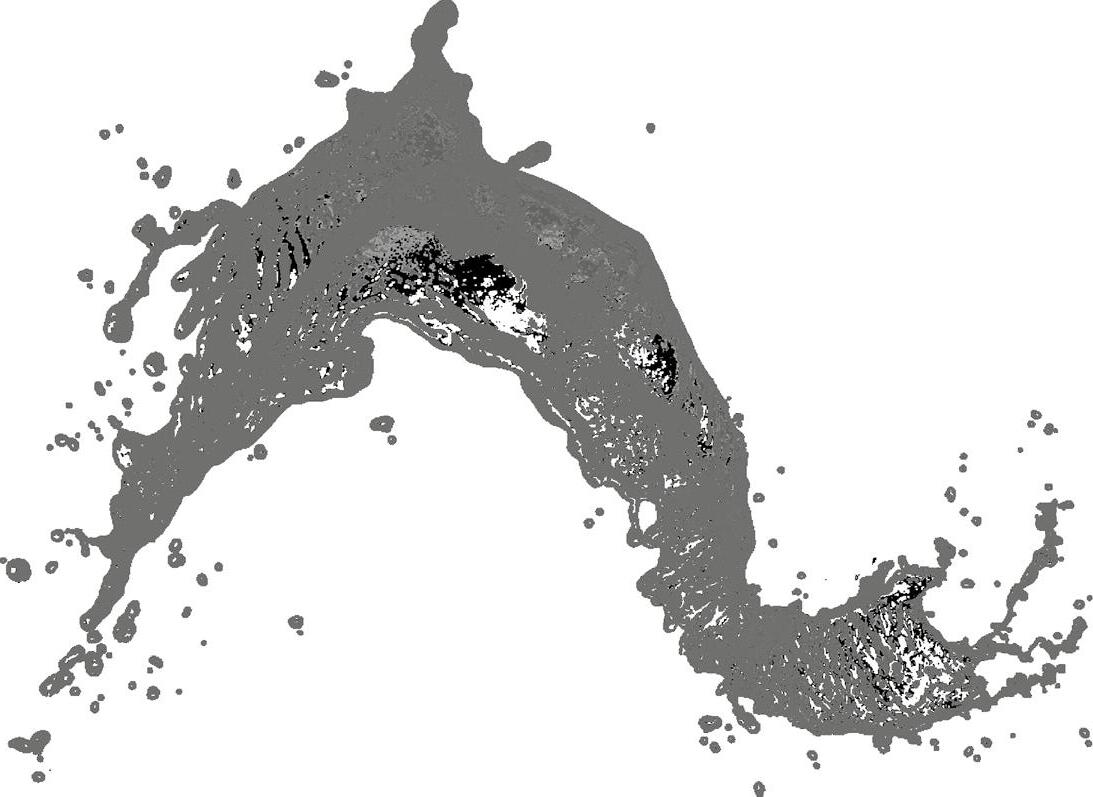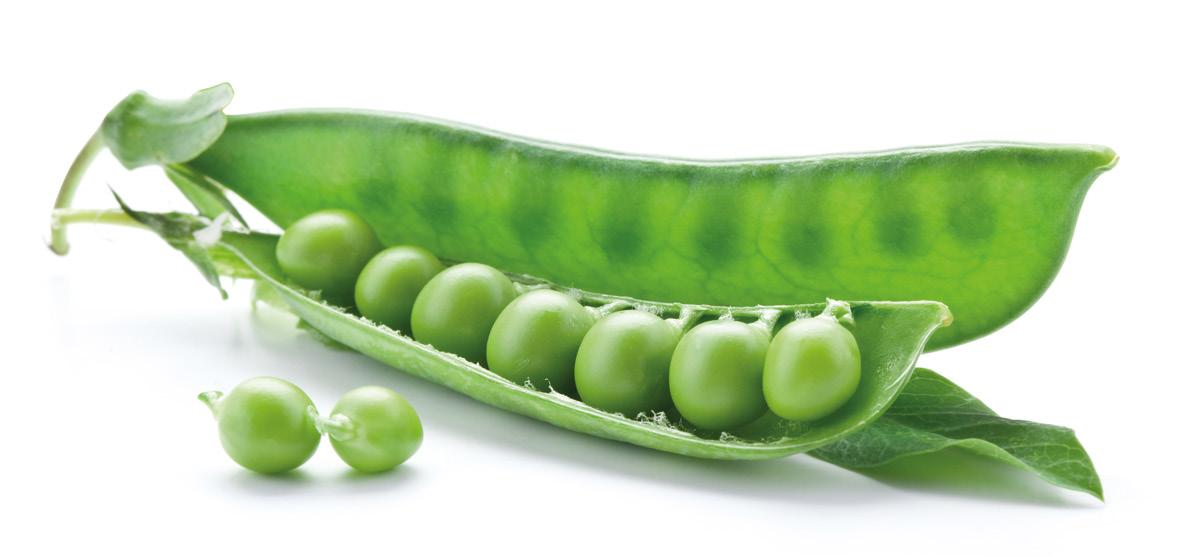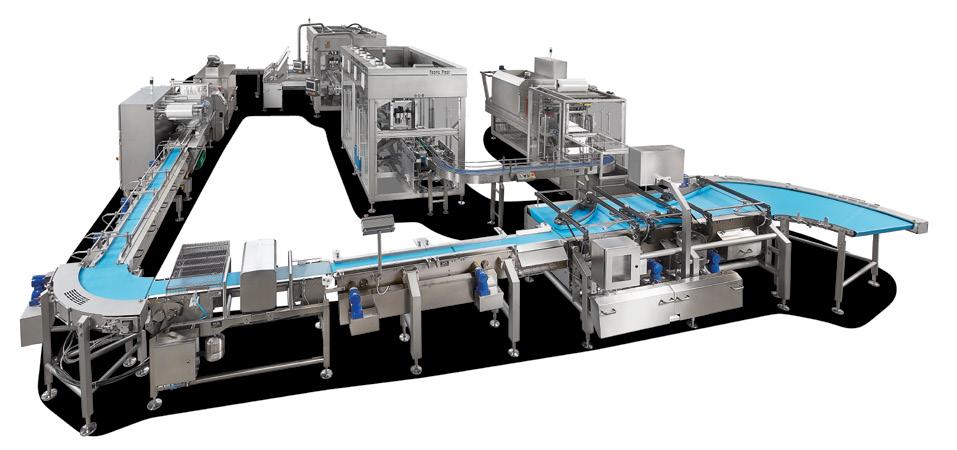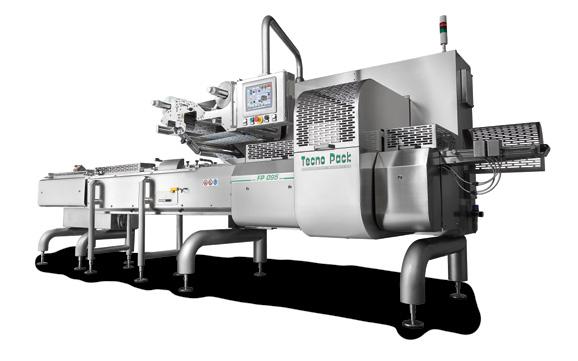The future is now








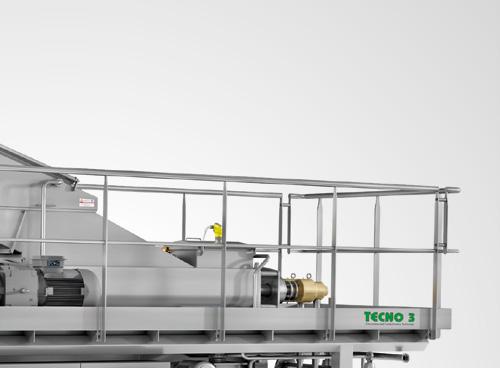
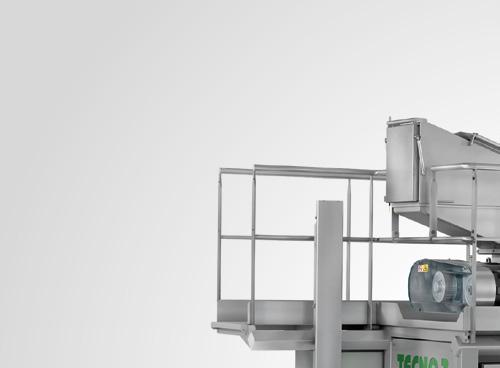
Hall 03 Stand 3F91 04 - 10 Maggio 2023 Düsseldorf Let’s meet at +39 0173 61.05.64 • www.tecno-3.it Headquarter: Tecno 3 S.r.l. - Corneliano d’Alba - ITALY Tecno 3 Switzerland Tecno 3 USA INC TECNO3 INAUGURATES THE NEW ERA OF CONTINUOUS MELTING
world of the food industry asks, TECNO3 responds.
The
today it
possible to melt continuously and in little space Fat loaves, cocoa and chocolate mass, anhydrous butter and hydrated, in one plant. Technological innovation, production optimization, power and security. 10064 PINEROLO - ITALIA Tel. +39 0121393127 info@chiriottieditori.it www.foodexecutive.com Supplemento al n. 04, aprile 2023 di Industrie AlimentariSped. in A.P.D.L. 353/2003 (Conv. in L. 27/02/2004 n° 46) art. 1 comma 1 DCB TOn. 103 anno 2023IP n. 103 - April 2023 ISSN 1590-6515
TECHNOLOGY ITALIAN
From
is
FOOD & PACKAGING
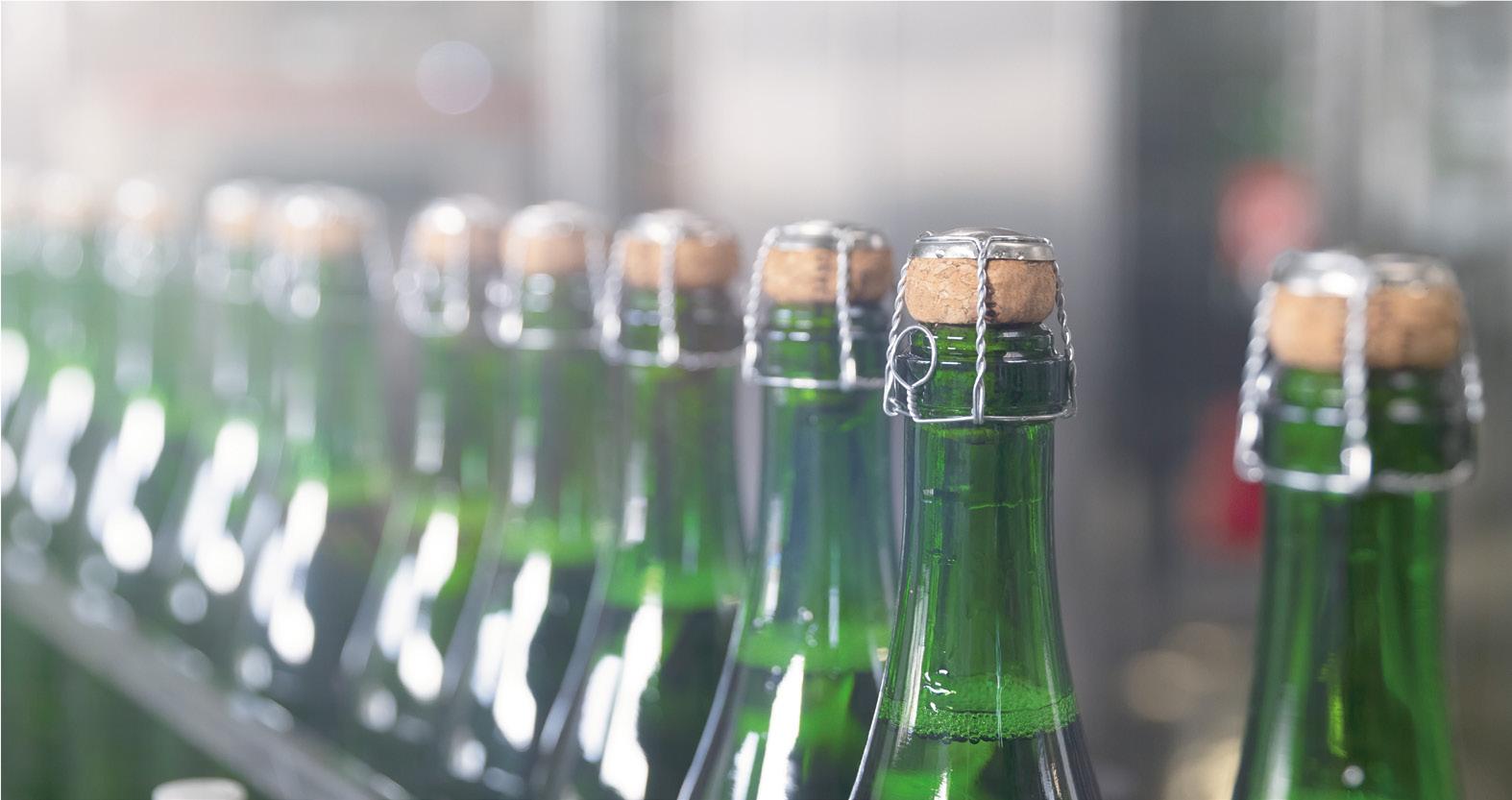
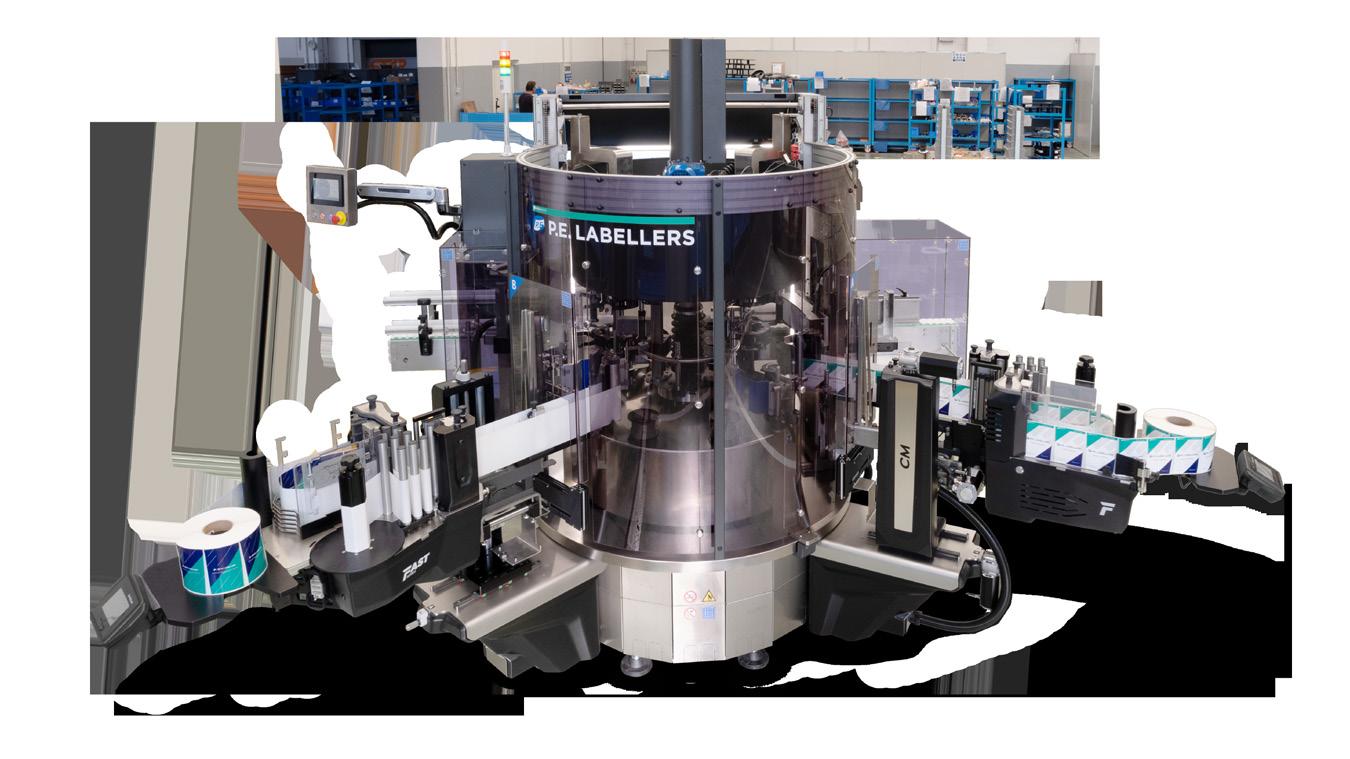
departments
3
18
24
PRODUCT TRENDS - Global opportunity for Hard-Boiled confectionery
- Industry faces an opportunity challenge for ‘real food’ - Global forecast on cocoa and chocolate market - High competition in the confectionery market - The plant-based protein market
CONSUMER TRENDS - Consumers seek out brands that respond to their core values - More consumers seek nutrient-dense foods while meat-reducing slows
FOOD PROCESSING - Food Automation Market worth 12.26 billion USD
- The world of continuous melting inaugurates a new era - Meet Sarp at Interpack - No compromise in Food Safety - Combination of plasma processing and pulsed electric field on the characteristics of yoghurt drink - Simplified model of airflow and heat transfer in a pallet of food product generating heat - New technology to produce meat analogues with soy, pea and gluten - Whole peanut milk productionA novel technology for high-moisture textured soy protein
36
PACKAGING TRENDS - Food: packaging against waste - Electron beam irradiation of vacuum-packaged pork - The role of packaging on the flavor of fluid milk - Packaging for beverages is growing more sustainable - Dairy packaging market: global opportunity and industry forecast - Research on the structure of the PET bottle bottom - Effects of irradiation on the shelf-life and quality of vacuumpackaged beef steaks
50 PACKAGING EQUIPMENT - Industrial packaging: for safe travels around the globe - Simple, flexible automation: beyond the machineThe labelling solution preferred by Wine & Spirits - Reduce, reuse, and recycle: SMI solutions for a compact, eco-sustainable end of line
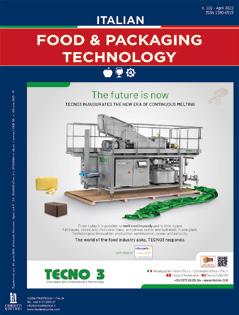
60 NUTRITION - New rice grains with dazzling color and flavorImproving flavour and texture of B12-fortified bread - Potential of raw and fermented maize gluten feed in bread making - Increasing the content of lactose-free milk macronutrients - Cassava starch as a novel gluten-free for baking product - Rosemary extract as drink ingredients - Extruded snacks from pulses and pseudocereal proteins - Effects of soybean oil body as a milk fat substitute on ice creamChickpea extract as leavening and anti-staling agent for gluten-free breads - Study on optimization of preparation process of coconut plant-based yoghurt
68 RESEARCH - Bringing your food full circle - Potential of lactic acid bacteria to produce functional fermented whey beverage - Aloe vera and carrageenan based edible film improves storage stability of ice cream - A comparative study between freeze-dried and spray-dried goat milk - Evaluation of quality changes of cloudy mixed juices after high pressure processing - Effects of ultra high pressure-magnetic field treatment on stored shrimp - Improving fresh cheese shelf-life through hyperbaric storage - Techno-functional properties of black soldier fly larvae - Novel lactic acid bacteria starter from insect microbiome to plant-based fermentations - Effect of roasting degree on major coffee compounds - Extruded mozzarella cheese properties influenced by renneted casein gels
76 NEWS - Fresh fruits and nuts processing - First USDA winter peas for food - Cellular agriculture key technology for food securityInternational events in Italy
80 COMPANY INDEX APRIL - issue 103
Four-monthly - ISSN 1590-6515
April
issue 103
OUR WEBSITES
www.chiriottieditori.it shop.chiriottieditori.it www.foodexecutive.it www.pasticceriainternazionale.it www.tuttogelato.it www.alimentifunzionali.it
Chiriotti Editori s.r.l. Viale Rimembranza 60
10064 Pinerolo - To - Italia Tel. 0121 393127 info@chiriottieditori.it www.chiriottieditori.it

for free subscriptions call to +39 0121 378147 or send an e-mail to: abbonamenti@chiriottieditori.it La riproduzione, anche parziale, di articoli ed illustrazioni pubblicati sulla rivista è riservata e non può avvenire senza espressa autorizzazione scritta dell’Editore. L’Editore non assume alcuna responsabilità per quanto riguarda eventuali errori contenuti negli articoli e per quanto espresso dagli Autori.
Publisher

Alberto CHIRIOTTI Direttore Responsabile alberto@chiriottieditori.it
Contributing Editors
Laura SBARATO, Simonetta MUSSO, Rossella CONTATO, Matteo BARBONI
Assistant Editor
Chiara MANCUSI mancusi@chiriottieditori.it
Graphics
Anna BOSCOLO
Marketing Manager
Monica PAGLIARDI pagliardi@chiriottieditori.it
Advertising Manager
Luca RUSSO russo@chiriottieditori.it
General Manager
Giuseppe CHIRIOTTI
All Rights reserved. Reproduction, even partial, of articles and illustrations published in the journal is forbidden and can not take place without written permission of the Publisher. The Publisher assumes no responsibility for any errors contained in the articles and for what is expressed by the Authors and/or by the companies.
PRINTED by Graf Art
Officine Grafiche Artistiche Venaria (To)
COPYRIGHT:
© 2023 Chiriotti Editori srl Supplemento del mensile
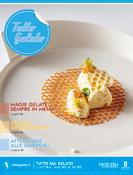
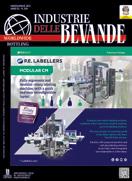
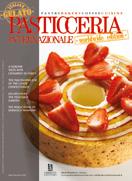
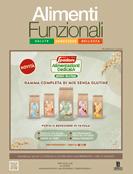
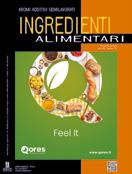
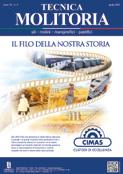
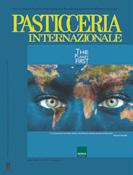
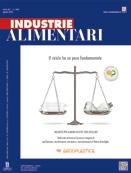
“Industrie Alimentari”
AUTORIZZAZIONE: n. 262 (19-11-1962)
del Tribunale di Pinerolo
PERIODICITÀ:
mensile - sped. in A.P. comma
20/B, art. 2, legge 662/96Torino
INTERNET:
www.chiriottieditori.it


Unione Stampa Periodica Italiana Copyright Clearance Center
PRODUCT TRENDS
Global opportunity for Hard-Boiled confectionery
According to the latest report by Allied Market Research, the global hard-boiled confectionery market size was valued at $15.6 billion in 2021, and is projected to reach $21.3 billion by 2031, growing at a CAGR of 3.2% from 2022 to 2031.
Hard-boiled confectionery refers to the sweet or candy made by boiling or heating sugar-based syrups at a temperature of around 160°C. Hard-boiled confectionery is also known as hard candy, boiled sweet, and sugar candy.
Economic growth, rise in disposable income, and rise in affordability are several important factors that are driving the hard-boiled confectionery market growth globally. In the past few years, trend of nuclear families has surged significantly and growth in the number of working couples is contributing actively in the increasing income of the families. This is further fueling the affordability of various confectionery items and premium products, which is exponentially propelling the growth of the global hard-boiled confectionery market.
Moreover, the growing trend of gifting confectionery items is a major factor that has a significant contribution in the overall growth of the hard-boiled confectionery industry. The rise in the consumers’ preference toward gifting confectionery products during celebratory and festive occasions such as Halloween, Diwali, Eid, birthdays, and school functions, is significantly boosting the demand for the hardboiled confectionery across the globe. The trend of gifting confectionery items is gaining a rapid traction
in the developing economies, which is expected to offer a significant impetus to the growth of the market during the forecast period.
Furthermore, rising young population is anticipated to propel the demand for the hard-boiled confectioneries in the forthcoming years. The demographic shifts and changing consumer tastes & preferences is encouraging new product development and introduction of innovative flavors in the herd-boiled candies. The manufacturers are boosting their investments toward development of new flavors along with the adoption of innovative fillings to enhance the taste of the hard-boiled confectioneries is expected to boost the growth of the global hard-boiled confectionery market during the forecast period.
A notable increase in the prevalence of diabetes among the global population along with rise in health-consciousness among the consumers is expected to drive the demand for the low-calorie or sugar-free hard-boiled confectionery items in the future. According to the International Diabetes Federation (IDF), in 2021, around 537 million people aged 20 years to 79 years were suffering from diabetes, globally. This number is expected to reach 643 million by 2030 and to 783 million by 2045. Therefore, a significant rise in the prevalence of diabetes among the
italian food & packaging technology - ciii (2023) - april 3
global population is expected to drive the low-calorie hard-boiled confectionery market demand during the forecast period. Moreover, rising health-consciousness among adults, growing consumer expenditure on wellness products, and rising awareness regarding the availability of sugar-free hard-boiled confectioneries are anticipated to provide impetus to the market.
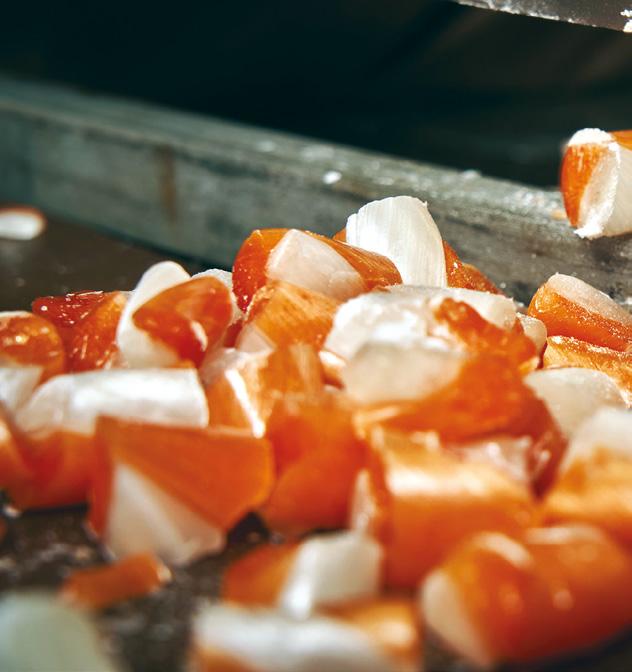
Further, rising initiatives by the manufacturers to invest in sustainable development is expected to boost the sales of the confectionery products at premium prices. The majority of the eco-conscious consumers associate their physical well-being with environmental issues that significantly influences their purchases. The eco-conscious consumers tend to spend more and buy confectioneries at premium prices for sustainably produced products. In 2017, Mars, a confectionery giant, announced to invest $1 billion to help cut emission of greenhouse gases from its value chain by 67% by the year 2050. This type of sustainability-oriented investments by the confectionery manufacturers is expected to attract the eco-conscious consumers, especially in the developed regions such as North America and Europe.
However, fluctuations in the prices of raw materials and rise in prevalence of type 1 diabetes among children are the major factors that may hamper the market growth during the forecast period. Fluctuations in prices of sugar are the result of various factors such as low yields, political tensions, climate change, and draughts. The global sugar prices increased rapidly from around $12.0 per Lbs. (pound) in January 2019 to $18.9 per Lbs. in January 2022. Therefore, sugar prices increased due to less production and more demand, may reduce the profitability of the manufacturers to a great extent. Furthermore, according to the IDF, over 1.2 million children and adolescents (0 to 19 years of age) were living with type 1 diabetes across the globe, in 2021. Surging prevalence of diabetes among the young population may negatively impact the demand for the hard-boiled confectionery market in the future.
According to the hard-boiled confectionery market analysis, the hard-boiled confectionery market is segmented on the basis of type, flavor, age group, distribution channel, and region. On the basis of type, the market is categorized into suckers and lollipops, jawbreakers, candy canes, rock candy, drops and disks, and others. By flavor, it is segmented into
cherry, watermelon, lemon, strawberry, orange, butterscotch, and others. Depending on the age group, the market is categorized into children, adult, and geriatric. By distribution channel, the market is divided into supermarkets and hypermarkets, convenience stores, specialty stores, e-commerce, and others. Region-wise, the market is analyzed across North America, Europe, Asia-Pacific, and LAMEA (Latin America, the Middle East, and Africa).
Suckers and lollipops segment dominated the market in 2021 due to its huge popularity and demand among children
According to the hard-boiled confectionery market forecast, by type, the suckers and lollipops was the largest segment accounting for 40.6% of the hard-boiled confectionery market share in 2021 and is expected to sustain its significance during the forecast period. This massive growth of this segment is attributed to the huge demand and consumption of suckers and lollipops among children. The intro-
4 italian food & packaging technology - ciii (2023) - april product trends
duction of multiple flavors in lollipops and easy availability coupled with captivating marketing strategies adopted by the manufacturers to attract children has significantly boosted the growth of this segment. For instance, Foltin and Foltin (F&F) Ltd., a Hungary-based lollipop manufacturer has partnered with The Walt Disney Company to supply their lollipops to Disneyland Paris. The lollipops were packed with foil of different popular Disney characters to attract the children.
Strawberry was the largest segment in 2021
As per the hard-boiled confectionery market trends, by flavor, the strawberry was the dominant segment in 2021. This growth is attributed to the enhanced taste and nutritional benefits associated with the strawberries. The nutritional benefits of strawberry help in maintaining good cholesterol, lower blood pressure, and decrease the risks of cancer. Moreover, the fruity and acidic

taste of strawberry enhances the experience of the hard-boiled confectionery consumers. Further, the manufacturers are experimenting to combine various flavors with strawberry to create a new combination that goes well with strawberry. The huge popularity of the strawberry flavored hard candies among the consumers is expected to sustain the dominance of the strawberry segment during the forecast period.
Children was the largest segment in 2021, as children are the largest consumers of hard-boiled confectioneries across the globe
By age group, the children segment dominated the market in 2021. Children are the leading consumers of the hard-boiled confectioneries. According to the World Bank, in 2021, around 25% of the global population consisted of 14 years or below age group. With the improvement in the technologies and adoption of advanced tools in fertility clinics, the fertility rate of women is improving globally. Moreover, rising global population is expected to boost the demand for the hard-boiled confectionery in the future. The presence of huge number of young populations in developing and underdeveloped economies has led to the increased demand for the hard-boiled confectionery in the nations such as India, China, and Brazil.
E-commerce is expected to be the fastest-growing segment during the forecast period
Depending on the distribution channel, e-commerce is anticipated to witness the highest CAGR during the forecast period. The e-commerce platform serves as a popular medium for the purchase of packaged food like hard-boiled confectionery. This is attributed to easy availability and the benefits such as information about the attributes of the products, time-saving features, and the facility of home delivery provided by the e-commerce platform. In addition, consumers prefer to buy products online since it is convenient and offers a large selection of brands that are not available in retail. Moreover, the e-commerce sales channel has increased the consumer reach owing to which it has evolved as a key source of revenue for many hard-boiled confectionery companies. Consumers are becoming
italian food & packaging technology - ciii (2023) - april 5 product trends
more aware about the many purchase patterns that exist in society as technology advances and internet services become more widely available. The technology attracts the millennials and generation Z and is expected to influence the buying pattern of products. According to the United Nations Conference on Trade and Development (UNCTAD), the e-commerce sector’s proportion of total retail sales increased from 16% to 19% in 2020. Furthermore, online sales are expected to grow notably shortly, due to the rapid increase in mobile users. An increase in e-commerce sales, improvements in logistics services, and ease in payment options further boost the growth of the global hard-boiled confectionery market.
Asia-Pacific was the largest market in 2021 and is expected to be the fastestgrowing region during the forecast period
Region-wise, Asia-Pacific was the leading market in 2021 and is expected to be the fastest-growing market from 2022 to 2031. Asia-Pacific is home to over 60% of the global population with a majority of the population being young. The presence of a huge youth population, rise in employment, rise in disposable income, change in food habits of the consumers, and rise in number of product launches are the major factors that are expected to drive the growth of the Asia-Pacific hard-boiled confectionery market during the forecast period. Moreover, rising prevalence of
diabetes coupled with growing geriatric population in the region are expected to boost the demand for the low-calorie hard-boiled confectionery products. According to the IDF, 3 in 4 individuals in low and middle-income nations were living with diabetes in 2021. Further, according to the United Nations, around 80% of the geriatric population is expected to live in low and middle-income countries by 2050. Therefore, the demand for sugar-free hard candies is expected to rise significantly in Asia-pacific during the forecast period.
Ferrero International S.A., Lotte Corporation, Mars, Incorporated, Mondelez International, Inc., Nestle S.A., Parle Products Pvt. Ltd., Perfetti Van Melle, The Hershey Company, Tootsie Roll Industries, and Valeo Foods Group are the major companies profiled in the hard-boiled confectionery market report. These manufacturers are constantly engaged in various developmental strategies such as partnerships, mergers, acquisitions, and new product launches to gain competitive edge and exploit the prevailing hard-boiled confectionery market opportunities.
This report provides a quantitative analysis of the market segments, current trends, estimations, and dynamics of the hard-boiled confectionery market analysis from 2021 to 2031 to identify the prevailing hard-boiled confectionery market opportunities.
www.alliedmarketresearch.com
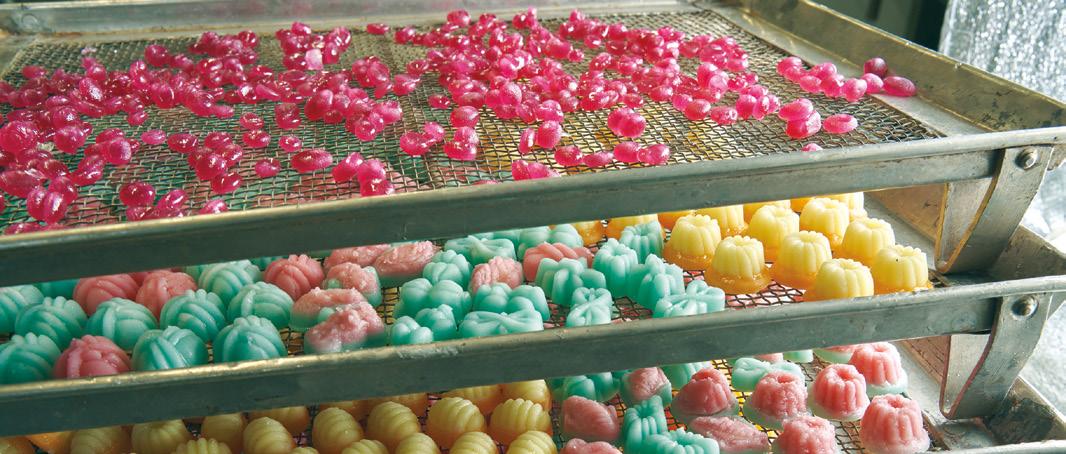
6 italian food & packaging technology - ciii (2023) - april product trends
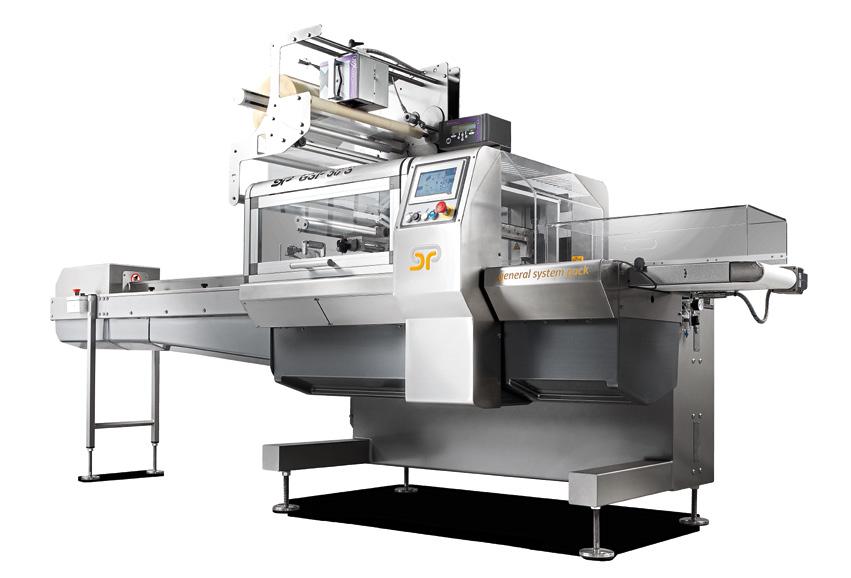
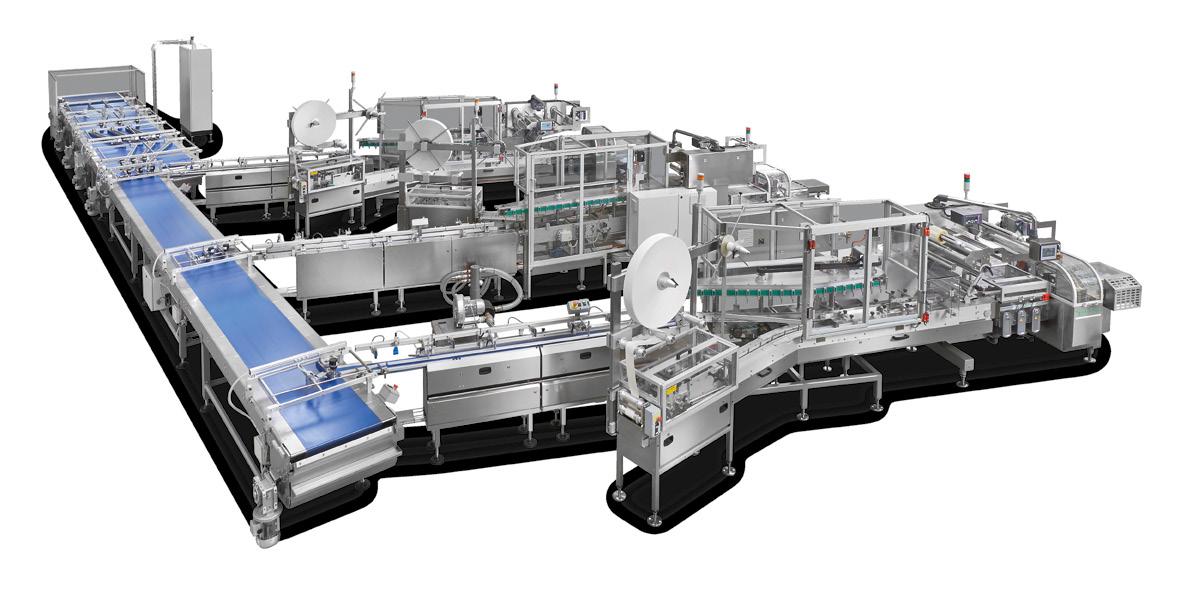
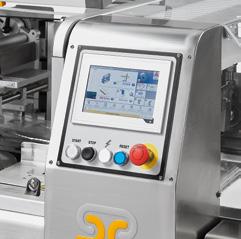
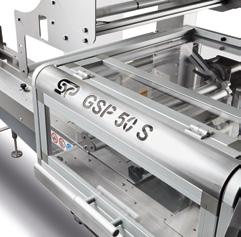
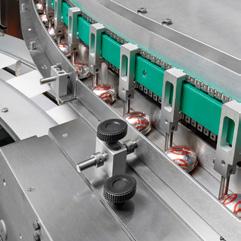
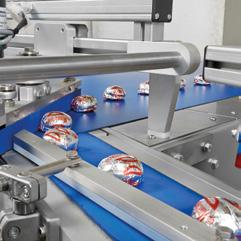
Industry faces an opportunity challenge for ‘real food’
Consumers’ expectations that convenient, packaged foods should be simpler and less processed are set to become more important over the rest of this decade, predicts food industry expert Julian Mellentin of New Nutrition Business. He says there’s growing evidence that consumers are increasingly shunning ultra-processed foods (UPFs) and looking for more ‘real foods’.
In a recent survey of consumers, 20% of Americans and 40% of Spanish consumers said they were trying to avoid UPFs, the highest numbers since the consultancy began asking this question. “The growing consumer interest in ‘less processed’ has grown out of the clean label trend of identifying something undesirable in our food and avoiding it,” says Mellentin. “What’s different is that we are entering a new phase. Brands will have to do more to reinvent “ultra- processed foods” and to deliver products that get closer to consumers’ expectations of ‘real food’.”
Avoiding UPFs means, to a growing number of consumers, choosing fresh and natural foods. When the International Food Information Council (IFIC) asked Americans about the most common attributes of a healthy food, the top answer, given by 37% of people, was ‘fresh’, while 20% of consumers said ‘minimal or no processing’.

8 italian food & packaging technology - ciii (2023) - april product trends
“The opportunity over the next 3-5 years is for packaged food companies – gradually, step-by-step – to renovate products,” says Mellentin. “That will require a focus on ingredients and processing technology which deliver the safety, convenience and palatability people seek while doing so with as little processing as possible – or at least with a type of processing that people accept.”
“Ingredient suppliers have an important role to play in enabling this change, just as they have through the last 20 years of changing consumer preferences about clean label and free-from,” he adds.

Companies do not need to renovate their entire product line, says Mellentin: “A significant percentage of mainstream consumers want to continue enjoying their favourite foods just as they are. The result may be that companies will have some products within their portfolio that meet consumer expectations for less processed and real food – just as today they have free-from or gluten-free lines in their portfolio.”
In his recent report, 10 Key Trends in Food, Nutrition & Health 20234, Mellentin notes that there are many companies for whom ‘simply processed’ and ‘real’ are already part of strategy:
- Yoplait’s French-inspired Oui by Yoplait yoghurt, marketed in the US, communicates simple ingredients and artisanal-style packaging and production. It was the first product of its kind from General Mills, the world’s 10th-biggest food company. The simplicity of the production process is explained to consumers. Oui achieved over $100 million in Year 1 retail sales with 3 SKUs and has since been expanded to 26 SKUs.
- Danone is responding to the trend in Spain, where it may be the most advanced. An amazing 40% of Spanish people claim to be avoiding UPFs – the highest number in Europe. The desire to avoid UPFs is partly cultural, but it also owes something to Carlos Rios, a Spanish blogger and nutrition guru with 1.5 million followers on Instagram. He is the creator of Realfooding, a movement which encourages people to avoid UPFs. Danone has become the first major food company to engage with the Realfooding project. One of Danone’s natural drinking yoghurts, with just 4 ingredients, now carries the Realfooding endorsement.
- Technology has an important role to perform in enabling packaged products to deliver on consumer expectations. US-based plant milk marketer Elmhurst has developed a technology called HydroRelease, which enables it to create a two-ingredient, nutritionally-dense plant milk which delivers on consumer expectations of simple processing and few ingredients, in marked contrast to most plant milks on the market. www.new-nutrition.com
italian food & packaging technology - ciii (2023) - april 9 product trends
Global forecast on cocoa and chocolate market
The cocoa market is projected to reach USD 26.3 billion by 2027 growing at a CAGR of 4.5% from 2022 to 2027, while the chocolate market is projected to reach USD 160.9 billion by 2027 growing at a CAGR of 4.7% from 2022 to 2027 according the latest MarketsandMarkets report.
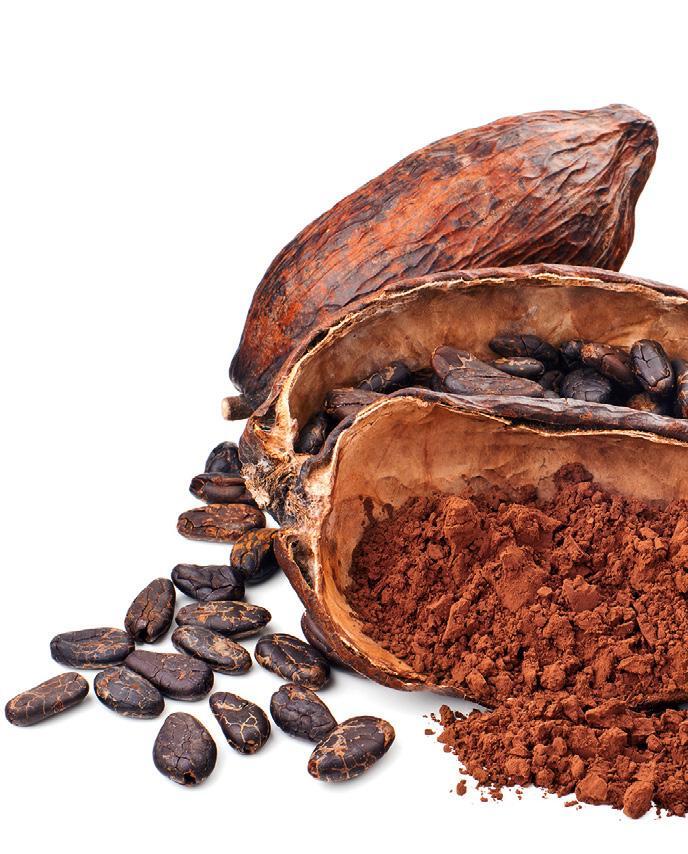
Increasing sales of chocolate confectionery products to be consumed as comfort food is responsible for making it a regular grocery items in households. Chocolate is considered a traditional gift on special occasions and festivals such as Christmas, Easter, Halloween, and Valentine’s Day in American and European countries, a trend which is now adopted in some Asian countries such as India, China, and Japan. The seasonal and festive sales of chocolate products highly impact the market as a large portion of chocolate products are consumed in this segment.
The Cocoa and chocolate market has been growing in accordance with the rising demand for health benefits of cocoa in chocolate products are the key drivers for the chocolate market. In addition to this, chocolates are being consumed as a premium and comfort food which is a rising trend among consumers, further proliferating the market growth.
MARKET DYNAMICS
Health benefits of chocolates
Chocolates have a long history of being used as a health food. In the 18th century, a chocolaty drink was used in England to prevent and cure stomach
aches. Today, ORAC (Oxygen Radical Absorbance Capacity) is used to compare the antioxidant capacity of different foods. Chocolates, along with apples and blueberries, are considered to be one of the best ORAC rating foods. Consuming chocolate also pre-
10 italian food & packaging technology - ciii (2023) - april
vents the stress hormone, cortisol, from being released. Instead of relying on medication, consumers prefer to incorporate ingredients that improve their health into their normal diet.
Dark chocolate is becoming more popular among consumers due to its high cocoa content and flavonoids, especially a subtype known as flavanols that is linked to a lower risk of heart disease. Additionally, those who consume dark chocolate or high cocoa content have a lower chance of developing insulin resistance and high blood pressure. Thus, the health benefits associated with cocoa and its products are the biggest driver for the cocoa and chocolate market.
High raw material prices
The major restraint impacting the market is the high price of raw material, i.e., cocoa and sugar. Chocolate prices are highly dependent on raw materials. Cocoa and sugar are the most important raw
materials in chocolate manufacturing and constitute over 80% of the raw material cost for chocolate production. Hence, the rising cost of raw material will impact the market for chocolate.
According to the International Cocoa Organization, the world largest supplier of cocoa is Africa, which accounts for 72% of the global production of cocoa. Ivory Coast and Ghana are the major countries producing cocoa, but these countries are also facing certain issues such as fairtrade discrepancies, environmental issues, spells of government unrest, and reducing labor force as more population is leaving farming as an occupation and opting other professions.
Low penetration rate in Developing Countries
Developing Countries such as India and China offer a great opportunity for growth to major chocolate companies due to low penetration rates in these markets. In these countries, chocolate is mostly used for confectionery. The market for premium chocolates is almost undeveloped in such countries. However, the scenario is about to change, with major companies such as Kraft Foods, Ferrero, and Mars launching their premium products in Asian countries.
A major cause for the rising demand for chocolates is the rising disposable income of customers in Asia Pacific’s developing nations. Over the past several years, the availability of local brands has boosted chocolate sales in South Korea, Japan, India, and China. Due to evolving taste preferences and rising brand loyalty, international brands such as Ghirardelli, Mars, Ferrero, and Hershey’s have also seen growth in these countries.
Changing consumer preferences
A major threat to the chocolate industry is the changing consumer preferences of chocolates. Chocolates were consumed as a confectionery item, but now there is a growing demand for the healthy chocolate option, with an inclination toward dark chocolate, a rich source of polyphenols.
As per a recent survey conducted by Barry Callebaut, 36% of Europeans want chocolates with health benefits, while 38% would like chocolates with reduced sugar content. Consumers are even
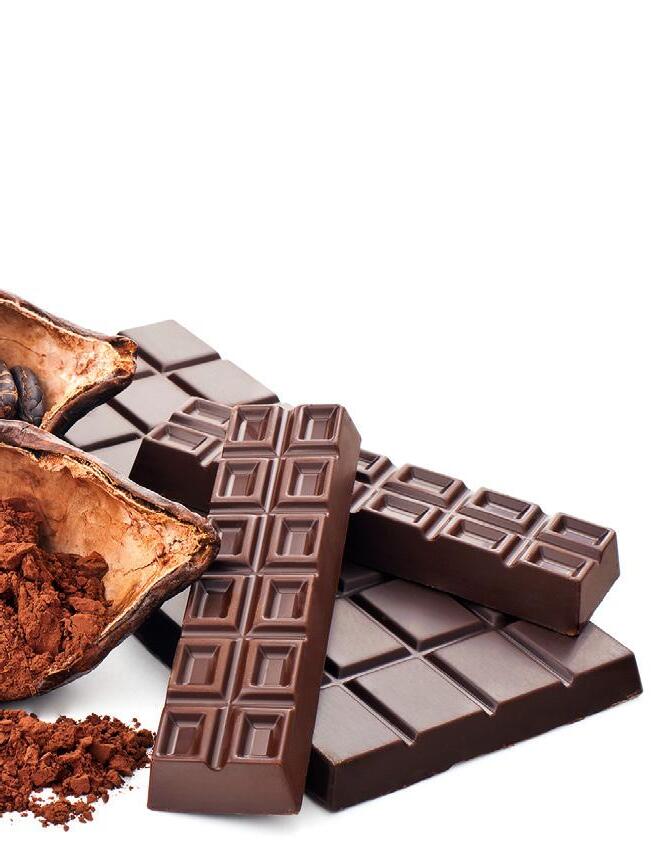
italian food & packaging technology - ciii (2023) - april 11 product trends
willing to pay up to 10% more for chocolate with health benefits. Such consumer trends have forced companies such as Hero Nutritional and Barry Callebaut to launch chocolates with health benefits.
Companies will have to make sure that their new product launches are in accordance with consumer tastes and preferences. Since chocolate is a perishable product, any decrease in the demand for a particular product could result in large inventories with very limited time for disposal.
Seasonal and festive-related sales
Chocolate is considered a traditional gift on special occasions and festivals such as Christmas, Easter, Halloween, and Valentine’s Day in American and European countries, a trend which is now adopted in some Asian countries such as India, China, and Japan. Chocolate sales shoot up during festive seasons. Keeping this seasonal effect of sales in mind, companies trying to venture into developing economies, such as India and China, are focusing on specialty products for traditional festivals such as the Chinese New Year, Raksha Bandhan, and Diwali in India.
Currently, the seasonal and festive sales of chocolate products highly impact the market as a large portion of chocolate products are consumed in this segment. Depending on the situation, they are produced in a variety of shapes, sizes, colors, and product materials. Thus, this high demand for chocolates and its products during festivals would enhance the market for cocoa and chocolate.
Large number of applications
Chocolate is used in several applications, including confectionery, beverages, and baking. Chocolate is setting its foot rapidly in the baking industry, with lots of chocolates being looked upon as a flavor for biscuits, cakes, and pastries. In the global flavor industry, several new product types are being developed, such as energy drinks, yogurt, and dairy beverages.
Additionally, chocolate liquor is generally used for applications in the production of bittersweet chocolate and baking applications.
Cocoa is used in the pharmaceutical industry for providing the chocolate essence or flavour to the
drugs to improve the palatability or compliance of the dosage forms for consumers.
In addition to that, natural cocoa butter is frequently used in cosmetics as a humectant, a lubricant to maintain the moisture, and to enhance the aroma of products. These applications of cocoa and chocolate can drive its market in the coming years.
North America dominated the cocoa and chocolate market
The key players in the North American Cocoa and chocolate market include Mondelez international (US), Blommer chocolate (US), Hershey (US) and Mars Inc. (US). The rising demand for chocolate in North America enhances the growth of cocoa simultaneously in the region as it is the key raw material used in the production of chocolate. Moreover, the increasing demand for chocolate among consumers triggers the demand for cocoa butter as it provides the chocolate with its melt-in-the-mouth texture. The U.S. accounted for the highest chocolate consumption and production in the North American region.
In Canada, chocolate is becoming more expensive due to the rising cost of raw materials, particularly sugar but the rising popularity of giving chocolates as gifts, Canada is likely to see a significant increase in the acceptability of pricey chocolates in the upcoming years.
The Mexican chocolate market is expanding as a result of rising disposable income, booming foreign investment, and an increase in annual chocolate events like the Mexico Chocolate Expo.
Key market players
The key players in cocoa and chocolate market include Mars, Inc. (US), Mondelez International (US), Nestle S.A. (Switzerland), Meiji Holding Co. Ltd. (Japan), Ferrero International (Italy), Olam Group (Singapore), Barry Callebaut (Switzerland), Cargill Incorporated (US), Cocoa Processing Company (Ghana), Archer Daniel Midland (ADM) Company (U.S.), Chocoladefabriken Lindt & Sprüngli AG (Switzerland) and Pladis Global(UK).
12 italian food & packaging technology - ciii (2023) - april product trends
www.marketsandmarkets.com

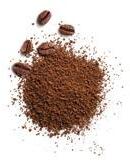

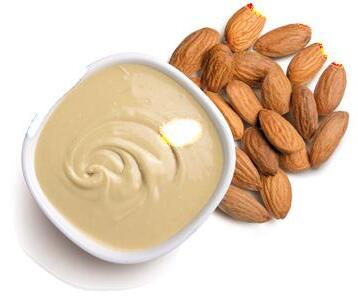
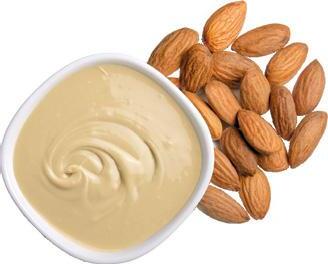

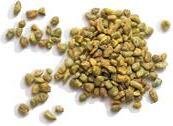
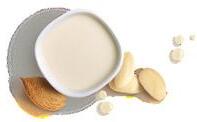




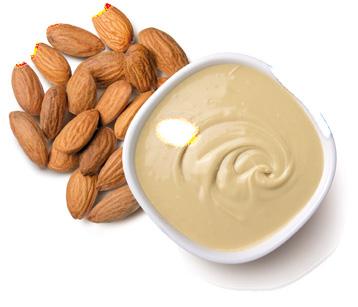
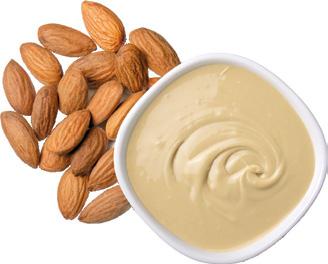
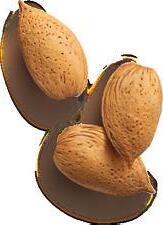







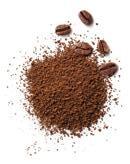

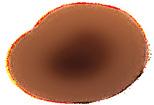
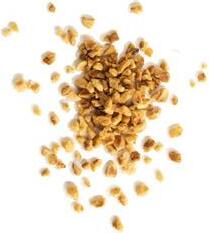
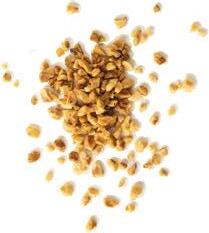


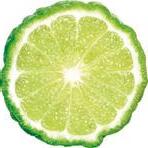





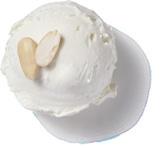

DI BARTOLO SRL Via Garibaldi, 165 95011 Calatabiano (CT) Tel. +39 095 645103 info@dibartolosrl.it www.dibartolosrl.it Since 1951, we are your tailor made ingredients partner.
High competition in the confectionery market
Most people enjoy a sweet tooth, but with the trend towards more sustainability, there is also an increase in demand for sweets with more eco-friendly packaging. This puts severe pressure on the confectionery industry to adopt packaging processes and materials which are gentle to natural resources. Many producers of packaging already are able to offer sustainable solutions for chocolate, biscuits, etc.
The European confectionery industry is one of the most dynamic and largest sectors in terms of production and export.

More than 12,000 companies produce 14.7 million tons of confectioneries each year, says the European association Caobisco. Worldwide, however, the USA are the biggest producers of confectionery with a predicted turnover of 264 billion Euro in 2023 and the largest absolute growth, according to Euromonitor International, over the next five years.
Chocolate especially is what consumers prefer above all. In the European ranking by Chocosuisse in 2020, Switzerland led the per-capita consumption of chocolate with more than eleven kilograms per year, followed by Germany (9.2 kg), Estonia (8.3 kg) and Denmark (8.2 kg). Estonia even had the highest per-capita consumption of confectionery in 2022, according to Euromonitor – every inhabitant statistically ate a total of 13.6 kg. Prognostics say that this trend in the Baltic country will experience a large growth over the next five years.
A current survey by the German online platform Statista shows: Women eat more sweets. In the year 2022, about 34% of women said they
consume sweets or savoury snacks every day. The number for men was 23%. In a different study, one quarter of the participants told the market investigators of POSpulse, that since the pandemic they have been consuming more sweets and snacks.
14 italian food & packaging technology - ciii (2023) - april product trends
Manufacturers source the main raw ingredients for confectionery and snack foods mostly from Germany or the EU, according to the German Federal association BDSI. This makes the confectionery industry not only an important partner for the German and European agriculture, short transport distances also mean that it contributes to saving resources. International trade is of course important for the confectionery industry, too. Using roughly 400,000 tons of cocoa, the most important raw ingredient for chocolate, German manufacturers of confectionery process 10% of the global annual crop. All in all, European manufacturers use about half of the world’s available cocoa, according to Caobisco.
Currently, the industry like many others faces an existential crisis: Exploding costs for energy and raw materials, but also disruptions to delivery chains and the availability of raw materials disproportionately affect small and mid-size family businesses. For example, in autumn 2022, the cost increase for sugar was 100%, butter was 57% more expensive, and wheat 60%. “For our companies, the enormous
pressure from rising costs leads to them questioning production sites or even their very existence. This is not only caused by the soaring cost of energy and raw materials in 2022, but also by negative pressure dependent on location, which in Germany has been higher than average for a long time. This includes expenditures on wages, taxes and the growing lack of qualified personnel”, says Dr. Carsten Bernoth, CEO of the German Federal association of German producers of confectionery (BDSI). ‘”For our producers, it is impossible to compensate for these considerably rising costs by saving or by proportionately raising sales prices.”
In spite of the crises, confectionery is one of the segments of the food industry with the highest turnover; this segment achieves the fourth highest. It is therefore no surprise that the confectionery market is one of the most competitive within the German retail market. And the industry is facing new requirements. Especially the growing awareness of consumers regarding health and the environment is creating a new demand for sugar-free varieties and packages that are more environmentally friendly. For manufacturers of confectionery this also means they have to create their packaging processes to be more flexible and more efficient. There is a growing trend towards automated production and packaging processes, and their sweet delicacies more often come in a sustainable wrap.
For example, we have the first chocolate bars that are not wrapped in an inner aluminium foil and are just packaged in cardboard – however, as this is in direct contact with food, it needs a coating. Confectionery producer Fazer now uses a light, dispersion coated cardboard from Metsä Board for its advent calendars. Switching to the new material has reduced the use of plastics by 1,200 kg each year compared to the previous PE coated cardboard, says the company. The advent calendar is now also fully able to be recycled, the light weight and the new material’s efficient use of resources also cut its carbon footprint by one quarter. “Virgin fibre cardboard offers the necessary safety for advent calenders, especially where chocolate and cardboard come into direct contact. Our dispersion coated cardboard also has neutral sensory properties, which means the taste of the chocolate is preserved for a long time”, says Olli Haaranoja, Sales Director at Metsä Board.

italian food & packaging technology - ciii (2023) - april 15 product trends
www.interpack.com
The plant-based protein market
According to the latest research carried out by MarketsandMarkets, the plant-based protein market size is projected to grow from USD 10.3 billion in 2020 to USD 15.6 billion by 2026, in terms of value, recording a compound annual growth rate (CAGR) of 7.2% during the forecast period. The rise in population with lactose intolerance is one of the major factors driving the market growth for plant-based protein. North America region accounted for the largest market share in the global plant-based protein market.
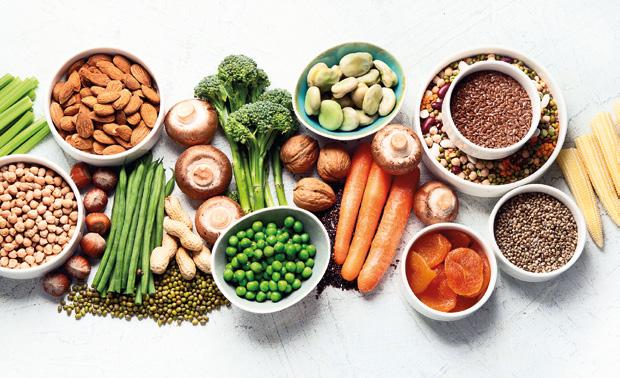
The plant-based protein market is segmented, based on type, into isolates, concentrates, and textured protein. The isolates segment is projected to grow at the highest CAGR during the forecast period since it has a high concentration of protein with the advantage of color, flavor, and functional properties. This makes it an ideal raw ingredient to be used in applications such as beverages, infant foods, children food, textured protein products, and other types of specialty foods.
The market is also segmented, based on application, into food, and feed. The food segment is pro-
jected to be a leading segment in the plant-based protein market, since, plant-based foods represent the growing consumer segment of the market with an increasing number of manufacturers utilizing the characteristics of plant-based proteins to develop new product types and alternatives to conventional products. Plant-based foods are now occupying mainstream presence driven by large-scale manufacturers such as Beyond Meat (US), Impossible Foods (US), Danone (France), and Tyson Foods (US).
Based on source, the market is segmented into soy, pea, wheat, and others, that include potato, canola, and rice. The pea-based protein segment is projected to grow at a higher CAGR during the forecast period, owing to its nutritional benefits and easy integration into final products. Furthermore, the demand for pea protein continues to grow from application industries. Moreover, rising consumer preference for pea-based protein due to increasing health consciousness and awareness regarding the benefits of pea-based protein, particularly in the European and the North American regions, is expected to drive their market growth.
The Asia Pacific region is projected to grow at the highest CAGR in the plant-based protein market during the forecast period due to the growing application of plant-based protein in the food segment. The Asia Pacific region continues to be a strong prospect for manufacturers based in North America. The young demographic and growing interest in plant-based products have resulted in organizations expanding their scope for improved geographic coverage in the region. Countries such as China and India with a strong agricultural background have emerged as key entry points into the region with a well-established infrastructure suited for the processing of plantbased proteins.
16 italian food & packaging technology - ciii (2023) - april product trends
www.marketsandmarkets.com
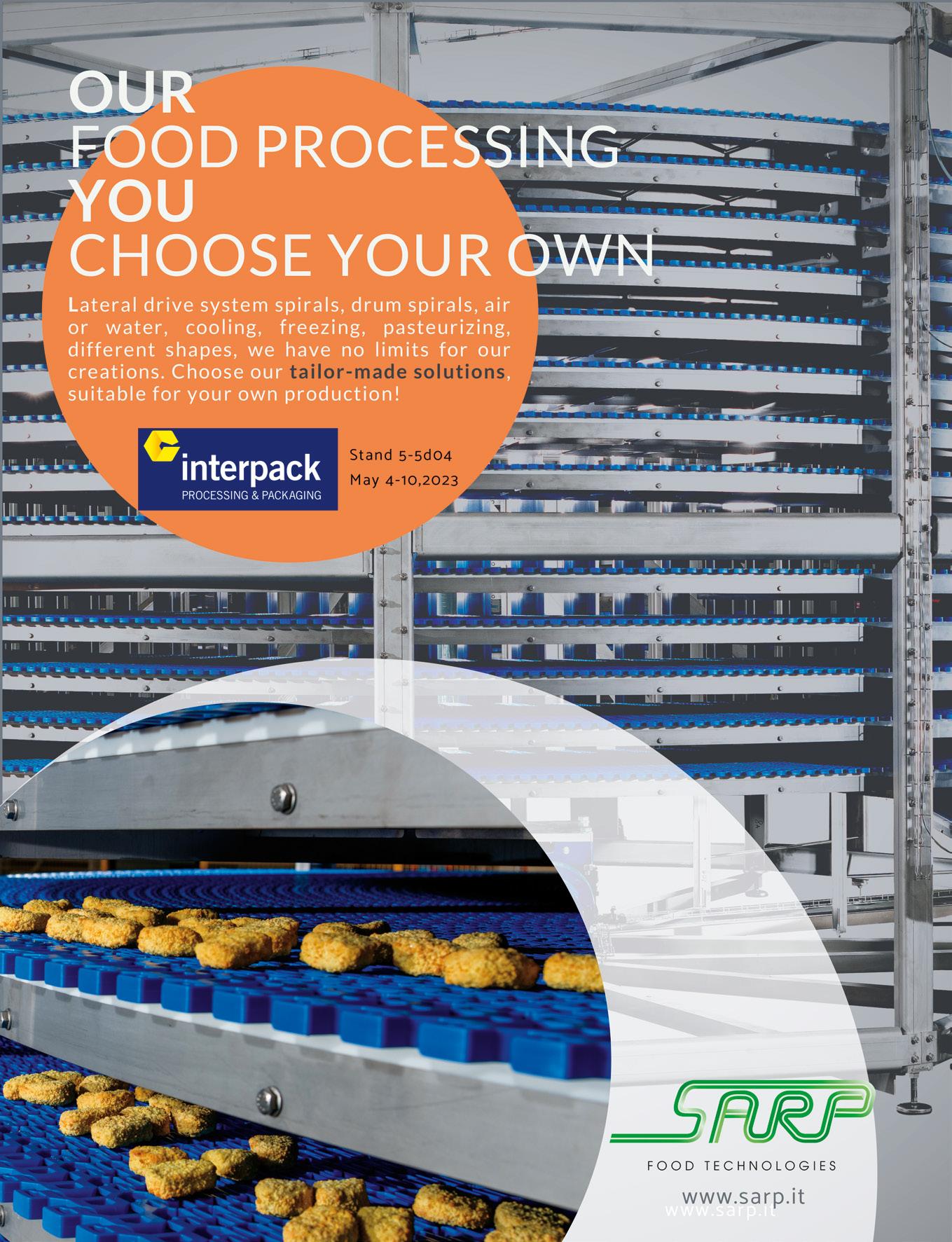
CONSUMER TRENDS
Consumers seek out brands that respond to their core values
“Redefining Value” heads Innova Market Insights’ Top Ten Trends for 2023, as consumers adapt to a global cost-of-living crisis in the face of economic and political volatility. With budgets stretched and supplies under strain, brands need to be flexible in action and open in spirit to connect with consumers, while also taking full advantage of rapidly emerging technological opportunities.
The eagerly awaited annual trends from food innovation and insight specialist Innova are based on wide-ranging global consumer surveys. Coupled with comprehensive market and new product data, they reveal not only what is driving consumer decisions now, but also ways in which brands and innovators can successfully adapt to future realities.
Over the last year, cost and value for money have become more important to more than half of food and beverage consumers worldwide. Today’s shoppers are increasingly exploring money-saving strategies, such as choosing lower cost items and cooking from scratch. But they remain determined to sample new experiences, ensure personal wellbeing and support planetary health. There is more pressure on brands and manufacturers to deliver value while still meeting these wider public expectations.
“Redefining value throughout the food and beverage industry will lead in 2023 as consumers seek brands that listen, understand and respond to their core values. They want brands that provide quality,

18 italian food & packaging technology - ciii (2023) - april
trust and confidence via their product formulations, communications and wider sustainability actions,” highlights Lu Ann Williams, Global Insights Director at Innova Market Insights.
In addition to a heightened demand for competitive pricing, consumers have told Innova they still seek nutritional value and expect a continued shared responsibility for environmental security. Meanwhile, younger generations who have grown up in an inclusive digital age are gaining greater influence, changing markets and creating new opportunities. Against that complex backdrop, here’s a taste of what Innova’s Top Ten Trends show is in store for the food and beverage industry in 2023:
1. Redefining Value
Brands, innovators, producers and consumers are wrestling with rising costs and greater instability. Combating this requires a deep understanding of where consumers draw the line on compromise. Strategies such as simple price increases, or flexible ingredient lists to cope with supply chain fluctuations, can work in the short term. However, brands need to be open in their communication and clearly show the benefits they are bringing.
Despite political and economic volatility becoming the second biggest concern for consumers in 2022, the health of the planet remains the top global issue and financial pressures are leading to an increase in eco-friendly behaviors. Consumers tell Innova they have reduced food waste and upcycled or recycled more as part of their belt-tightening. As the cost-of-living crisis continues, brands can achieve success through actions that combine economic benefits with clear health and sustainability goals.
2. Affordable Nutrition
Over the past 12 months, 62% of consumers have reported a noticeable rise in the cost of their food and beverages. As a result, they are turning their attention to simple but nutritious goods that are affordable. Key behaviors include buying in bulk, opting for private labels, cooking from scratch, reducing spending on luxury items and purchasing fewer items. Consumers are actively looking for affordable ways to maintain a healthy diet, offering brands many opportunities to test their capabilities to new limits. To meet the nutritional, environmental and economic demands of consumers, manufacturers must innovate to extract maximum value from raw materials and the production process.
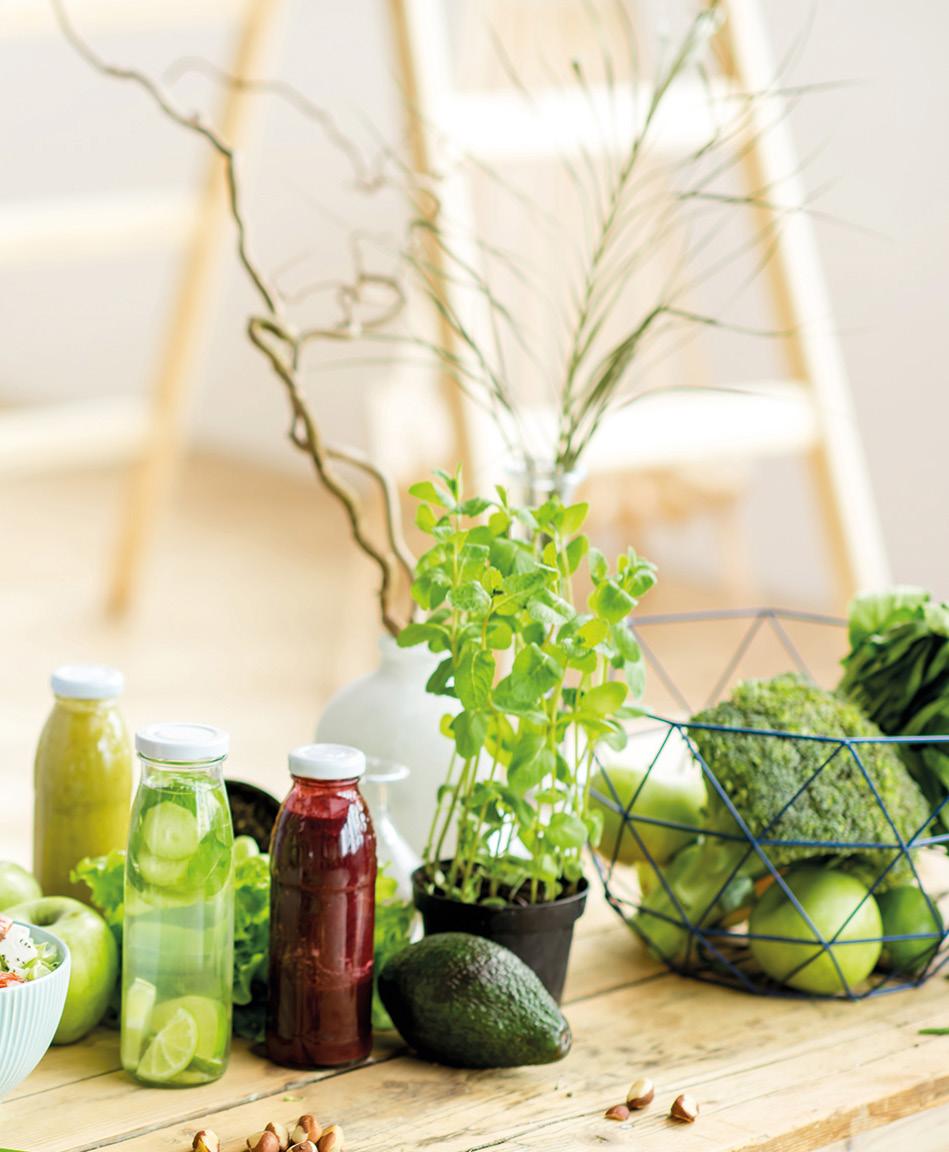
3. Generational Push
Younger consumers, raised in an interactive digital world, are creating trends and defining what markets should be providing. For Gen Z and Millennials, food and brand choices are important signifiers of lifestyle, beliefs and values. These demographics have a strong voice and are used to sharing their views openly and widely. While health is an increasingly important purchase driver – as it also is across old-
consumer trends italian food & packaging technology - ciii (2023) - april 19
Innova Market Insights is a global knowledge leader in the food and beverage industry. Founded in 1994, for over 25 years, it has built its reputation on its extensive tracking system for new food and beverage product launches in 90 countries. With its advanced data analytics Innova Market Insights converts industry-leading market research into meaningful guidance on present and future trends in FMCG.
er generations – novel and international flavors are winning the hearts of a young and experimental audience. These consumers embrace the new and different, while being extremely responsive to positive engagement from brands.

4. Plant-Based: Unlocking a New Narrative
The rapid rise of the plant-based sector has, almost inevitably, hit some roadblocks, necessitating a refocusing on consumer demands for high quality, flavorsome products. No longer merely a mimic, green gastronomy will blossom as a standalone sector in 2023, giving brands significant opportunities to diversify and expand. Consumers still want to see improvements in taste and texture, but there is a huge appetite for culinary creativity and worldwide flavor profiles. Two-thirds of respondents to Innova’s global survey expressed a desire to try plant-based versions of traditional, local cuisines. The industry is responding with a large increase in ready-meal offerings, while there is great scope for expansion into
meal kits and inventive recipe combinations. Interest in underused ingredients is also growing, creating opportunities to introduce variation in flavor and nutrition while simultaneously addressing supply concerns.
5. Farming the Future
Public curiosity for innovative technologies such as vertical and regenerative farming is increasing. As well as helping to maximize flavor, nutrition and yield, these advances can win consumer support where they are shown to improve the quality and sustainability of global food production. Today’s consumer is increasingly invested in the source of food as it ties in with major global concerns of health, sustainability and waste. The welfare of agricultural workers is equally important, with 65% of respondents to Innova’s surveys agreeing they would rather buy fruit and vegetables from farmer’s markets than large stores. Brands need to demonstrate how novel production techniques are benefiting farmers, people and the planet.
Commenting on the food and beverage industry’s future direction of travel, Lu Ann Williams reveals: “At Innova, we have seen a considerable consumer demand for value redefined throughout the supply chain, with creative and flexible approaches to the use of technology and reducing waste proving pivotal. With financial concerns a dominating factor, 2023 is a significant year for new developments that answer these growing demands. Based on our consumer and market research, our Top Trends deliver insights to support brands as they innovate and grow.”
www.innovamarketinsights.com




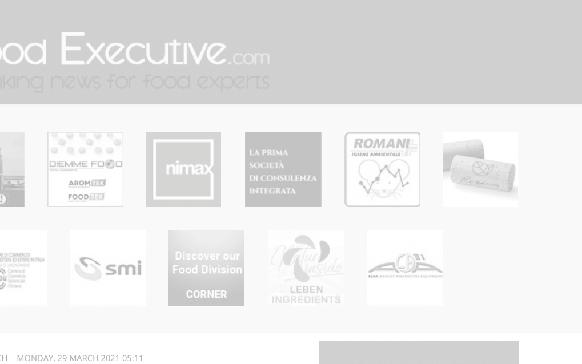
consumer trends 20 italian food & packaging technology - ciii (2023) - april
+ NEWS + INFORMATION www.foodexecutive.com FOODEXECUTIVE 1-4.indd 4 31/03/21 16:32
“RAPID” PUMPS
Sanitary - Self priming. Both for liquid and for thick products (Creams and Sauces).
“FARMINOX” FILTERS
Packingless plate filters. Working through paperboard filter-sheets.
made of stainless steel machined from bars, NO CAST PARTS, NO WELDINGS.
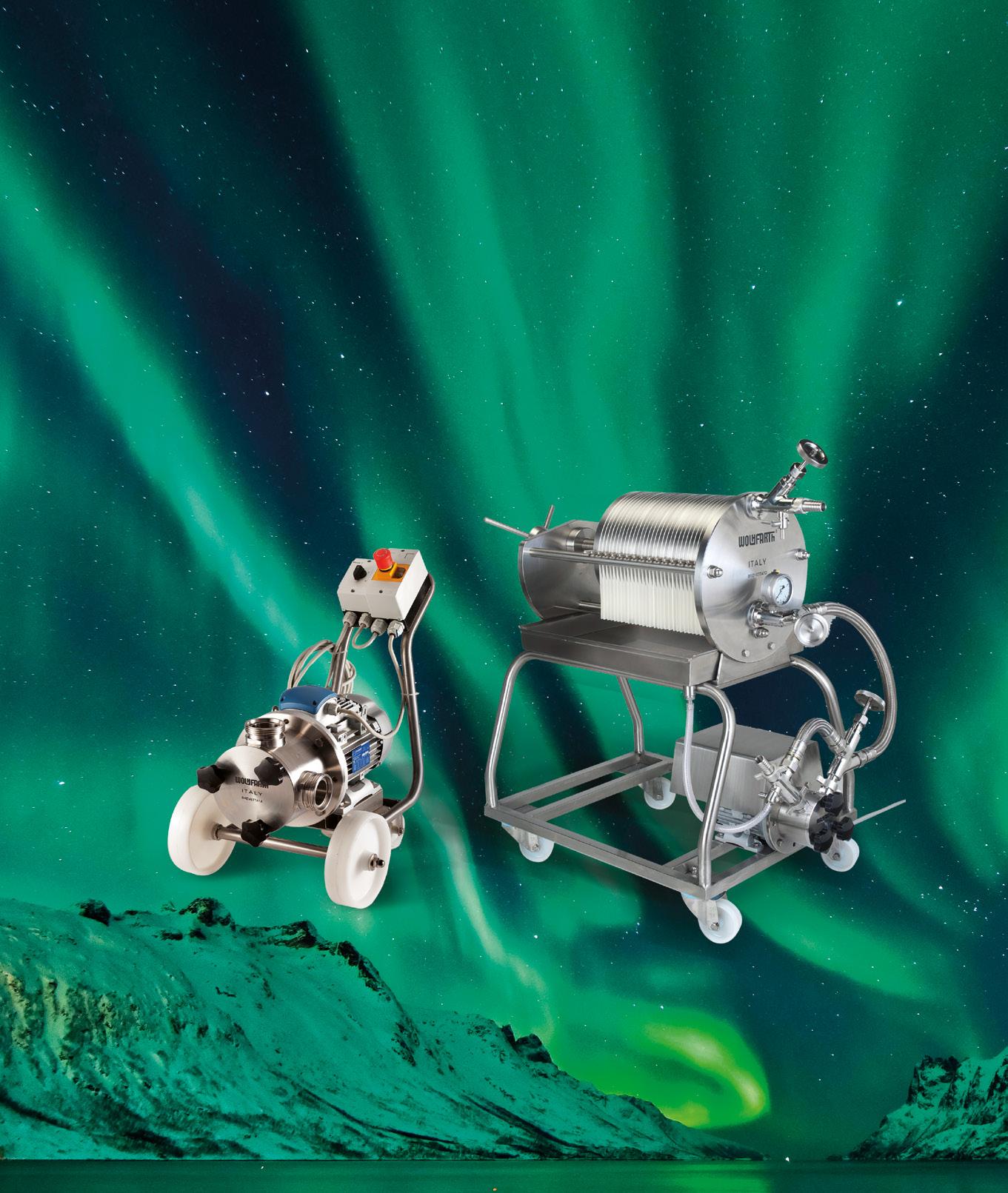
NEW BEGINNING! info@wolhfarth.it - www.wolhfarth.it V. Cavour, 31 - 26858 Sordio (LO) - Italy - Tel. +39 02 9810153 - Fax +39 02 98260169
DESIGN
THE MOMENT FOR A
HYGIENIC
for an easy cleaning SAFETY
FDA certified materials, suitable for the use in contact with foods. ENDURANCE
More consumers seek nutrient-dense foods while meat-reducing slows
Consumer interest in eating more nutrient-dense foods continues to climb, with 18% of people saying they look for more nutrient-dense foods – foods that pack in a lot of beneficial nutrients relative to their energy content.
“Compared to 2021, this was the eating behaviour that had the biggest increase in consumer interest,” says food industry expert Julian Mellentin. In a recent survey of consumers in five countries by consultancy New Nutrition Business, of which Mellentin is director, nutrient density was mentioned by 18% of consumers, compared to 12% in 2021.
Of the five countries surveyed (USA, UK, Australia, Brazil and Spain), Brazil had the highest level of interest in nutrient density, at 37%. Spain ranked second with 23%, and the UK scored lowest with only 7% of people interested in eating more nutrient-dense foods. Consumers aged under 34 are more likely to be looking for nutrient density than older consumers.
“In contrast, the trend of consuming fewer carbohydrates appears to be levelling off,” Mellentin adds. Across the five countries, 26% of respondents said they were trying to eat fewer carbs in 2022 – the same as in 2021.”
“Consumer beliefs about food and health have become increasingly diverse over the last 10
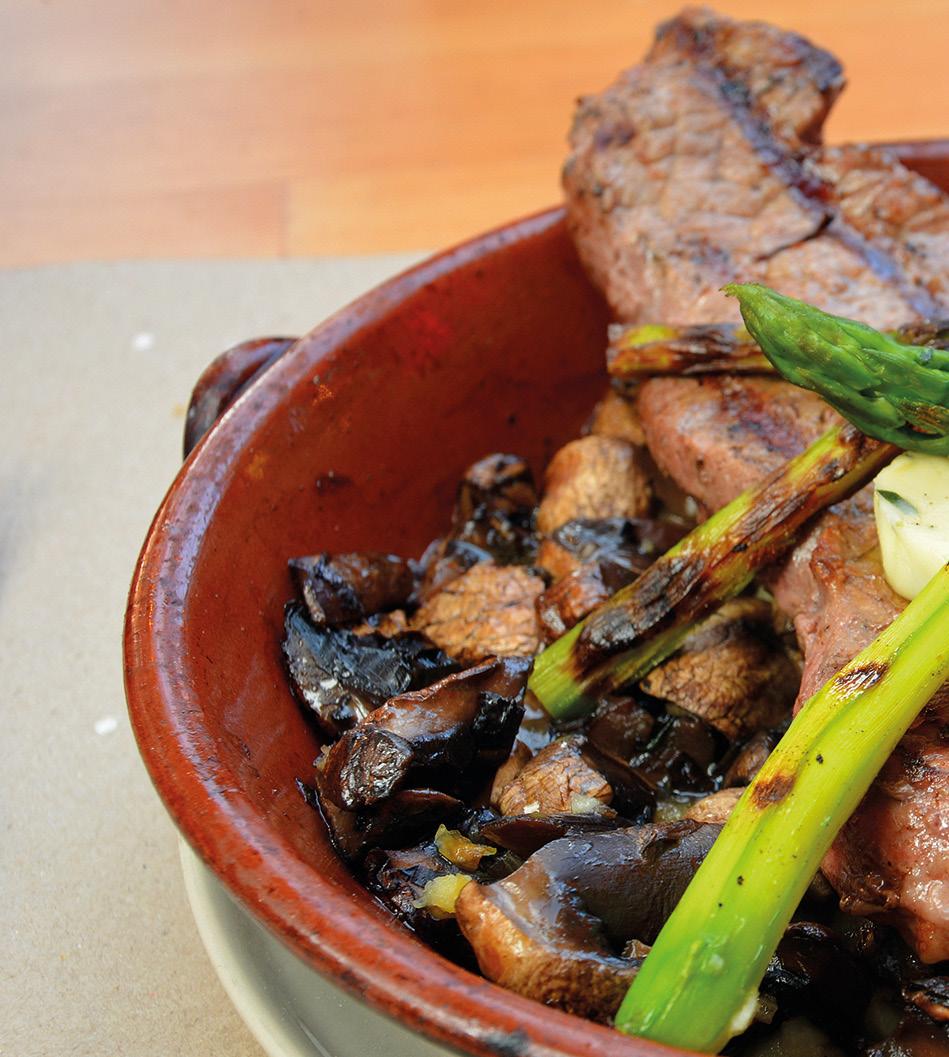
consumer trends 22 italian food & packaging technology - ciii (2023) - april
years,” Mellentin explains. “People do their own research online and try out new eating patterns to find out what works for them. And interestingly, most eating patterns reach a natural ceiling with about 25%-30% of consumers. With the exception of sugar reduction, very few become a truly mass behaviour.”
The trend to consume less meat, which grew very strongly from 2014 onwards, is also levelling off. In 2022, 24% of people said they were reducing their meat consumption, unchanged from 2020.
Brazil and Spain had the most meat reducers (31% and 30% respectively). The US scored lowest on meat reduction (18% of consumers). It’s a behaviour which is more common among consumers aged 55 and above than among younger consumers. “It seems counter-intuitive, but it’s what we have been finding for several years, as have many of our customers,” says Mellentin. “The idea that it’s the young driving meat reducing largely comes from lazy journalism.”
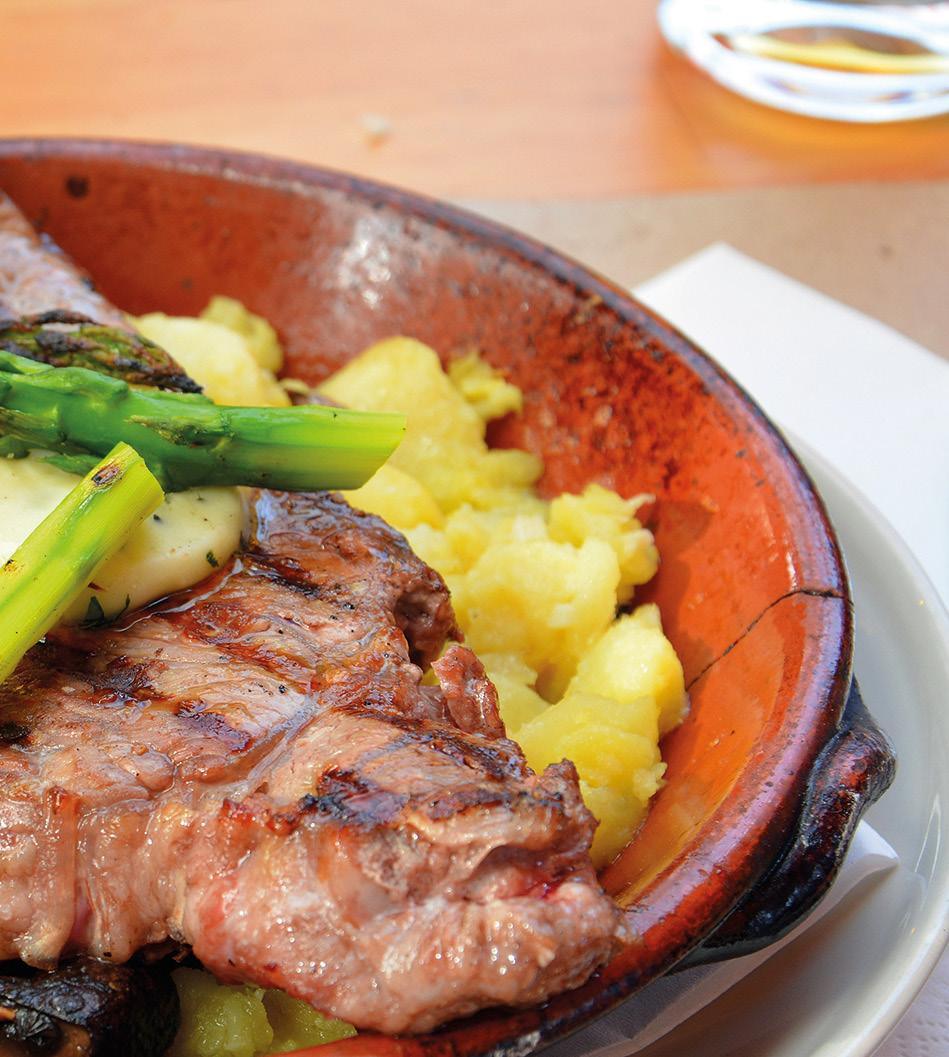
As a sign of the growing diversity of consumers’ health beliefs, there are more emergent new health interests showing up – concerns that are still niche, but which have been growing steadily over the past five years. Two examples are:
1. Eating to improve hormonal health – followed by 8% of consumers in the US, Australia and Spain, slightly more in Brazil, and 4% in the UK. “It’s an issue that matters more to women than men and affects wellbeing over the whole of their adult lives. It’s an issue that women often say the medical mainstream pays little attention to. An increasing number are managing their hormonal health through food and supplements.”
2. Also emergent is the avoidance of seed-oils – such as canola or sunflower – which is a concern for 6% of people, up from almost zero back in 2019. This growing interest relates to concerns about inflammation.
“These emergent behaviours are much more important for corporate strategy than veganism,” Mellentin adds. “A vegan diet is the choice followed by the lowest percentage of consumers in all countries – just 3%. Veganism has shown no increase since 2019. It’s notable that a topic which is often described by the media as growing is in reality a topic of least interest in the real world.”
consumer trends italian food & packaging technology - ciii (2023) - april 23
www.new-nutrition.com
FOOD PROCESSING
Food automation market worth 12.26 billion USD

According the market analysis agency MarketsandMarkets, the complex pattern of globalization and the changing dynamics of consumer consumption are revolutionizing the food processing sector.
While the consumer is shifting towards more advanced value-added food categories, there is also a growing demand for processing basic products such as fruits, vegetables and grains which require technologically
advanced equipment. Besides, the food processing and handling equipment demand is exhibiting strong growth, with the rising demand for prepared food products globally, changes in consumer lifestyles, along with a transformative leap forward in technological capabilities and increasing investment opportunities in the food processing industry.
AI and robotics are transforming the food industry automation process. According to the Robotic Industries Association and Association for Advancing Automation, orders of robotic systems by food and consumer goods manufacturers grew by 56% in 2020. The development of the hospitality industry, tourism industry, and the increase in the use of temperature-controlled storage equipment for perishable and processed food items drive the demand for foodservice equip-
24 italian food & packaging technology - ciii (2023) - april
ment in commercial kitchens. Increased adoption of robotics is shaping the global foodservice sector.
Food automation refers to the various automatic equipment used by manufacturers in the food & beverage industry and is a technology- and process-driven market. The growth of the food automation market is primarily driven by the following factors:
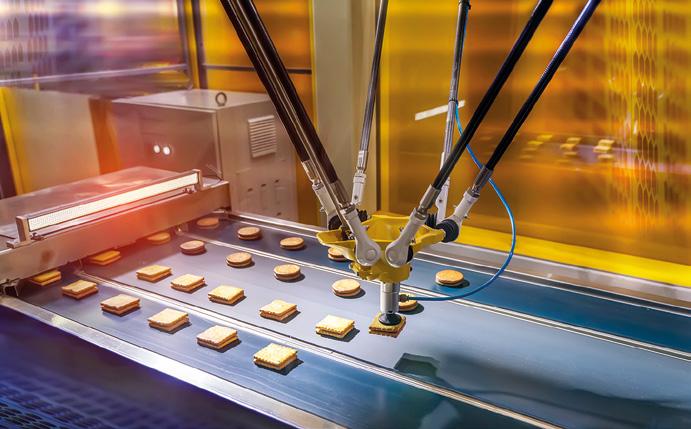
• Consumer shift toward processed food & beverage products
• Growth in investment in R&D activities for innovative products to attract consumers
• Strict regulations on foodbased products from various governing bodies
Automation Across the Supply Chain
Automation leverages technological solutions within the supply chain, boosts the output, and ensures continuity. Since the supply chain is an integral part of the production and distribution process, automation optimizes the farm to fork operation. As farmers and retailers become more aware of the benefits of automation, their eagerness to adopt these disruptive methods is on the rise. Various governments have also introduced tech-enabled systems like the Agricultural Market Information System (AMIS, a centralized platform that can be accessed by all authorized agencies to boost the transparency and continuity of the food market. The information stored on this platform is also used to make policy decisions and find effective resolutions for the existing challenges plaguing the food sector.
Robotics in Agriculture
Image processing is largely used in AI-driven software and hardware applications. For instance, in drones, AI is used to process multispectral images to monitor crop health or detect the spread of pests. Blue River Technology (a subsidiary of John Deere) uses machine learning to apply herbicides autonomously and accurately. Various agricultural robots (fruit picking, seeding, weed removal, pesticide spraying, and surveying) developed at present are being integrated with image processing technology. AI is being programmed to differentiate between fruits, weeds, and other plants using machine learning technology. Real-time data management and monitoring software used in agriculture also utilize AI. AI can process weather, soil, moisture, and temperature data together to help farmers in decision-making. In indoor farming applications, AI is also utilized in robots for maximum space optimization when moving pots and plants. It can also help create
seasonal forecasting models to improve crop productivity. For livestock, AI systems can deliver the exact quantity of feed required depending on the growth stage of farm animals.
Robotics in Food Manufacturing
Automation in food & beverage plants plays an important role in food safety, equipment safety and personnel safety. Automated equipment can monitor tanks and systems to help ensure cleaning, set off sophisticated alarms to alert if a product is out of the temperature safety zone and ensure systems aren’t over pressurized or at risk of rupture. For example, new/recent generations of automated dairy processing equipment can even lock out the wrong ingredients. Beverage processors are looking for new machinery that can be easily integrated into the production line and can be continuously integrated from one piece of equipment to another. For instance, GEA’s HOPSTAR Dry is a
food processing italian food & packaging technology - ciii (2023) - april 25
system for cold extraction of hop oils, and Germany’s Stortebeker Craft Brewery entered into an agreement in 2019, for homogenous beer production using fully automated, stabilized processes. The system besides ensuring quality, optimizes process time as well. HOPSTAR Dry, GEA has developed a process that significantly improves extraction efficiency – by 30 to 50% compared to a static process.
AI is being used in the food business to enhance supply chain operations by:
• Food standards surveillance
• Product testing at each level
• Managing inventories with accurate estimates
• Tracking of products from harvest to distribution
• Ensuring that staff adheres to basic hygiene standards
Robotics in Food Packaging
Automation is a key operational strategy within the packaging industry, wherein it is predominantly used in the palletizing and movement of materials. Automated packaging systems help
the company provide customers with improvements in efficiency and product consistency. Specifically, the consistent gauge or thickness of the film helps customers improve their production efficiency, product quality and reduce waste, resulting in enhanced sustainability.
Robotics in Food Service
Autonomous food delivery attempts to address the growing industry. The restaurant industry has been undergoing unprecedented changes recently, especially since Covid-19 paralyzed the industry. As the cost of technology is dropping, even small businesses are incorporating robotics and AI. A robot named Flippy was used by the US-based burger eatery CaliBurger to flip hamburgers. The Flippy robot resembles a miniature, motorized cart with a 6-axis mechanical arm attached to it. Pizza Hut Canada partnered with Serve Robotics, a leading autonomous sidewalk delivery company, and launched a pilot program in September 2022. The partnership to provide Vancouver customers with the
convenience and reliability of zero-emissions robotic delivery, shaping the future of sustainable, self-driving delivery.
Process Automation: Key to Modern Brewing
Modern brewing industry necessitates hygiene and quality standards, thus implying the significance of process automation. AI, the Internet of Things (IoT), automated systems, robotics, and sensors are thereby becoming essential for the modern brewing industry. Process sensors enable increased automation in the beer production process, improving the efficiency of the process, quality control, and the quality of the final product. For instance, temperature sensors are used to monitor the temperature of the mash during the brewing process alongside monitoring the temperature of cleaning agents, thus regulating the process. Baumer provides smart sensor solutions to reduce complexity and optimize the process in brewing industry, catering to the hot brew house environment, the hygienic and cold requirements in cellars, and the silos.
Digital Transformation in the Food Industry Is Imperative
COVID-19 pandemic held the existing supply chains to the test, and disruption occurred across the industry. Innovative technologies like artificial intelligence (AI), Internet of Things (IoT) devices and the blockchain have emerged and been adopted by food and beverage businesses. One classic example is pandemic induced pressure for
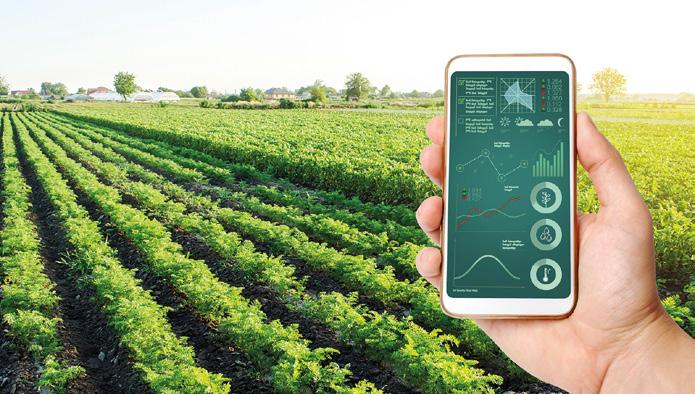
food processing 26 italian food & packaging technology - ciii (2023) - april
meat processors to implement robotics. Tyson Foods invested USD 500 million in technology and automation in the past three years, including the opening of Tyson’s Manufacturing Automation Center in August 2019. There is a certain push for more robots in factories to debone and filet meat. The future of meat manufacturing probably includes 3D scanners and automated cutting, with Tyson, Smithfield, Cargill and JBS looking at ways to incorporate more automation.
Automation has streamlined the process of food packaging for various uses, including palletizing and depalletizing, packaging and repacking, pick and put, grading and sorting, processing, logistics, etc. Automation results in improved product quality, reduced labor cost and higher safety, process efficiency, predictive maintenance, and enhanced food

safety, and therefore is the key for smart food processing and handling. Besides, waste reduction has long been a key focus area. Automation can help food businesses improve their supply and demand management. An







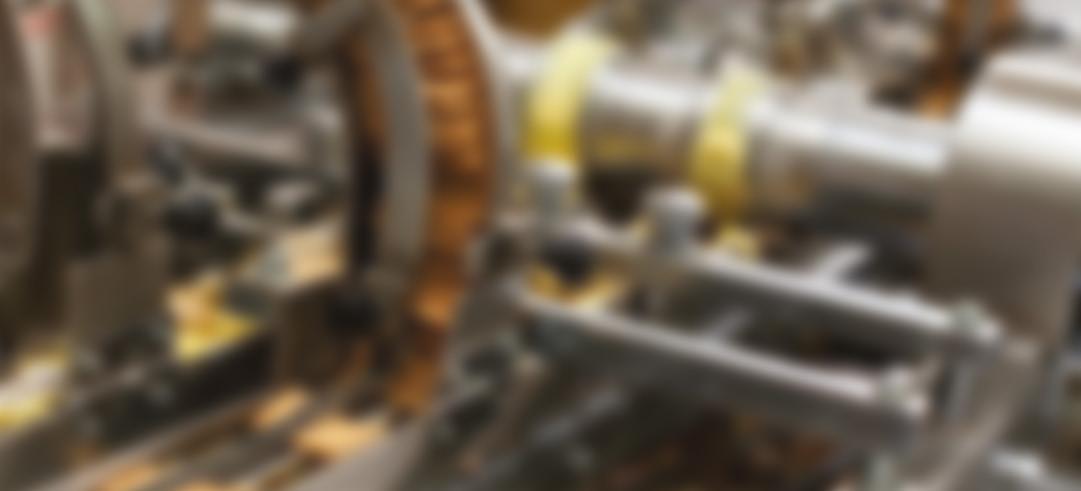


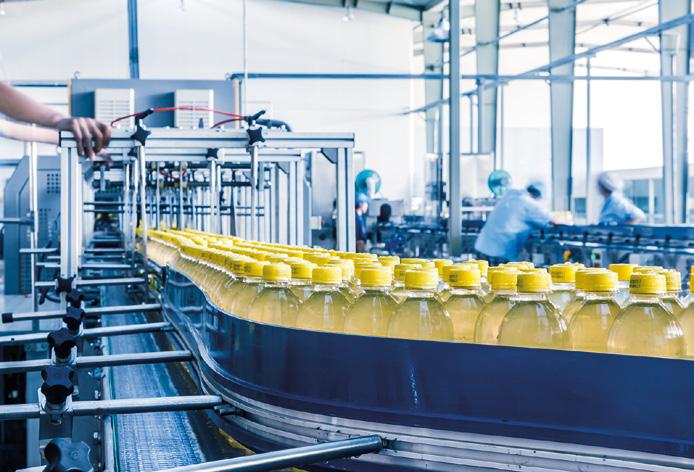
end-to-end solution, such as a food-specific ERP system, can provide accurate data on the amount of stock needed based on real-time demand.
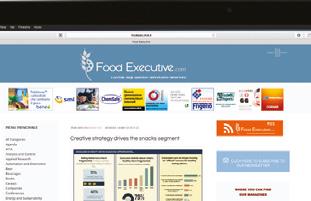
www.marketsandmarkets.com


















food processing
Agenda AITA Analysis and Control Applied Research Automation and Electronics Beer Beverages Books Cereals Companies Conferences Energy and Sustainability Feed Food Food Safety Health and Wellness Hygiene Ingredients Laws Machines and Equipment Marketing Milling News Nutrition Packaging Pasta Soft Drinks Spirits Wine www.foodexecutive.com the latest news on the food&beverage world PUBB FOODEXECUTIVE NEW ITA 1-2.indd 2 16/05/18 11:32
The world of continuous melting inaugurates a new era
Tecno3 brings the sector of continuous melting into an increasingly technological future.
A team of professionals, researchers and engineers have been designing the new continuous melter for two years.
The innovative scope of this study immediately catches the eye: a single plant for processing raw materials of different types: within the family of fats, cocoa, butter and dairy products.
Tecno3 has always distinguished itself by the disruptive technological drive, strengthened by the awareness that innovation always starts from listening to the needs of its customer. The world of the food industry will therefore not only be pleased to see its demands met, but also surprised to admire all the new potential.
If the primary need was therefore to enjoy more compact and smooth solutions, the pro-
duction capacity of the continuous melter is certainly moving in this direction.
The new melter is capable of melting up to 1,000 kg of product, through a mechanism of crushing and melting the blocks.
Adding 3 phases it is also possible to go further, reaching 3,000 kg of product.
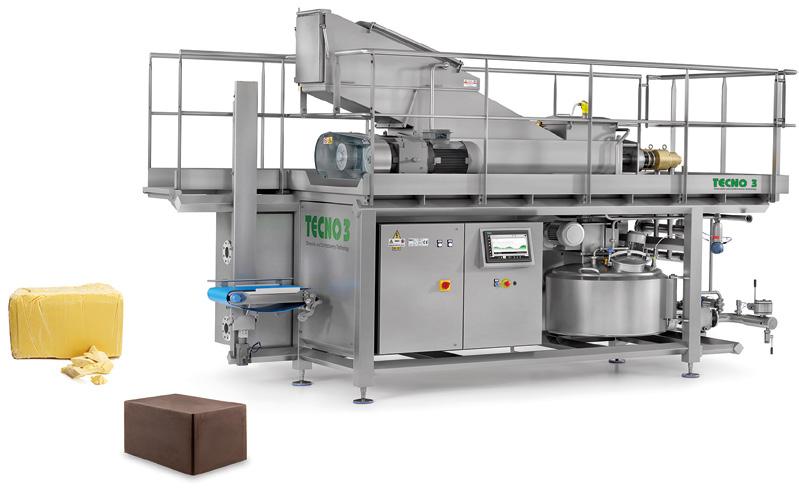
The phases that compete in sequence are as follows:
1. Insertion of an additional crushing unit;
2. Crushing and grinding of the last fragments;
3. Featuring of the final melting unit for chips.
Optimization does not only pass through productivity, but also through the reduction of the footprint. Thanks to the integration of the thermoregulation system within the system it is pos-
sible to gain up to 50% of space. But not only that.
The time to install the machine within the production layout also halves.
A sign that the future of melting is ahead in the name of progress.
Another important novelty concerns the cleaning system.
In fact, the innovative washing device, allows a time saving in the face of a higher yield, thanks to the alternation of two types of fluids, depending on the needs.
• Washing with preheated water followed by a perfect drying system that also provides for sanitation for the dairy world.
• Wash with fats and oils that can be used when the ingredients in the plant are compatible with the next recipe. In this way, raw materials are optimized while minimizing waste.
Finally, the great theme of safety finds adequate and concrete answers in a new type of approach, smarter. Control barriers leave room for radars signaling the risk area. No needing to remove the protective grids anymore reduces cleaning and maintenance time. All this always respecting the rules relating to safety parameters.
The new continuous melter is also able to receive input from the operator in a much more intuitive way. It is talking about usability, which, in the age of the Internet of Things, cannot ignore the values of simplicity and speed.
food processing 28 italian food & packaging technology - ciii (2023) - april
The new continuous melter designed by Tecno3.
In the human-machine dialogue function, the operator plays an important role. Depending on the information available to the people, they must perform actions that condition the smooth operation of machines and systems without compromising safety and availability. It is therefore essential that the design quality of the interfaces and the dialogue
function be such that the operator can be assured of safe operation under all circumstances.
And this is what the new continuous melter signed Tecno3 promises.
(Tecno3 - Via Mastri Cestai 2 - 12040 Corneliano d’Alba - CN - Italy - Tel. +39 0173 610564 - e-mail: a.mattis@tecno-3.itwww.tecno-3.it)
Meet Sarp at Interpack
Interpack show, which will be held in Dusseldorf, Germany, from 4th to 10th of May 2023, is one of the most important international appointments for the food and beverage industry and Sarp could not miss it! The occasion is perfect to discover which Sarp solutions are perfect for your business.
Since 1986, the company has been designing and manufacturing spiral belt conveyors for food processing that mainly, but not only, involve freezing, cooling, and pasteurization.
The main goal is to provide a customized solution that can guarantee excellent performance in terms of:
• Organization of space: the development in the height of the machine which benefits from an adaptable space between the layers, guarantees compact solutions with high performance. The main footprint of the equipment can be customized and used to find convenient room for treatment systems that can be integrated into the main structure.
• Easy cleaning and reduced maintenance: each section of
the machinery is easily accessible, to ensure thorough sanitization. Furthermore, high-temperature cleaning systems designed to answer to customers’ specifics requirement are integrated into the spiral or the insulating room, to guarantee maximum hygiene, with minimum effort.
• Best performance: the study of air flows is essential to make treatments homogeneous and suitable for the different types of products, whether packaged or loose, small or large.
What will be presenting at Interpack? Sarp is going to show
its cooling spiral for food products, which can be fitting for bakery products, dairy, meat, or fruits and vegetables.
The cooling treatment is performed at room temperature or at a controlled temperature with the use of an insulating room. The studies on the airflow not only allow the temperature to remain uniform in the surrounding environment but also allow the surface of the product to be correctly pervaded by the airflow, to make the heat treatment faster and more efficient by preventing moisture development.
Sarp focuses on energy saving, giving you the possibility of combining the advantages of an insulated chamber with an evaporation system that uses and filters the external air, saving production power and optimizing the air exchange.
Come and visit Sarp booth: Hall 5 Stand 5D04.
(Sarp - Via Montebelluna di S. Andrea 43 - 31033 Castelfranco Veneto - TV - Italy - Tel. +39 0423 482633 - email: sarp@sarp.itwww.sarp.it)
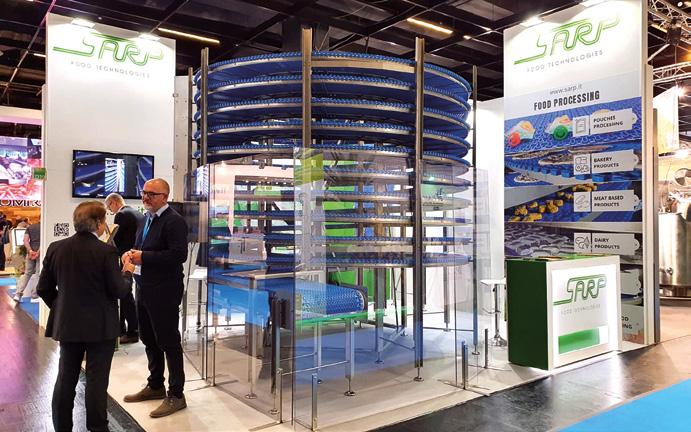
food processing italian food & packaging technology - ciii (2023) - april 29
No compromise in Food Safety
At Ammega, Food Safety is of utmost importance for the sake of consumers’ and their health. As a parenting company, it is steadfastly committed to this idea and take steps to continually develop solutions that raise the bar for hygienic conditions and safety, thus making this House of Brands the ultimate Food Grade systems provider.
Ammega Group has developed a strong brand image of a responsible leader who genuinely cares about the welfare of their clients. Top tier industry experts, engineers, and designers are its the true pride. Those exceptional talents are equipped with the highest technological equipment to regularly raise the level of hygienic practices on your production line.
The Ammega Group meets the Food Safety standards at the highest levels by combining the assets of all family brands. As a result, Ammega solutions abide
by international guidelines for the safe handling of food, including those set by the American FDA, the European USDA, and the EHEDG.
Megadyne – member of Ammega Group - understands the critical importance of Food Safety standards in power transmission products. Commitment to this concept is unwavering, and widely noticeable through Megadyne ground-breaking belts supplied with contamination prevention attributes.
The offer consists of:
XMD Timing Belts – Belt and cleat fragments from all Megalinear XMD and Megaflex XMD belts can be spotted by metal and x-ray detectors. A special hygienic design features sealed edges and the use of blue as a contrast colour.


Megalinear FC – matches the power and precision for synchronous conveying (balanced tracking, low running tension and low vibration) meeting the criteria where food contact is required: MAXIMUM RELIABILITY, TOTAL HYGIENE.
Megapower FC –Designed for use in both dry and wet applications Megapower FC urethane made with industry desirable blue color offers good chemical resistance and can be used in applications where belt cleaning is required
Visit us at Interpack
The entire Ammega group encourages to join the company at Interpack Exhibition to discover the Ammega Food Safety Solutions.
(Ammega Italia - Via S. Lucia 114 - 10075 Mathi - TO - Italy - Tel +39 011 9268052 - Fax +39 011 9241746 - email: info@megadynegroup.com - www. ammega.com)
food processing 30 italian food & packaging technology - ciii (2023) - april
Megadyne
Megadyne Blue-FC (Ammega).
Megadyne XMD timing belts (Ammega).
SAFETY!
Food safety is of paramount importance to protect consumers and their health. As Megadyne, we take up measures to continuously develop solutions improving the level of hygiene and safety in compliance with ISO 22000, EC 1935/2004, EU 10/2011 and FDA standards: Metal & X-Ray Timing Belts, Mega ex FCM, Megalinear and Megapower FC (Food Contact). Contact us to make your food production safer.

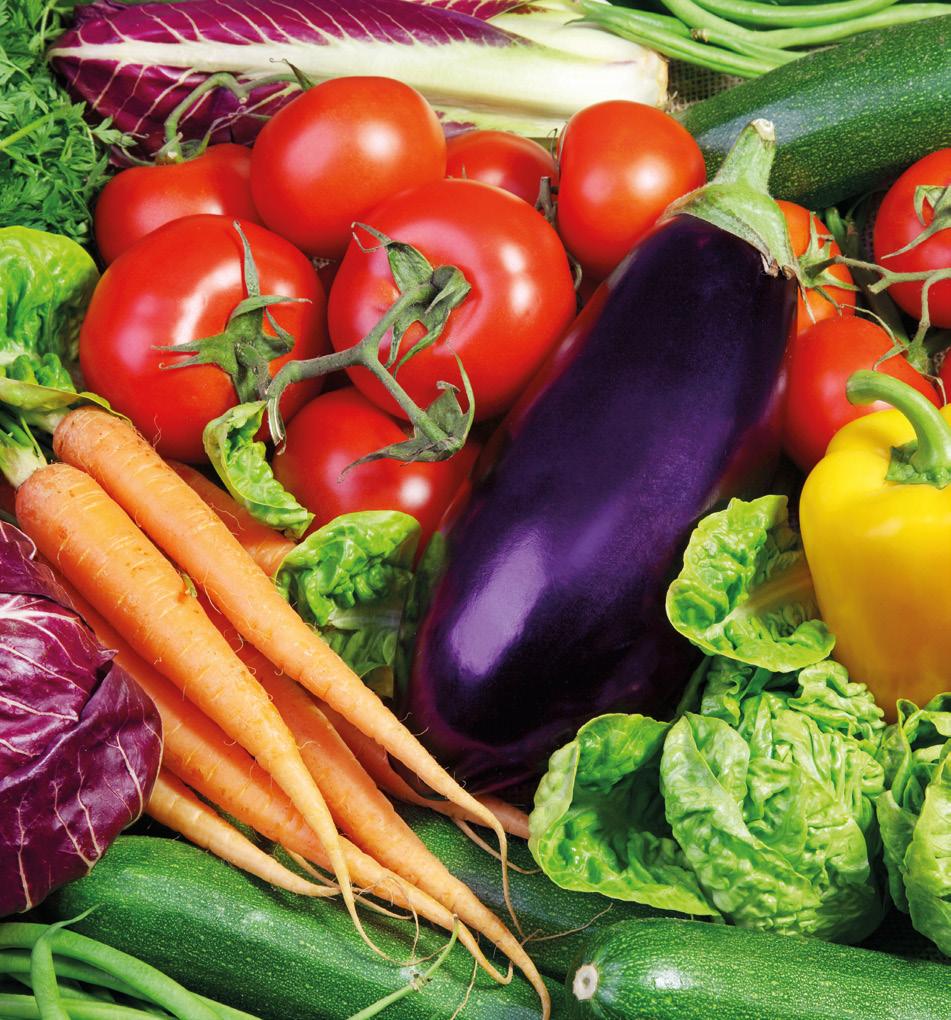
www.megadynegroup | info@megadynegroup.com
HALL 4 STAND E44 04-10|05|2023


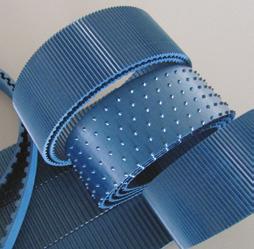
DÜSSELDORF
WE MAKE YOU BUSINESS MOVE
Scan to watch the video

NO COMPROMISE IN FOOD
Member of Ammega group SUBSCRIBE
Combination of plasma processing and pulsed electric field on the characteristics of yoghurt drink
In a study published in the Journal of Food Processing and Preservation, the properties of the milk treated with combination of solution plasma (SP) processing and pulsed electric field (PEF) for different periods (5 and 10min) was investigated by Turkish Researchers.

biotic viability, texture and sensory quality in terms of consumer preference were investigated. It was determined that the viscosity and dry matter values of the solution plasma-treated samples were lower compared to the samples produced by heat treatment, and these values decreased further with the increase in plasma application time. It was also found that the maximum increase in L* and b* values of all samples during storage was in the samples treated with plasma for 10min. The viability of the probiotic bacteria in probiotic Ayran samples were determined to be within the
therapeutic level (>6.27 log10 cfu ml-1) with higher scores for sensorial qualifications.
Consumers’ expectations of more nutritious and microbiologically safe food have enabled the development of new processing technologies. Probiotic fermented milk products are products that provide health benefits in the prevention of gastrointestinal diseases, regulation of metabolism, and stimulation of the immune system. The processing of these dairy products with non-thermal technologies provides advantages in preserving their functional properties.
Simplified model of airflow and heat transfer in a pallet of food product generating heat
The microbiological, physicochemical, and sensory properties of the probiotic yoghurt drink (Ayran) produced from these milks were determined during storage. PEF was performed at voltage 3500V, repetition 17,000Hz, and pulse width 2.58mus on the raw milk. Lactobacillus acidophilus and Bifidobacterium animalis subsp. lactis probiotic cultures were used in production with conventional yoghurt bacteria
Streptococcus thermophilus and Lactobacillus delbrueckii subsp. bulgaricus. In addition to the pro-
During storage, pallets of food product generating heat (e.g., cheese, fruit, and vegetable) are exposed to low velocity ventilation. In addition, the boxes have often little perforation. Therefore airflow is weak inside the boxes located downstream of the pallet; and if the product generates heat, its temperature can rise above the recommended one.
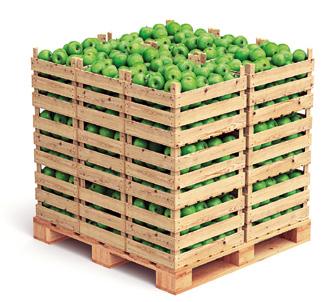
Computational fluid dynamics modeling can predict these phenomena but needs an expertise of numerical fluid flow, a detailed description of product and packaging and leads to expensive computational costs. A simplified model was developed by French
Researchers based on a hydraulic network analogy and the results were published in the Journal of Food Process Engineering.
Given the vent holes areas of the boxes and the heat generation, it predicts the global air flow
food processing 32 italian food & packaging technology - ciii (2023) - april
(flow through the box faces) and the product temperature. The predictions are in good agreement with experimental data. The software (Matlab executable) is easy to use and needs only some seconds to compute. It can be used to predict temperature evolution along a cold chain and
to improve packaging and logistic operating conditions. Practical applications. Based on a on a hydraulic network analogy, a simplified zonal model of airflow and heat transfer in a pallet of food generating heat is built with the Matlab software. It takes into account the vent holes areas of the
boxes and the heat generation, and allows predicting the distribution of air fluxes through the box faces and the product temperature. The major advantage of this model is that it is easy to use and needs only some seconds to compute. Therefore, it can be easily used in industrial field.
New technology to produce meat analogues with soy, pea and gluten

Modern plant-based meat analogues should have a pronounced fibrous structure as an important characteristic. In a study published in Innovative Food Science and Emerging Technologies journal, Swiss Researchers demonstrate that the combination of high moisture extrusion cooking (HMEC) with well-defined shear during cooling is a new process to make fibrous products using common meat analogue ingredients.
The shear was applied via a cooling die attached to the extruder that was specially designed for that purpose. The in-house developed cooling die consists of two sequential rotating inner cylinders with a separate drive-unit in an outer cylinder that can be thermo-regulated.
Three rotational speeds of the inner cylinder, 45, 75 and 105 min-1, were tested for pea protein isolate, soy protein concentrate, vital wheat gluten and blends of pea or soy with gluten. A large effect on macro-and micro-texture and anisotropy index was found when the concentra-
tion of gluten was increased. The different ingredients and blends had different optimal conditions and reacted differently to the applied shear. Interestingly, the angle of the fibers observed in the samples differed at the different rotational speeds. This was attributed to the shear thinning behavior of the plant proteins and the velocity gradient
in the rotating die, arising from the temperature and viscosity gradient. The ability to change the shear rate as an independent parameter in the rotating cooling die is unique and allows texture adjustments during processing. This is an important improvement for industrial HMEC and opens new product design possibilities.
food processing italian food & packaging technology - ciii (2023) - april 33
Whole peanut milk production
A novel whole peanut milk (WPM) was prepared by an innovatively invented industry-scale microfluidization system (ISMS) at different pressures (0-120 MPa) developed by Chinese Researchers.
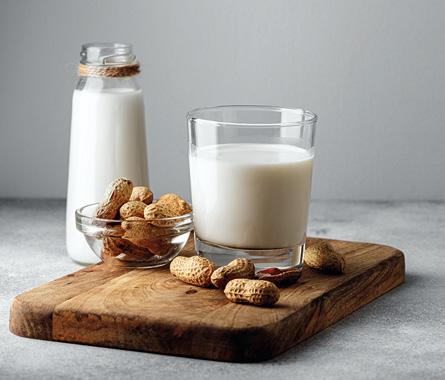
The effects of pressures on the physical properties, microstructure, and flavor properties of WPM were investigated. With the increase of ISMS pressure, the physical stability of WPM was effectively improved. The WPM processed at 120 MPa possessed relatively good physical stability without delamination for 67 h at 4°C. The particle size of WPM decreased (to ~25 μm at 120 MPa),
and the distribution of particle size changed from polydisperse to monodisperse. Meanwhile, ISMS exhibited an upward trend on apparent viscosity with the increased pressure. The confocal laser scanning microscopy indicated the globular protein was broken and deformed gradually, then, bound to the oil droplet with increased pressure. The protein of WPM120 even formed a three-dimensional network to wrap oil droplets under the observation of cryo-scanning electron microscopy. Furthermore, the WPM120 exhibited the highest content of flavor substances based on GC-MS analysis.
This Chinese study published in LWT - Food Science and Technology journal aims to provide a feasible method for preparing whole peanut milk by using a green physical treatment.
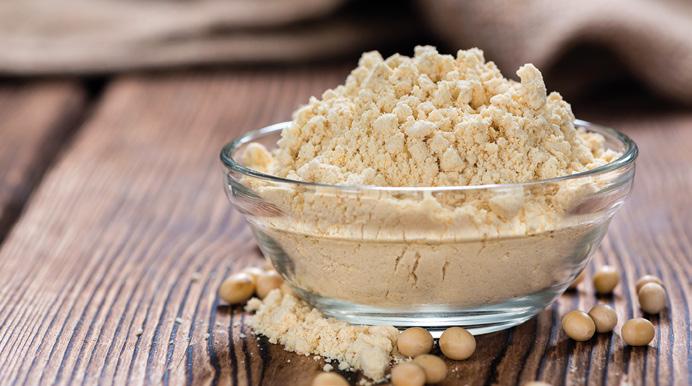
A novel technology for high-moisture textured soy protein
Although the demand for meat analogues is increasing, aspects of the analogues’ textural characteristics continue to be problematic. To solve these problems, a new technique for applying vacuum packaging and pressurized heat (i.e., vacuum-autoclaving) to low-moisture TSP has been proposed by South Korean Researchers. An analysis of the morphological characteristics of the analogues showed that the vacuum-autoclaving treatment affected the packing structure of the materials. The density was increased by about 0.25g/mL by vacuum-autoclaving, and the movement of water was restricted by the formation of a packed structure. The disulfide bonds increased by 3muM/g or more and the beta-sheets and alpha-helixes
increased by 7 % or more; this contributed to structural changes due to protein aggregation. The texturization index and hardness tended to decrease by more than 30 %, indicating a decrease in overall
structural strength. The newly proposed technology has potential for use in the commercialization of meat analogues. The results were published in the Food Chemistry journal.
food processing 34 italian food & packaging technology - ciii (2023) - april
Interpack/Düsseldorf, 4-10 May 2023, Hall 14.D01

CONCEPT MACHINE VISION PACKAGING AUTOMATION
Schedule an appointment now for your personal tour.
https://www.schubert.group/en/interpack-2023-en/
THE FUTURE OF PACKAGING.
PACKAGING TRENDS
Food: packaging against waste
Food packaging today is so much more than just protecting the individual product. It is true that the most important function, from the moment of packaging throughout transport, storage and retail, is to ensure that the contents arrive in private households in one piece. But design and material also have a large influence on buying decisions, because more and more people want food that comes in a more sustainable packaging.
Without any packaging, however, most foods cannot be transported, stored or sold, and in their unpackaged state they would prematurely spoil. The protective wrapping keeps harmful influences like light, oxygen or humidity away and prevents soiling or damages. An extended shelf-life is a meaningful contribution to reducing food waste.
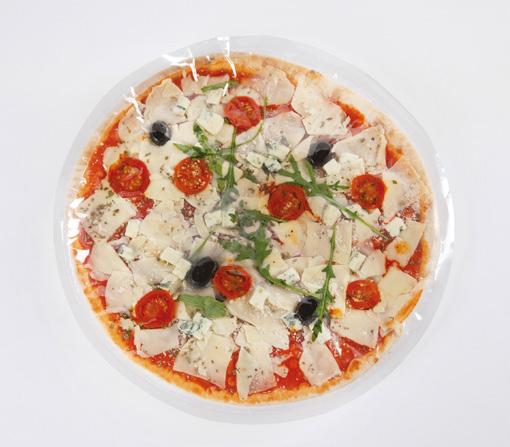
Along the entire value creation chain, globally more than 930 billion tons of food are thrown away every year. This figure comes from the last report by the United Nations Environment Programme (UNEP). The Swiss society Food Waste even goes so far as to say that on average, a third of all food is lost or goes to waste on the way from the field to the plate. It is therefore part of the UN Agenda 2030 to cut the worldwide waste of food per capita in half until 2030. The authors of the Food Waste Index Report 2021 also assume that eight to ten percent of global greenhouse gas emissions stem from food which is not consumed. Packaging can help to curb this wastefulness.
Following the “Sustainable Development Goals” of the United Nations is also the SAVE FOOD Initiative, which was founded in 2011 by Messe Düsseldorf, the FAO and interpack. Their goal is to create public awareness for the issue and to develop counter
strategies and solutions in cooperation with politics, society and the industry. A special focus is placed on innovations from the packaging industry. And so, a current research project by SAVE FOOD is looking for answers to the question how biodegradable food packaging could be made from food waste or from by-products of food production.
Combining protection and sustainability
But packaging is not only there to extend freshness and shelf-life. Consumers are increasingly demanding environmentally friendly packaging. It is supposed to be recyclable or made from sustainable
36 italian food & packaging technology - ciii (2023) - april
New recyclable PA/PE film is also suitable for convenience foods (allvac).
materials, yet offer optimal protection for perishable products. And this means that especially food packaging today is a real high-tech product. For example, the company allvac Folien GmbH has developed an eleven-layer polyamide/polythethylene food wrap which is fully recyclable and for this has been awarded certification valid throughout the EU by the cyclos-HTP institute. “Offering no eco-friendly packaging solutions is no longer an option. The pressure on food manufacturers simply is too great.” says Dr. Andreas S. Gasse, CEO of allvac Folien GmbH. For aroma-proof food packaging, suitable materials are polyamide films with so-called bi-axial orientation, used for example to package oily, fatty foods or frozen foods. The demand for these films, which owe their special properties to a certain stretching process, continues to rise and so does the demand for relevant film stretching lines. One manufacturer of such lines, interpack exhibitor Br ü ckner Maschinenbau, also focuses on greater efficiency while producing the films. From a mechanical engineering perspective, this is achieved through less use of resources, less consumption of energy and a “zero waste” policy in film manufacture. Br ü ckner has now developed matching concepts for factory lines.
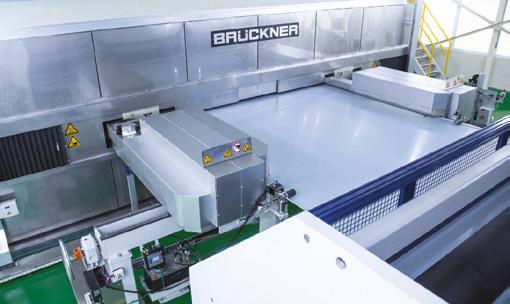
Recyclates with food contact
Greiner Packaging already uses packaging solutions made of up to 100 percent PET recyclates, so-called rPET, and wants to demonstrate that this is what the food packaging of the future could look like. With the help of the heat-resistant material rPET HTS, in the future, recycled PET is said to be
usable even for products that require sterilization through heat. The packaging manufacturer has also developed a self-separating cardboard-plastic-combination which is supposed to make recycling easier. This is achieved by the cardboard wrap, which stabilizes a plastic cup manufactured with thin walls, already separating from this cup by itself during the waste collection process. Cardboard and plastic can thus already be sorted into the correct flow of material during the first separation process, meaning before the packaging even reaches the recycling plant.
PET recycling is a long-established process and provides recyclates for new food packaging. But other plastics, too, can be reused to manufacture packaging for food. With the chemically recycled polyamide Ultramid Ccycled, for example, BASF offers new possibilities for the development of sustainable
packaging especially for the fresh goods sector. The chemical group is exploring new opportunities to use plastic waste in its “ChemCycling” project and is further developing pyrolysis technology which is used to gain new resources from plastic waste which would otherwise be energetically recycled y or sent to a landfill. “A thermochemical process lets our partners gain recycled raw materials from old plastics, which are then fed into the BASF system. By looking at the mass balance, the raw material can be tracked to certain products, for example Ultramid Ccycled. This helps to replace fossil resources and is an important
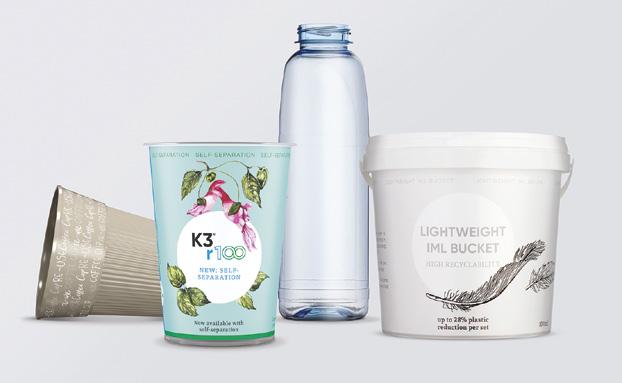
packaging trends italian food & packaging technology - ciii (2023) - april 37
The demand for film stretching lines to produce films with bi-axial orientation from polyamide is increasing. (Brückner Maschinenbau).
Consumers want more solutions that “reduce, reuse, recycle” (Greiner Packaging).
step towards a circular economy. As chemically recycled plastics are equal to new products with regard to their quality and safety, the range of sustainable plastics which can be used to package fresh goods is increasing”, says Dr. Dominik Winter, Vice President of the European polyamide business at BASF.
Automating the packaging process
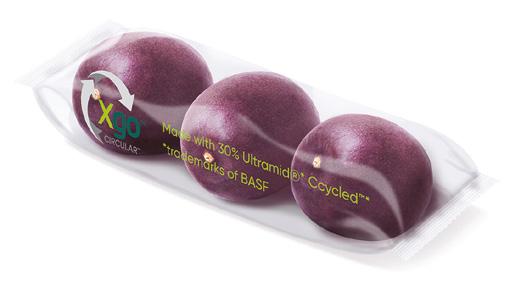
Not only the packaging producers, the machine manufacturers have also long since adapted to the new demands. For example, recently all machines by Syntegon used for packaging food are able to also process sustainable materials. For one, carton erectors now also produce paper trays for biscuits as an alternative to conventional plastic trays. Vertical tubular bag machines as well are processing both plastics and paper-based materials. They produce for example pillow bags for frozen goods and stand-up pouches or doy bags for dry foods.

The shift within retail towards e-foods and the year-round need for fresh food place high demands on the flexibility of producers and manufacturers. One such solution comes from the Schubert Group and utilises robot based packaging machines. The robots were developed by the company itself and enable automation with optimum harmonization of packaging processes. They take fresh products, for example sausage or baked goods, directly from production and place them into primary packaging like trays, flat bowls or tubular bags. Often, special tools are necessary, which are adapted to the shape of the product and suitable for hygienic use in the food industry, and for which Schubert has developed its 3D printer Partbox. This allows customers to manufacture parts that are ready as quickly as possible, right on their own premises. This way, defective parts can be quickly replaced and customers can produce new formats for changed products themselves. Schubert also supplies the matching printing material plastic Partbox Black. It conforms to food hygiene standards, has good mechanical properties and a high resistance to temperature.
Marking compostable film without printing
In order to provide optimum solutions to companies for coding and marking their food packaging, at the Domino Laser Academy in Hamburg, experts from the company are researching and experimenting with new substrates. “We spend a lot of time analysing new packaging materials. Due to the new European legal requirements for
packaging trends 38 italian food & packaging technology - ciii (2023) - april
The adapted protective atmosphere inside the packaging maintains the quality of fruit for a longer time (BASF).
All Syntegon machines used for packaging food have recently been made able to also process sustainable materials (Syntegon).
With the 3D printer Partbox, manufacturers can produce tools and spare parts on their own premises (Schubert).
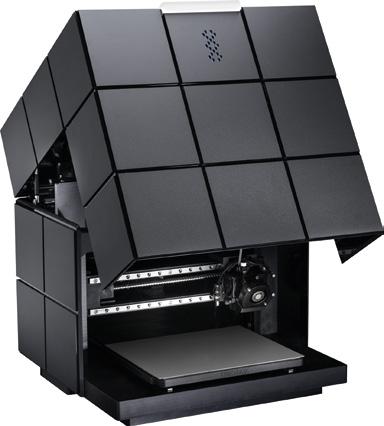
or affecting the properties of the moisture barrier. The print-free coding method does not require additional materials on top of the compostable substrate, which should make gaining certification for the final packaging much easier.
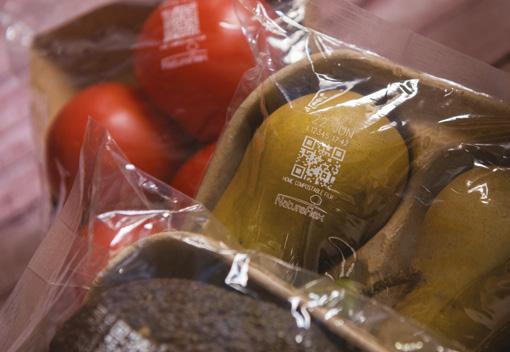
No hygiene is no option
Packaging manufacturers in the food industry are obliged to follow strict legal regulations which among other things demand a high level of hygiene. But hygiene is more than just cleaning and disinfecting. Many applications, for example in the food sector, use compressed air. If this comes into direct contact with food or is used for cleaning, it must not

recycled plastics, around 95 percent of the food packaging samples we need to test are recycled or recyclable plastics. Our fibre and uv lasers offer many good solutions for coding these substrates. We are however convinced that in the coming years, the demand for compostable solutions will increase. We therefore want to be prepared to offer our customers relevant advice and solutions for these new materials”, says Dr. Stefan Stadler, team leader at the Domino Laser Academy. According to this focus, the laser team has tested the compostable NatureFlex film products by the Japanese company Futamura regarding their suitability for laser coding. The laser produces a crisp, white code on the film without damaging the integrity of the original film, changing the chemical composition,
be contaminated with germs, either. SMC Deutschland has developed a new filter for bacteria that meets the strict hygiene requirements of the food industry. With a filter performance of 99.99 percent, it makes sure that international food standards can be met. This applies to the use of compressed air to open or keep open packaging during filling, for cleaning off residual food, powder or dough, or blowing nitrogen into the packaging to prevent food from oxidising.
The food sector is among the most favoured target groups of visitors to interpack, and this shows in the breadth of their presentation. At the world’s leading trade fair for Processing & Packaging in D ü sseldorf from 4 to 10 May 2023, visitors can discover which sustainable solutions for the future the food industry has ready. The food industry is mostly located in Halls 5 and 6 as well as 11 to 14. Further information on interpack is available at www.interpack.de
packaging trends italian food & packaging technology - ciii (2023) - april 39
Crisp and clear: QR code applied by laser to a compostable film (Domino Germany).
A new filter for bacteria made by SMC Deutschland drastically reduces contamination (SMC Germany).
Electron beam irradiation of vacuum-packaged pork
A Chinese study published in Meat Science journal aimed to explore the effects of different levels (0, 8, and 12 kGy) of low-energy electron beam (LEEB; 0.2 MeV) on the quality and shelf-life of vacuum-packaged pork stored under chilled and superchilled conditions for 30 days.
LEEB irradiation promoted lipid and protein oxidation, regardless of the levels used. Combined 8 kGy LEEB irradiation with superchilled storage significantly elevated a* values and preserved acceptable sensory characteristics of pork until day 30, unlike the other treatment combinations. This synergistic treatment also significantly reduced total viable counts and total volatile basic nitrogen contents, and thus extended the shelf-life of vacuum-packaged pork to >30 days, which may be due to the antibacterial effects on Photobacterium, Carnobacterium and Lactobacillus.
In conclusion, it is recommended that the 8 kGy LEEB irradiation level be applied to pork and that it should be used in combination with superchilled storage to preserve meat quality and extend the shelflife of vacuum-packaged pork.
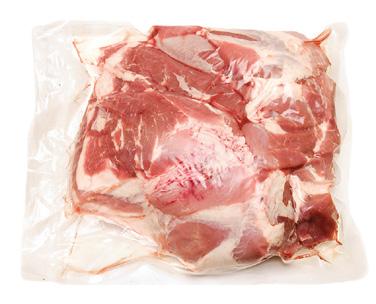
The role of packaging on the flavor of fluid milk
Few studies have addressed the effects of package material in the absence of light on contributions to fluid milk flavor. The objective of the study published in the Journal of Dairy Science was to compare the sensory and chemical properties of fluid milk packaged in paperboard cartons, low-density polyethylene, high-density polyethylene (HDPE), polyethylene terephthalate (PET), linear low-density polyethylene (LLDPE), and glass.
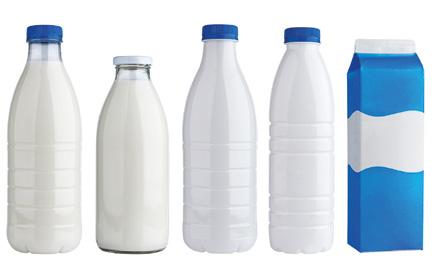
Pasteurized (high temperature short time, 77°C for 25 s) skim and whole milk were filled (280 mL ±10 mL) into paperboard cartons, low-density polyethylene, HDPE, PET, LLDPE, and glass (control). Milks were stored at 4°C in the dark and sampled at d 0, 5,
10, and 15. Descriptive analysis was applied to document sensory profiles at each time point, and volatile compounds were extracted and identified by solid-phase microextraction with gas chromatography mass spectrometry and gas chromatography-olfactometry. Tetrad tests with consumers were conducted at d 10. Both skim and whole milks packaged in cartons had noticeable paperboard flavor by d 5 and higher levels of hexanal than skim and whole milks in other package types at d 5. Skim milks packaged in paperboard cartons and LLDPE had distinct refrigerator/stale flavor compared with milks in the other package types, concurrent with increased levels of refrigerator/package-related compounds including styrene, acetophenone and 2-ethyl-1-hexanol. Milks packaged in glass, PET and HDPE were not distinguished by consumers at d 10 post-processing.
Package type influences fluid milk flavor, and these effects are greater in skim milk compared with whole milk. Paperboard cartons do not preserve milk freshness, as well as PET, HDPE, or glass, due to flavor migration and scalping. Glass remains an ideal barrier to preserve fluid milk flavor, but in the absence of light, HDPE and PET provide additional benefits while also maintaining fluid milk flavor.
packaging trends 40 italian food & packaging technology - ciii (2023) - april
YOUR CIRCULAR PACKAGING








IMPROVING YOUR PRODUCTION EFFICIENCY AND REDUCING YOUR CARBON FOOTPRINT IS EASY WITH SMI!












































































































































































































































































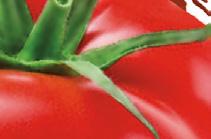
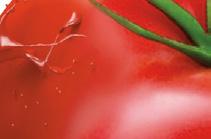










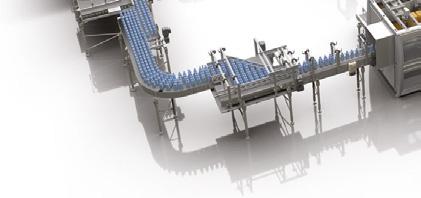
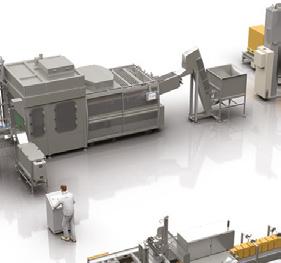
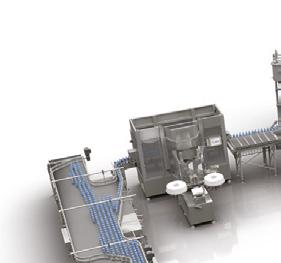
Our bottling and packaging systems benefit from Industry 4.0 and IoT technologies, can process recyclable materials such as rPET and allows for considerable energy savings. Find out our solutions for packing a wide range of containers up to 36,800 bottles/hour.


I +39 0345 40 111 I info@smigroup.it I www.smigroup.it I
CONVEYING
BLOWING FILLING LABELLING
PALLETIZING PACKAGING
Packaging for beverages is growing more sustainable
PET or glass bottle, aluminium can, beverage carton or maybe even a paper bottle, single use or multiple use – there is a huge range of choices for packaging beverages. But which is the most sustainable? The focus has increasingly been placed on ecological aspects over the last few years in this sector. And not only for packaging material: these aspects have also become important for filling and actual packaging processes. Some beverages simply come with classic packaging. We usually buy beer or wine in a glass bottle, milk in a carton and soft drinks in a PET bottle. Over the last few years, however, customers have become ever more critical, and sustainability issues have grown in importance for the beverages sector. Plastics especially now have a bad reputation – which is often undeserved. How well a type of packaging fares when looking at the ecological balance depends on many different factors. Experts therefore are hesitant to give general advice.
A short overview: Glass bottles are neutral in taste, but also fragile and heavy. However, they are more suitable for multiple uses than any other type of packaging. PET bottles, too, can be refilled several times and then recycled. They are shatterproof and notably lighter than glass bottles. Plastics, however, have had a bad reputation with customers for some time now, in spite of the very high recycling quota for PET beverage bottles in Germany at more than 94 percent. Beverages in aluminium cans still enjoy popularity. But the extraction of the raw material and the production of the cans from raw aluminium comes with a huge cost in terms of energy, so everything comes down to the collection quota, because there is no limit to the number of times the cans can be recycled. Beverage cartons are also always single use, but they are for the most part made from renewa-
ble raw materials. Improved procedures meanwhile ensure that the cardboard, aluminium and plastics components are separated. The Umweltbundesamt, the German Environmental Agency, therefore classifies them as “single use packages with ecological advantages”.
Will there be paper bottles?
At the end of 2016, the Carlsberg Group presented the “Green Fiber Bottle”, their prototype for a paper bottle, for the first time. In the summer of 2020, the beverages corporation Diageo announced the first paper-based spirits bottle for Scottish Johnny Walker whisky, but so far there has been no large introduction to the market. In the beginning of 2021, for the first time in Europe, Coca Cola offered a plant-based beverage to 2,000 consumers in Hungary that came with a paper bottle. No further steps were taken after this test offer, however.
Since the development of sustainable bottles made of fibre, work on their optimisation has never ceased. The goal: a completely organic paper bottle. Currently, the “classic” paper bottle still consists of paper coated with a thin layer of PE, which, however, can be easily peeled off during the processing of waste paper, separated and then recycled. One disadvantage of polyethylene is that it doesn’t work very well for carbonated beverages, and these usually require a PET coating that is a bit thicker.
The Carlsberg brewery took things a step further this year: The bottles for a large-scale consumer test are coated with PEF (polyethylene furanoate) an organic polymer with similar properties to PET. It acts as a highly effective barrier between the beer and the outer hull made of fibres, protects the taste and
packaging trends 42 italian food & packaging technology - ciii (2023) - april
is supposed to retain the carbonic acid of the beer better than conventional PET. The biopolymer is also both compatible with PET recycling systems and biodegradable. The current prototypes are an already improved variant which features the PEF coating as well as a new bottom to improve the stability of the bottle. The next generation of bottles are planned to be made available with a fibre-based lid and cap, too.
Lightweight glass bottle for multiple use
Glass is a popular packaging material for beverages. Its greatest disadvantage is only its high weight, because in direct comparison, PET bottles can be up to 90 percent lighter than the multiple use variety made of glass. But manufacturers of glass packaging are working on light versions, for example made of tempered lightweight glass. Reusable bottles produced this way are not only up to 30 percent lighter than the standard variety, they are also more resistant to abrasion, which can turn them into a real alternative both economically and ecologically. However, the thermal treatment that in the end gives the glass its greater stability limits the possibilities of product design. Variations in wall thickness present an especially difficult challenge during the process.
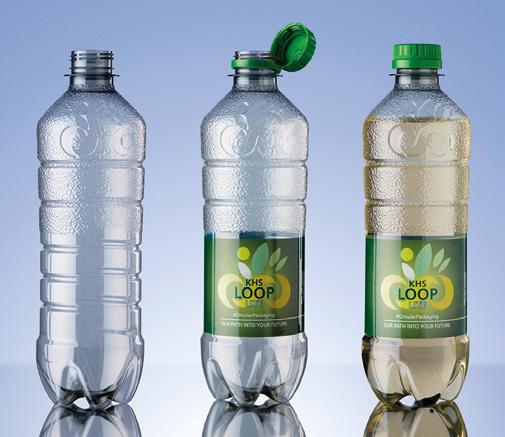
Better safety on the road
In order for bottles, cans and beverage cartons to reach their point of sale without damage, they need proper safety measures during transportation. Usually, thin stretch wrap is used for stable packing on a pallet. For this purpose, machine manufacturers like interpack exhibitor Mosca offer strapping machines for pallets and stretch winders. Depending on the type of packaging, safety requirements for the pallet can be very different. Cans must be protected against warping, glass bottles against breaking. In order to transport lightweight, empty beverage cans, for example, they not only need to be held in place from the side or from the top, but also require light pressure to be kept secure on their way to the beverage bottlers. A new strapping machine for pallets by Mosca creates the necessary pressure on the empty cans through vertical strapping. The system uses sustainable PET straps made from recycled materials and packages/wraps up to 61 pallets per hour for transport, without wasting resources. As a narrow strip of plastic is enough to secure even the heaviest pallets, the use of material and the carbon footprint are kept to a minimum.
Alternative to plastic shrink wrap
Inside modern stretch winders, a reel of foil circles the pallet horizontally, while the goods – full cans or fragile bottles – remain static. Elastic stretch wrap is used very often, as pre-stretching the foil increases its stretchability up to 300 percent. Manufacturers are already working on a more sustainable solution using renewable material. For example, packaging a pallet with elastic, puncture-resistant paper is a packaging solution that can be fully recycled. For wrapping PET bottles, too, a paper-based solution that can be completely recycled has recently entered the market: a package band made from 100 percent kraft paper that wraps around bottles, has a high tensile strength and is able to support enough weight to secure the bottles during transport. The second part of this solution is a clamp made of corrugated cardboard that grips the bottle neck. Individual bottles can be easily separated from the package.
Hygiene is a priority
The beverage can still remains popular. While it used to be the case that cans were primarily filled with beers and carbonated drinks, for some time now there has been a trend towards canning more sensitive products like iced teas, plant-based drinks, juices, smoothies or near-water products. This development poses new
The weight-reduced bodies of the bottles developed by KHS are made of 100 percent rPET and a hair-thin inner coating of glass.
Copyright: Frank Reinhold
packaging trends italian food & packaging technology - ciii (2023) - april 43
hygienic challenges to beverage bottlers. The system manufacturer KHS reacted to this by developing the fill-and-seal block SmartCan together with the Swiss mechanical engineering company Ferrum, which represents the first time that their respective machines have been seamlessly joined and also features optimised hygienic measures. The hygienic space inside the filler part of the block consists of raised sheathing plates on one side, and an enclosure on the other side that has a notably smaller product space around the filler carousel: Following the so-called donut principle, this creates a ring-shaped enclosure, reduces the volume of the hygienic space by 40 percent and allows an optimised, targeted jet of sterile air to stream around the sensitive zone.
Filling technology
Hygiene is also important for the new aseptic filling system developed by Sidel for the growing market for sensitive beverages in PET bottles. The integrated stretch-blow-fill-seal solution is a further development of Aseptic Combi Predis technology, intended to help bottling companies serve the growing market for drinks with a long shelf life, like for example juice, fruit beverages, soft drinks, isotonic drinks and tea, as well as liquid dairy products. The demand for these products, says Sidel, is expected to reach a volume of 192 billion units by 2024, which is an increase of 44 percent compared to 2011. Sensitive products are said to represent 55 percent of the market for non-alcoholic beverages, and the predict-
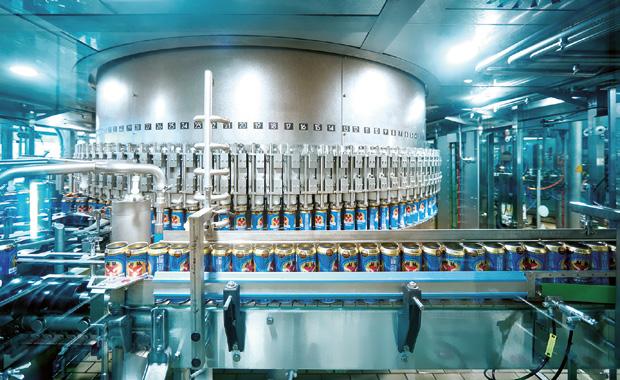
ed growth of this segment (annual growth rate of 2.3 percent from 2019 to 2025) is higher for PET bottles than for other materials.
Flexible response to demands
Regarding the packaging of their products, bottling companies today face multiple challenges, both economic and ecological. On the one hand, they are subject to pressure from growing time constraints and rising costs, on the other hand, the beverages industry is under scrutiny from the legislature right now – especially regarding recycling quotas and carbon emissions. Considering these developments, interpack exhibitor KHS is offering their customers a large portfolio of adjustable block solutions, especially for filling PET bottles, among them a new, modular platform that can be customised and expanded. First used for filling glass bottles in 2020, the machines now also fulfil customer wishes for adaptability and a guaranteed future when it comes to plastic bottles. “Nobody can say which trends the industry will follow in five years”, says Manfred Härtel, Product Manager Filling at KHS. “This is the reason we made our platform modular, so it can be fitted any time for different drinks or PET containers, depending on the demands of the market.” This way, additional individual components can be bought at a later time and integrated into existing solutions with a minimum of effort. In addition, many improvements in construction already help to save energy. The new filler allows filling temperatures to rise to 24 degrees Celsius, which lowers the investment and maintenance costs for energy-intensive cooling technology. At these temperatures there is also no condensation of water, which would have to be dried using a lot of energy before further packaging in foil or cardboard.
“Tethered Caps” soon to be mandatory
Caps and valves are often a problem when it comes to littering and the recycling of plastic bottles. EU legislation is therefore making the use of closures that are permanently connected to the bottle mandatory from 2024. Many manufacturers have already reacted and developed so-called “Tethered Caps”. Earlier than necessary, manufacturers of beverages are already following the EU guideline, among them Coca-Cola: The corporation already introduced their attached caps in 2021, and has been expanding them to an increasing number of PET single use bottles.
packaging trends 44 italian food & packaging technology - ciii (2023) - april
Filler and seamer part of the combined block solution SmartCan by KHS/Ferrum feature optimised hygienic properties. Copyright: Roth und Schmid Fotografie
Little has changed for consumers: The opening mechanism is the same, and the cap which is now attached to a safety ring can still be moved round the neck of the bottle as desired or secured in a specific position. By January 2024, the beverage corporation aims to have successively converted all its German plants. At the end of 2021, the bottling plant in Dorsten, North Rhine-Westphalia, was the first to make the change. Manufacturers assume that the new caps will only resonate well with consumers if the handling is right.
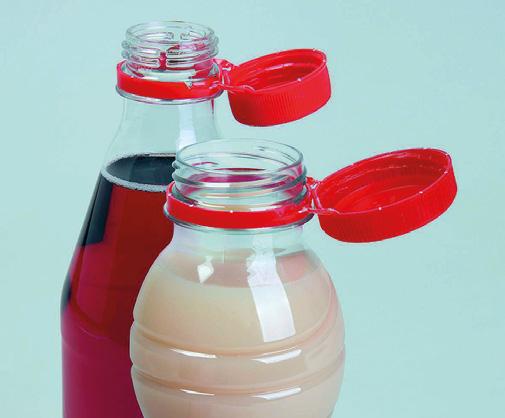

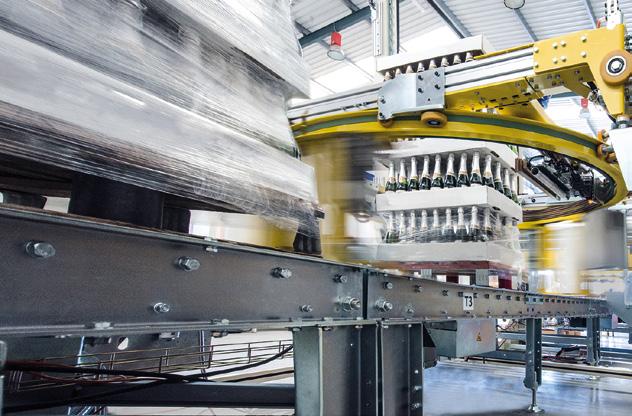
Consumer studies reveal that a “Tethered Cap” by interpack exhibitor Bericap did well because of its intuitive handling, the 180-degree-opening and its hygienic advantages. An early switch to “Tethered Caps” can allow beverage companies to increase the attractiveness of their products in the market.
Intelligent caps
Freshness indicators are helpful for the beverages sector as well. United Caps and the start-up Mimica have marketed a clever cap solution that includes a freshness indicator. The “Touchcap” changes its surface from even to uneven when a product is no longer fit for consumption. This is possible thanks to a gel in a special label that can change its structure. The cap can be recycled and consists of a lid base and a closing cap. After filling, this is mounted by a specialised machine that, like other modules – for example
for labelling or stretch wrapping – can be seamlessly integrated into production. It is the consumer who activates the effect by opening the lid for the first time by twisting the cap. Currently, there is a pilot project in the UK with an orange juice brand.
Which other sustainable and innovative solutions the beverage industry will present will be revealed at interpack. From 4 to 10 May 2023, the exhibitors of the world’s leading trade fair for processing & packaging in Düsseldorf will present their newest developments along the entire value chain – from machines, systems and packaging options to materials and recycling. In hall 13 there is a special focus on bottling and packaging solutions for the beverages sector. Further information on interpack is available at www.interpack.com
packaging trends italian food & packaging technology - ciii (2023) - april 45
The ClipAside Tethered Caps connected to the beverage bottle already fulfil the requirements of the EU Guideline 2019/904 for better recycling (Bericap).
With the stretch winder Saturn S6 by Mosca, even fragile bottles can be transported to the supermarket with optimum safety.
Dairy packaging market: global opportunity and industry forecast
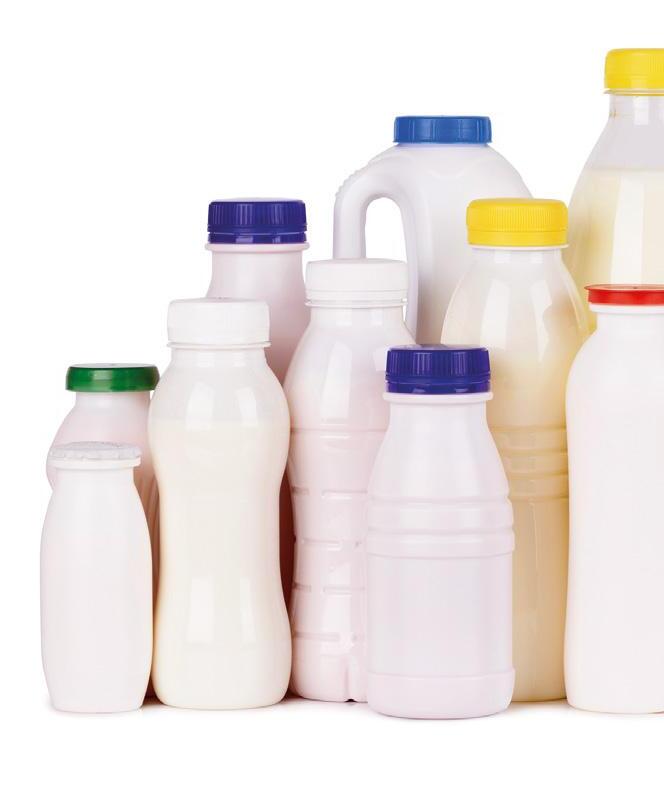
The latest study carried out by Allied Market Research company presents the analytical depiction of the dairy packaging industry along with the current trends and future estimations to determine the imminent investment pockets; moreover, it features information related to key drivers, restraints, and opportunities along with detailed analysis of the dairy packaging market share.
The advent of online and mobile shopping, as well as a growth in culture of healthy snacking and increased consumption of ready-to-eat meals, have changed the way food is purchased and eaten. This, together with consumers’ shift in lifestyles toward more health-conscious eating, is projected to have an impact on the market. Packaged food products have a higher acceptance rate, especially among the younger generation. Furthermore, the increase in importance of packaging materials in prevention of contamination and adulteration is expected to boost product demand. Dairy products are perishable, so suitable and effective packaging is required to make storage and transit easier.
COVID-19 impact analysis
The COVID-19 pandemic has had a primarily unfavorable impact on the dairy products packaging business. Market prospects have been harmed by low
46 italian food & packaging technology - ciii (2023) - april
sales of yoghurt, ice cream, flavored milk, and cheese. The food service business has also been affected by the lockdown limitations. Furthermore, constraints on dairy farmers’ transportation and logistics have harmed supply chains, limiting packaging applications.
Market expansion is also projected to be hampered by liquidity and working capital issues. With continued economic uncertainties in the business, recovery is expected to be gradual.
Top impacting factors
In addition, the demand for dairy packaging materials has grown as a result of rise in health concerns related to malnutrition. The market expansion is expected to be driven further by rise in demand for tiny packaging due to its convenience.Consumers and manufacturers both are concerned about the harmful impacts of plastics and other non-biodegradable packaging materials. As a result, businesses have moved toward biodegradable and environmental packaging options.
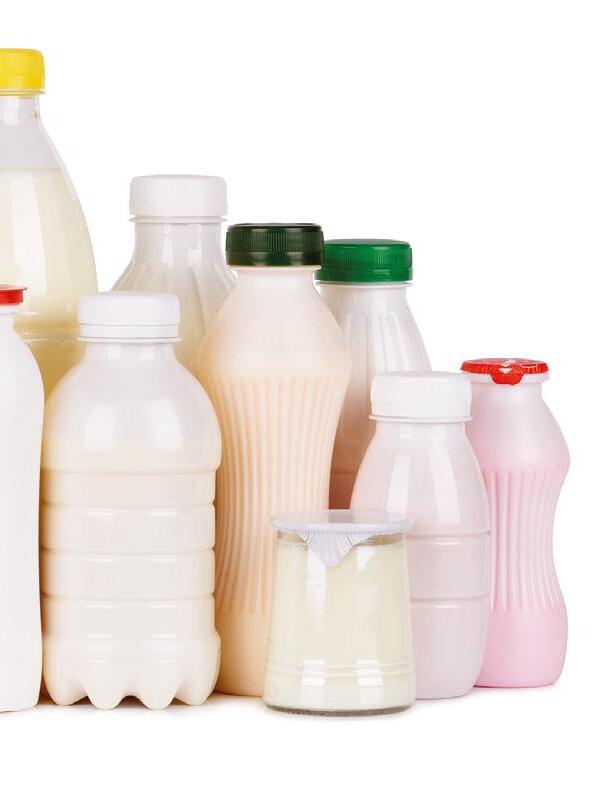
Green packaging solutions are being used by manufacturers, which emphasize the use of thinner materials and encourage recycling.
MARKET TRENDS
Consumers move toward a healthy lifestyle
The global dairy packaging industry is being driven by increased disposable income and rising customer desire for dairy products. Some of the causes aiding the adoption of dairy-based packaging around the world include the increased availability of packaged dairy products through various retailing channels as a result of rising population and increasing consumer preference for protein-based goods.
The popularity of smaller multipacks is growing, as is customer desire for yoghurt, ice cream, butter, and other foods, all of which are driving up packaging demand. Furthermore, manufacturers are concentrating their efforts on grabbing a significant share of the global market by delivering best-in-class international services.
Green packaging for environmental benefits
The Environmental Protection Agency (U.S.) and the European Commission have enforced severe laws aimed at reducing carbon dioxide emissions. As a result, dairy product makers increasingly use environment friendly packaging materials. Moreover, eco-friendly plastic packaging is a good option for businesses who don’t want to risk the product’s shelf life without refrigeration.
The three categories of environmentally friendly plastics are as follows: Bioplastics, Biodegradable plastics, Recycled plastics. To limit their environmental impact and protect natural resources, top dairy firms use eco-friendly packaging in response to mounting environmental concerns. Nestlé, for example, is trying to make all of its packaging recyclable or reused by 2026, which is expected to assist to reduce the company’s carbon impact.
Small packaging have gained more popularity
Leading dairy firms are releasing products in tetra packs, glass bottles, clear tubs, and squeezable pouches, among other creative and convenient packaging options. Some vendors also sell yoghurt in PEHD bottles with aluminum foil, laminated heat-seal closures, or PE-LD caps or lids to prevent oxidation and delay the fading of light-sensitive ingredients.
packaging trends italian food & packaging technology - ciii (2023) - april 47
www.alliedmarketresearch.com
Research on the structure of the PET bottle bottom
The polyethylene terephthalate (PET) beverage bottle is one of the most common beverage packages in the world, but the bottom of the PET bottle tends to crack due to excessive stress.
In the Chinese paper, published on Polymers (14, (15): 3174, 2022), through numerical simulation and finite element analysis, the mechanical properties of four typical geometric models of bottle bottom are studied, and it is determined that “claw flap bottle bottom (CF-bottom)” has the best structure. Then, the shapes of four bottle bottom structures are finetuned by using the automatic optimization method. Under the premise of the same material quality, the surface maximum principal stress, the overall maximum principal stress, and the total elastic strain energy of the bottle bottom are reduced by 46.3971.81%, 38.16-71.50%, and 38.56-61.38%, respectively, while the deformation displacement is also reduced by 0.63mm-3.43mm.
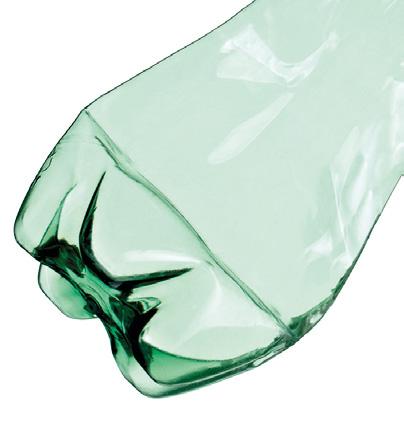
In contrast to other works, this paper dispenses with the manual adjustment of various variables, instead adopting automatic shape optimization to obtain a more accurate model. The percentage of maximum principal stress reduction is remarkable, which provides a feasible theoretical guidance for the structural optimization of PET bottle bottom in the production process.
Effects of irradiation on the shelf-life and quality of vacuum-packaged beef steaks
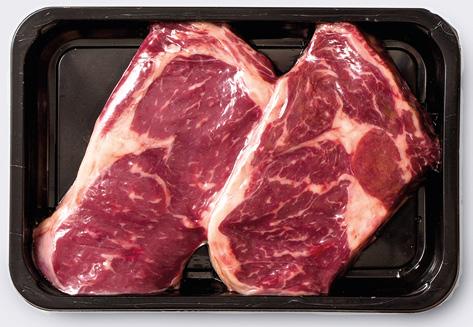
A study published in the Meat Science journal by Chinese Researchers evaluated the effects of different doses (0, 4, 8, 12, 16 kGy) of low-energy electron beam (LEEB; 0.2 MeV) on the quality changes of vac-
uum-packaged beef steaks during chilled storage for 21 days.
LEEB irradiation at a low dose (4 and 8 kGy) significantly elevated the L* values of steaks, and did not deteriorate the a* values, the oxidation of lipid and protein (P> 0.05) compared to non-irradiated samples. LEEB irradiation (4 and 8 kGy) also significantly reduced the bacterial loads compared with non-irradiated steak, which may be due to the inactivation effect on Acinetobacter, Brochothrix thermosphacta, Carnobacterium divergens, Leuconostoc and Serratia during storage. Albeit all doses retained more acceptable sensory characteristics compared to non-irradiated samples, LEEB irradiation with >8 kGy significantly reduced the L* values and promoted protein oxidation. Overall, the LEEB irradiation with 4-8 kGy could be used as a promising innovative technology for extending the shelf-life of vacuum-packaged chilled beef steaks.
packaging trends 48 italian food & packaging technology - ciii (2023) - april
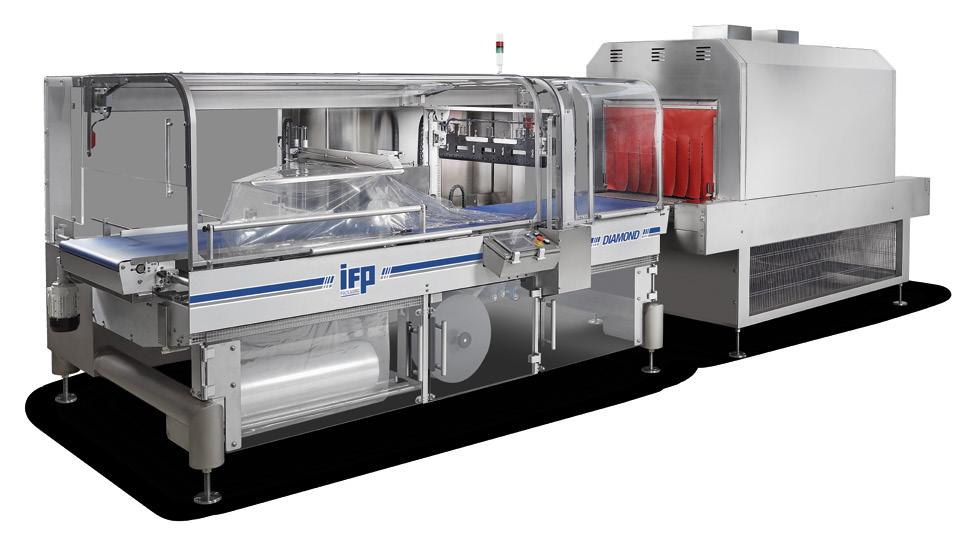
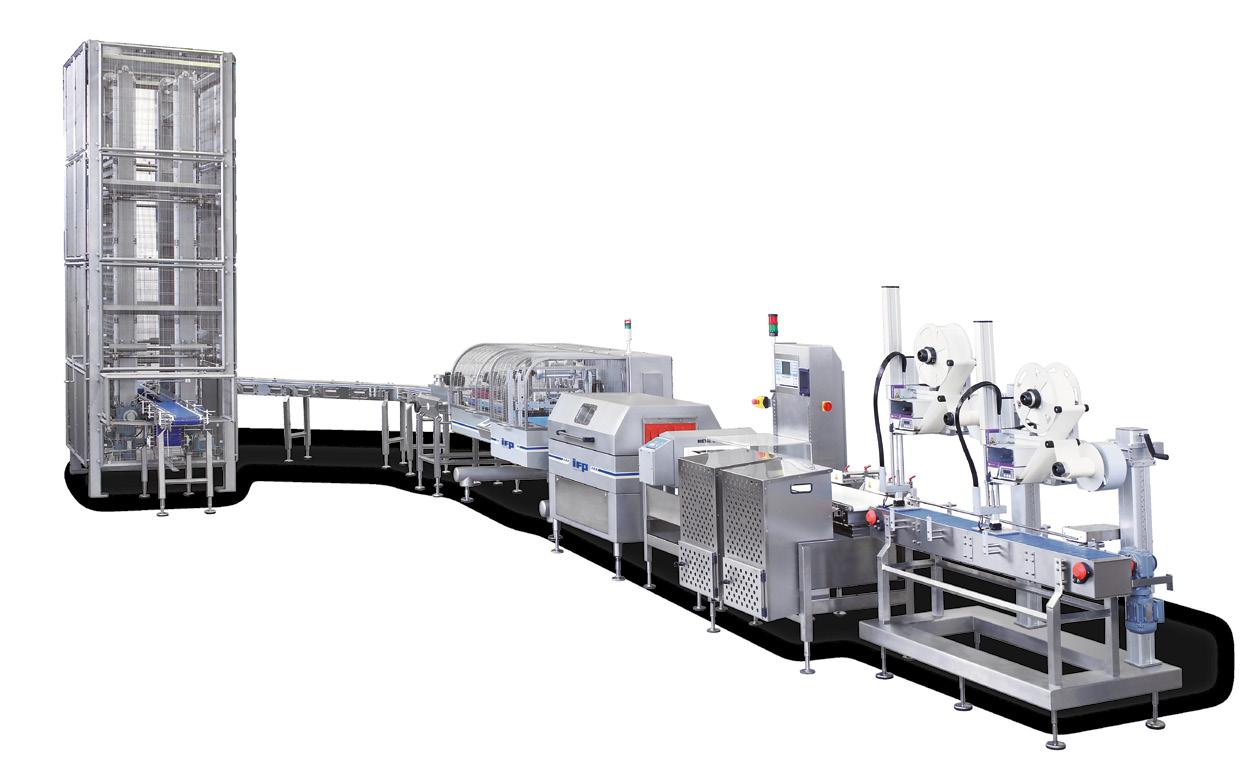
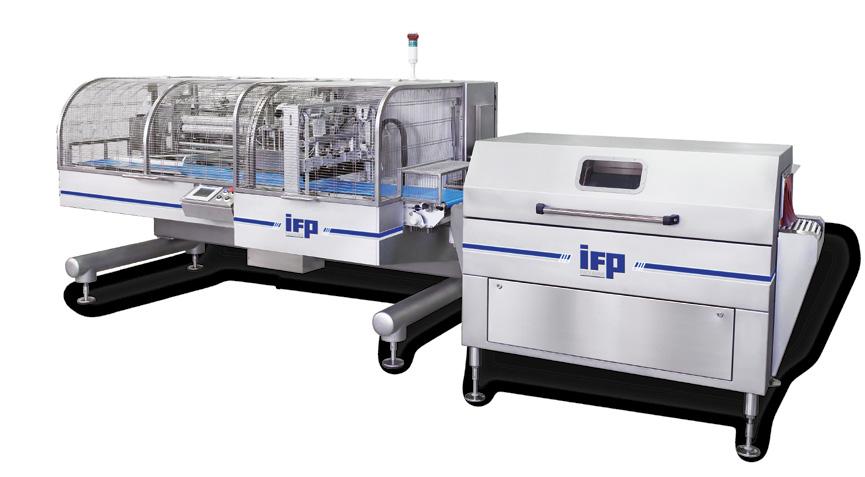
PACKAGING EQUIPMENT
Industrial packaging: for safe travels around the globe
A large part of the goods that are produced globally is intended for export. All these goods often need to travel long distances and have to be safely packed for the journey. Therefore, the standards for industrial packaging for land, air and sea travel need to be high. The packaging industry reacts to these requirements with ever new solutions which make transport even safer, more easily traceable and more cost efficient.
The European Union ranks among the top actors in global trade: It is the world’s largest exporter of industrial goods and at the same time represents the
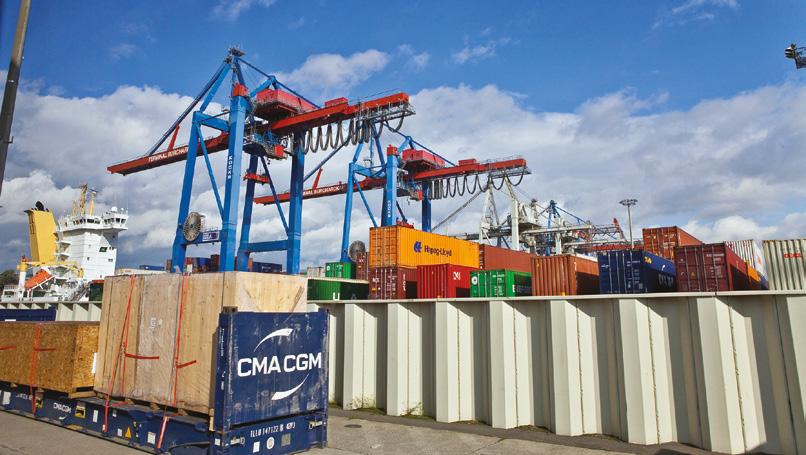
largest export market for around 80 countries. The most important trading partner, according to the German Federal Statistical Office, is China: In 2021, goods worth
696 billion euros were traded between China and the EU – 16 percent of the entire EU trade in goods.
About 80 percent of the global transport of goods uses wooden packaging according to the German Association for Wooden Packaging, Pallets and Export Packaging (Bundesverband Holzmittel, Paletten Exportverpackung, HPE). These are stable and weatherproof, which is especially important for transport over sea. Often, container pallets, sliding carriages or boxes are used for this purpose. “Sliding carriages are often used for transport in a container if additional surrounding protection is not necessary. But in any case, packaging goods must be secured on the sliding carriages, which must in turn be professionally secured inside the container”, explains Marcus Kirschner, Managing Director
50 italian food & packaging technology - ciii (2023) - april
Wooden export packaging before loading in the harbour (HPE).
at HPE. Packaging goods that are too bulky or too heavy for transport inside a container are packed inside individual boxes, which according to the HPE can on occasion rival the dimensions of a small house. “Our industry uses wooden packaging to move almost anything, from microchips for entertainment electronics to rotor blades for wind turbines.” In order to track temperature, vibrations and humidity during the journey, data loggers inside the boxes are increasingly being used to record all relevant data for later analysis. The current status and location of a box can be determined online in real time thanks to tracking by scanner. And through GPS, these data can also be sent to a smartphone or tablet in real time.
Especially machines and system parts need efficient protection against corrosion during transport over sea. Drying agents or volatile corrosion inhibitor (VCI) molecules are therefore added to prevent corrosion inside the packaging. So-called intelligent corrosion blockers (ICB) are new on the market. Here, a patented active ingredient reacts to the degree of humidity: If the corrosion-inducing degree of humidity rises inside the packaging, the amount of protective agents that is released rises as well. If the impact of the humidity lessens again, so does the release of the anti-corrosive protective agent. The idea is to increase the overall duration of the protection.
Products which are to be transported by air freight may be exposed to weather conditions for some time before loading. For sensitive goods, there are thermal covers which increase the temperature stability for
air freight. The newest covers consist of several layers and are partially made of recyclates, for example an insulating layer made of rPET fleece.
Pallets – sustainable, hygienic and stable
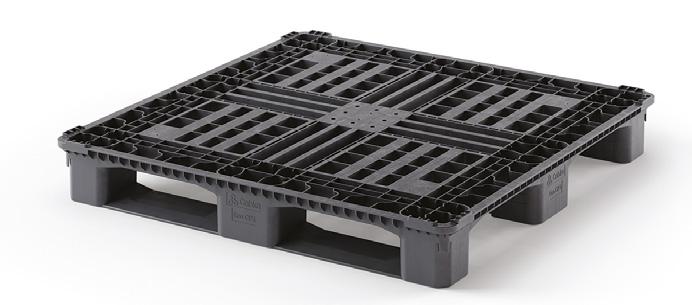
For transporting goods on the road, by air or over sea, pallets are one of the most important pieces of loading equipment. The classic wooden Euro-pallet has long since gained plastic rivals, as plastic pallets have many advantages: They do not warp and are
long-lived, their exact dimensions and shapes allow for a high level of security during processing and make it possible to adjust them exactly to automated storage and transport technologies. Their low own weight is easy on employees during manual handling and saves costs and CO2 during transport. The robust surfaces are free of harmful substances, easy to clean and meet high standards of hygiene. Nestable pallets also reduce the required space and the costs of storage. Pallet manufacturer and interpack exhibitor Cabka recently presented a
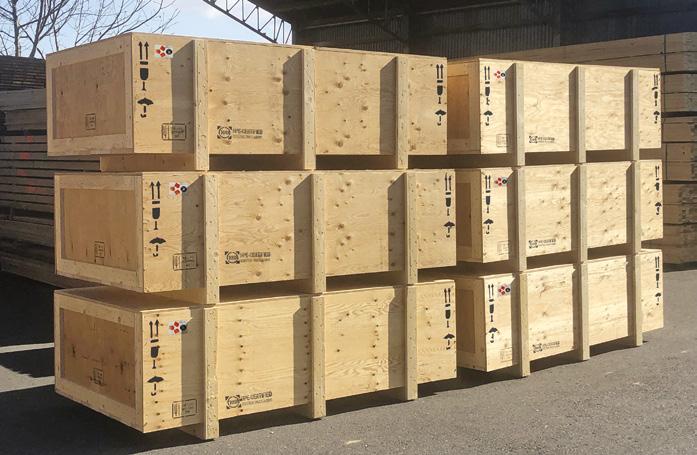
packaging equipment italian food & packaging technology - ciii (2023) - april 51
Wooden boxes protect transport goods throughout the seasons (HPE).
The new generation of Cabka plastic pallets was designed for use in the chemical industry (Cabka Group).
new generation of plastic pallets which are made from recycled plastics, especially for use in the chemical industry. The company mostly uses recyclates for their transport solutions, and these products can again be recycled several times.
Sustainability, in contrast to packaging solutions for the point of sale, has so far been a lesser issue where industrial packaging is concerned. The emphasis is on safe transport. But with the growing debate about the carbon footprint and protecting the climate, the issue is gaining focus. As a lot of packaging material often accumulates for transport, companies can also benefit financially if they consider thinner wraps, or containers that are reusable or made from recyclates. As a sustainable alternative to traditional pallet cages or wooden boxes for transporting goods, Cabka for example has collaborated with Sabic to develop a fully recyclable very large container. The company had been looking for a fully recyclable, lightweight polymer to manufac-
ture their CabCube. The new, recyclable solution is easy to process, resistant to pressure and weighs less than traditional pallets.
Retrieval system for IBCs
In many areas of industry and application, the IBC has become the favoured packaging solution. Intermediate bulk containers areused to transport liquid or granulated chemicals, foods, cosmetics or pharmaceuticals. At Werit, for example, customers can choose between 300, 600, 800 and 1000-litre IBCs on different types of pallets, with or without a valve and with different sizes of lids. A return system makes it possible to take back all used and emptied IBCs, regardless of construction type and manufacturer, free of charge. After reconditioning, cleaning or exchanging different components, the IBC is then reintroduced into the economic cycle.
Especially for hazardous goods, Schütz has developed an IBC with a fireproof outer shell, which offers protection from leakage even under extreme conditions. This container model has a closed, fireproof outer shell made of steel which forms an additional, liquid-proof container that practically serves as an integrated collection tray in case the inner HDPE container is damaged. If the inner plastic container should melt due to the heat of a fire, the outer steel shell effectively prevents the product from escaping. As a consequence, this IBC model can also be used for sensitive filling goods, which were previously mainly transported in containers with smaller volumes such as steel vats. As the first combination IBC ever, the container was therefore awarded


the label “FM Approved” by the industrial property insurance company FM Global.
When it comes to the storage and transport of liquids and granulates, Auer also offers plastic alternatives. The new bag-in-box IBC features exchangeable inliner bags and is therefore not only hygienic and safe, but also reusable. Depending on the type, it can carry 250, 500 or 600 litres and is filled and emptied from above.
Plastic wraps secure loads
Plastic wraps play an important role when it comes to securing industrial goods during transportation, and if they are made from recyclable material or recyclates, they are beneficial to a sustainable circular economy. Closed plastic covers made of shrink or stretch wrap provide a high level of security against theft while reliably protecting goods on pallets against dirt and humidity. The high level of stability of the load means that often additional pack-
packaging equipment 52 italian food & packaging technology - ciii (2023) - april
Sabic and Cabka have cooperated in developing a foldable, fully recyclable very large container (Sabic).
The new Ecobulk SX-D guarantees the safe transport of sensitive filling goods even under extreme conditions (Schütz).
aging material, like plastic straps, is unnecessary. This way, what remains at the end is mono-material packaging, which can be easily disposed of and recycled. Interpack exhibitor MSK also uses technologies that require less resources, for example in their stretch hood systems. These operate with a now greatly reduced energy consumption of less than 0.07 kWh per pallet and can process extremely thin stretch foils down to 20 μm. For the quickly growing application area of automated unwrapping of pallets, MSK has developed a fully automated destrapper to remove straps from pallets of loaded goods. And with the new unwrapping technology by another company, stretch wrap can also be removed from the pallets in a fully automated manner. This work is still mostly done by hand today.
Labels ensure traceability
Especially for hazardous goods, reliable labels are much in demand. With the labels and labelling systems made by Herma, the packaging of chemicals can be traced, to name just one example. They use a QR code which contains all the important product information, and which is applied to the lid of the vat as a label. This way, each individual vat can be identified and located
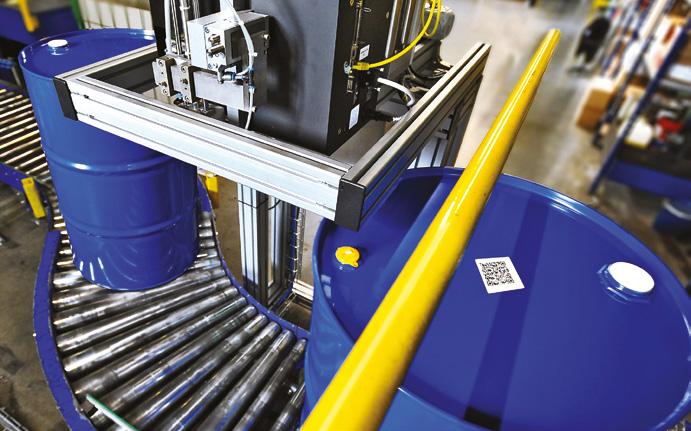
along the supply chains and transport routes. During filling, the code also helps users to ensure that the packaging being used is really suitable for the filled goods. However, the label with the QR code must also be damage-resistant in the event of hot-filling. Together with Boxlab Services, a start-up founded by BASF, Herma has recently made the acquisition and use of labels for hazardous goods safer, less expensive, quicker and better for the environment. This is because, in spite of their safety-related function, labels for hazardous goods are still a continual source of risk in many companies. “Labels for hazardous goods have
to adhere firmly to very different types of vessels, like barrels, vats, containers, IBC, Big Bags and bottles, but also to pallets wrapped in plastic stretch film – and that means a multitude of different surface materials”, says Sven Pleier, Key Account Manager at Herma. Depending on their intended use, they must be resistant to chemicals like acids, alkalis and solvents, dirt, grease and oil, environmental effects like heat, humidity, cold and UV radiation. The special labels for hazardous goods are delivered on single sheets or on a roll. The siliconised carrier material is taken back and reintroduced into the recycling circuit.
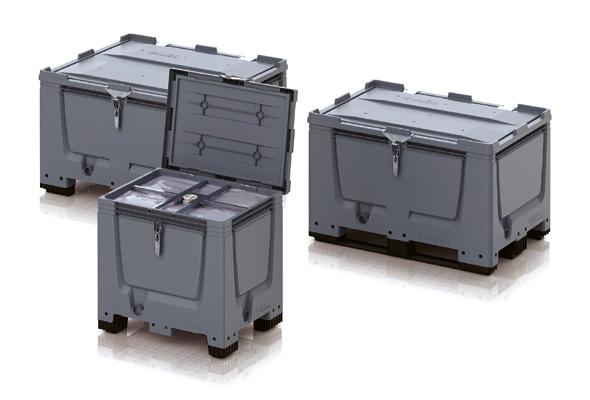
From 4 to 10 May 2023 in Düsseldorf, the exhibitors at interpack present how to pack industrial goods safely and sustainably for transport today. The world’s leading trade fair for processing & packaging offers visitors modern solutions for the area of industrial packaging in Halls 5 and 6 as well as 11 to 14.
www.interpack.com
packaging equipment italian food & packaging technology - ciii (2023) - april 53
These reusable box solutions contain an exchangeable inliner bag (Auer Packaging).
The QR code on the lid of the vat contains all the important information about the product (Herma).
Simple, flexible automation Beyond the machine
Strong competition and falling margins are putting pressure on manufacturers of consumer goods to improve the efficiency of their packaging processes. Most often, the solution is automation. At the interpack 2023 fair, Schubert will be presenting three cobots in action for the very first time, including as an infeed solution on a filling machine for cosmetics.
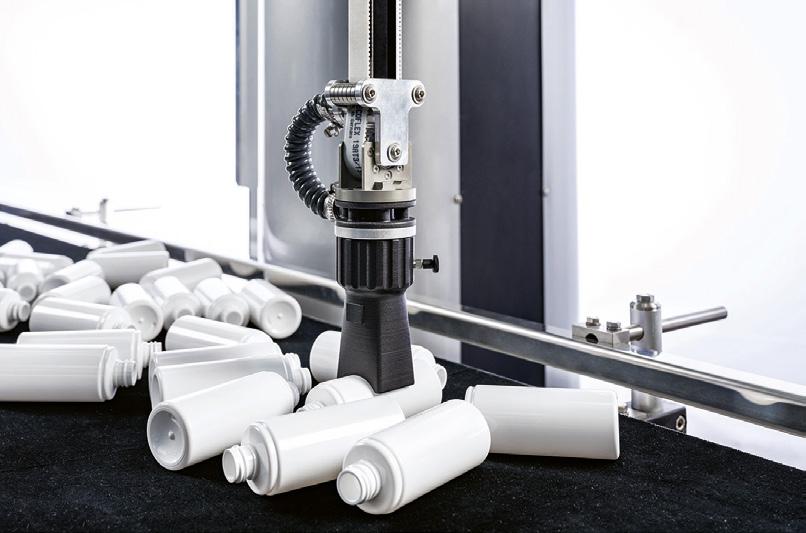
Until now, automation processes for the packaging of food, confectionery, cosmetics and similar products have for the most part been limited to the packaging machine itself. Feeding is often done manually, because processes such as placing products from a crate onto a belt, separating them, orienting them correctly or sorting them are quite complex and rarely cost-effective to automate. With the development of its tog.519 cobot, Schubert now has a new, extremely flexible and
very easy-to-operate solution at hand that takes consumer goods manufacturers a decisive step forward.
Pick & place with a high cycle rate when picking unsorted product
The Schubert cobot is designed for high-performance pick & place applications with lightweight products: At up to 90 cycles per minute, the tog.519 picks up a wide variety of prod-
ucts or packaging materials from the crate or conveyor and places them in any conceivable target destination – without the need for complex programming with only the tool needing to be matched to the product. Benjamin Brand, responsible for sales and integration in Schubert’s Cobot team, explains: “We built the vacuum unit in our tog.519 based on our proven F4 robots. Together with the individually designed robot tools, some of which are 3D printed, we can process a wide variety of products – including unpackaged chocolates as well as plastic components for spray bottles. In the cobot, we have brought together all of Schubert’s in-depth pick & place experience.”
An AI-supported image processing system developed by Schubert is behind the cobot’s ease of use. It recognises the products as they are picked up as well as the environment in which they are to be placed. The cobot’s neural network is so extensively trained that the robot can immediately process new products from the same product group: for example, pouches (sachets, flowpacks, stand-up pouches, sealed-rim pouches, etc.) of different sizes or bottles of different shapes. The AI’s tolerance is conceived to accept variable sizes, materials,
packaging equipment 54 italian food & packaging technology - ciii (2023) - april
Simply place a new product on the belt and you’re ready to go – this is how quickly the tog.519 cobot from Schubert can now change formats.
surfaces or thicknesses within a product group. This means that virtually no teach-in or start-up process is required. The Schubert cobot gets started as soon as it is put into operation.
Extremely flexible and very easy to operate
Its integrated systems also make the Cobot fully autonomous and mobile. So it can be
production runs at the highest cycle rate at all times without interruptions or slow-downs. Even with the protective cell, the cobot remains flexible: The entire cell can be easily moved to another location and used there for other applications – thanks to the fully integrated plug & play system components.
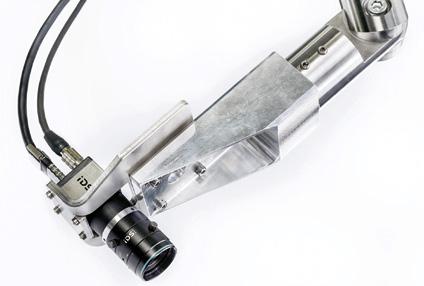
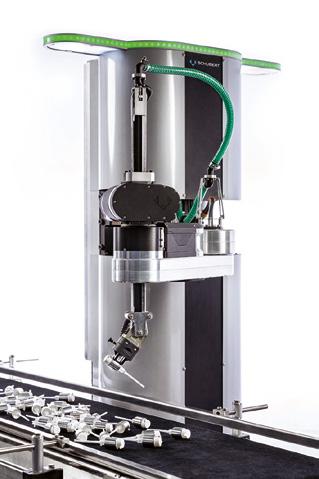
The cobot’s unique advantages make it especially interesting for industries such as cosmetics, confectionery or food. After all, a high degree of flexibility and easy switching between different products are decisive for manufacturers who need to respond quickly to market developments and frequently introduce new formats. Schubert has trained the AI accordingly: The product groups which have been pretrained so far include pouches, lids, pumps and bottles, as well as pralines and chocolate.
Field-proven and exceptionally versatile
So far, the product groups pre-trained in the AI include pouches, lids, pumps and bottles, as well as pralines and chocolate.
used to close automation gaps at different and ever-changing points along the production process. It can either be free-standing or optionally placed into a protective cell. Free-standing, the tog.519 protects workers by reducing its speed if a person approaches too closely. And conversely, this means that, in a very cramped production environment, the protective cell around the Schubert cobot ensures that
The possible applications are hugely diverse. For example, the tog.519 can load the feed chains of a flow-wrapping machine from a crate, pick up bottles for a filling machine from a conveyor and orientate them correctly, pick up a wide variety of unsorted products and place them into cartons or even assemble mixed packs. The image processing reliably even detects products positioned on top of each other, for example pump sprayers with tubes. If very narrow, unsorted products such as bags happen to be positioned vertically in a box and therefore cannot be easily gripped, a vibrating unit rearranges the products between cycles and therefore helps the cobot find a
The electronic components and 3D image processing, which thanks to AI only requires a standard 2D camera, are fully integrated into the system.
bag that can be picked up at each cycle.
In addition to the use of a single tog.519, for example for feeding a packaging machine, several robots can also be set up as an entire cobot line, making packaging processes much more flexible. This makes sense for mixed packs, for instance. The cobot not only works with Schubert machines, but also with third-party systems and even with robots from other manufacturers. This versatility opens up entirely new possibilities for consumer goods manufacturers to automate their packaging processes very flexibly and raise their existing production to an all-new level. In practice, the Schubert cobot is already proving itself in the baked goods and cosmetics industries. Three tog.519s can be experienced at the interpack trade fair in Düsseldorf from 4 to 10 May 2023 at Schubert, Hall 14 Stand D01.
(Gerhard Schubert - Industriegebiet Südost - Hofäckerstraße 7 - 74564 Crailsheim - Germany - Tel. +49 7951400-0 - e-mail: info@gerhard-schubert. de - www.schubert.group)
packaging equipment italian food & packaging technology - ciii (2023) - april 55
The labelling solution preferred by Wine & Spirits
Modular CM is another P.E. Labellers labeling solution that combines flexibility and compactness. This rotary labeling machine is completely ergonomic and flexible, with its layout reconfigurable quicky and easily.

Modular CM is a compact and solid machine available in 4 sizes from small to medium, up to 6 labeling stations, perfect for glass and plastic bottles, cylindrical and shaped formats, and for partial labels – front / back, neck labels, plastic I/L/U shape tax stamps. This solution has all the features to be loved by many sectors that need a small to medium-sized labeling machine, super flexible thanks its complete modularity, with a layout that can be reconfigured easily and quickly.
In particular, this ergonomic labeling machine meets perfectly the needs of many producers and bottlers in the Wine & Spirits sector. In addition to Wine & Spir-
its, Modular CM also satisfies the production needs of the Oil, Beer, Food & Dairy industries.
It features labeling stations with pressure sensitive technology and cold glue, reciprocally interchangeable; they are replaceable in a few steps according to any production needs.
The Modular CM is a machine that provides the highest standards of safety for the operators: it has up/down protections that, when raised, instantly stop the machine’s operation.
The company
Founded in 1974 in Mantua (Italy), P.E. Labellers is a global leader in the design and manufacture of entirely modular and ergonomic automatic labeling machines. The developed solutions offer all available labeling possibilities, even reciprocally combined, through independent
and interchangeable machines and stations. The company’s lean production is inspired by the concept of total flexibility: with this Design Innovation approach, P.E. Labellers produces 450 machines each year, both rotary and linear, for the beverage, wine & spirits, food & dairy, but also personal & home care, pharma, chemical and pet food sectors. Today, 10,000 P.E. machines are installed worldwide and widely managed remotely thanks to continuous support and maintenance services. P.E. Labellers features a global dimension: 8 production sites distributed amidst Italy, US, Brazil and 500 employees all over the world. The company is part of the multinational group ProMach, a world leader in Packaging.
(P.E. Labellers - Via Industria 56 - 46047 Porto MantovanoMN - Italy - Tel. +39 0376389311 - email: pelabellers@pelabellers. it - www.pelabellers.it)
packaging equipment 56 italian food & packaging technology - ciii (2023) - april
Modular CM, the P.E. Labellers labelling solution preferred by Wine & Spirits
IMPIANTI DI MACINAZIONE
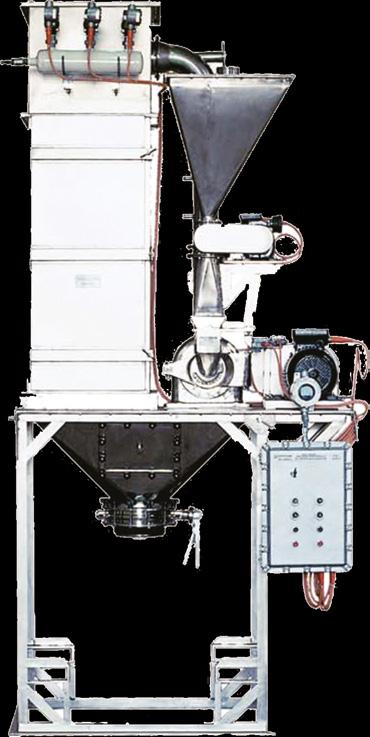



Dal 1918 la ITALO DANIONI costruisce impianti di macinazione, miscelazione e frantumazione per prodotti in polvere, impianti a circuito chiuso, raffreddati, condizionati, criogenici e versioni antiscoppio. In sede è disponibile una sala prove equipaggiata con macchine industriali per la verifica di portate e granulometrie.

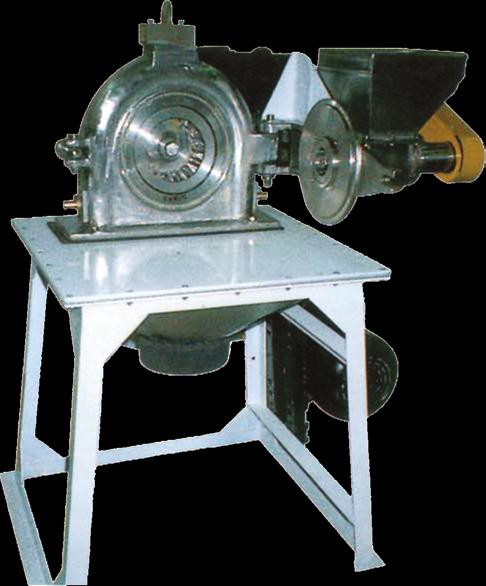
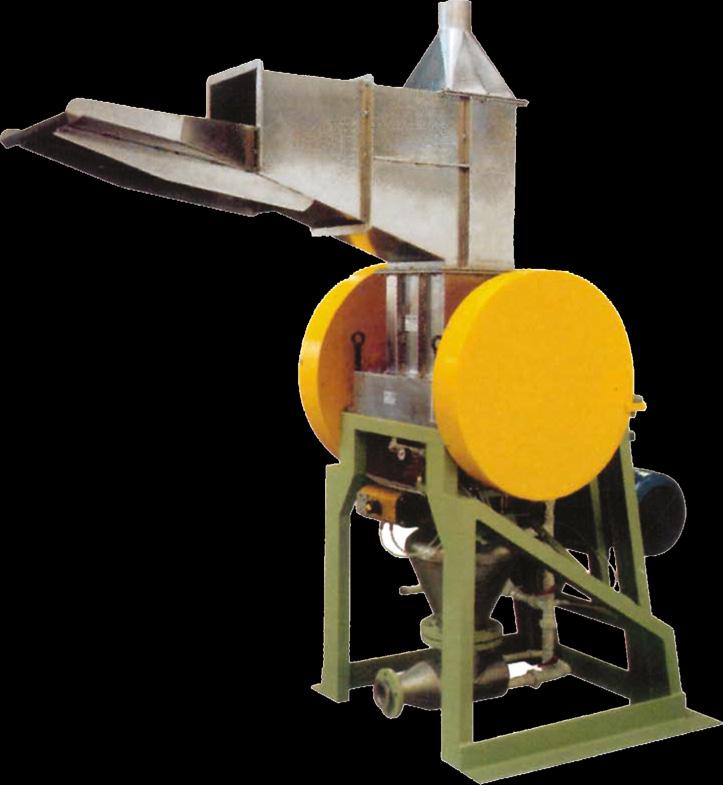
Adeguamenti impianti esistenti

Via Mecenate, 78/b 20138 Milano - ITALY Tel. +39 02 504095 +39 02 504195 Fax +39 02 5062646 info@danioni.com w w w . d a n i o n i . i t
Reduce, reuse and recycle: SMI solutions for a compact, eco-sustainable end of line
Reduce, reuse and recycle are three imperatives (the so-called 3Rs) on which the packaging industry is focusing, in order to provide food & beverage manufacturers with innovative technical solutions that are in line with the market changes and that allow cost reduction, energy saving and increase in competitiveness.
Among the packaging materials, thanks to the high recycling rate, cardboard is considered a pioneer of circular economy, as it fully complies with the 3Rs.
Furthermore, cardboard is characterized by a high percentage of recycle and reuse.
The end-of-line solutions presented by SMI at booth B15, Hall 13 at Interpack 2023 international trade fair in Düsseldorf meet the requirements of a market that has been paying attention to plastic-free solutions and to the issues of reducing, reusing and recycling.
Secondary packaging in eco-sustainable multipacks
Suitable for all beverage bottlers who want to equip themselves with plastic-free solutions, the TPP ERGON (acronym for Top Pad Packer) multipack packer is the ideal choice for obtaining efficient productions up to 300 packs/minute.
The new TPP automatic packer is a technologically advanced packaging solution that stands out for respect for the environment, advanced automation and
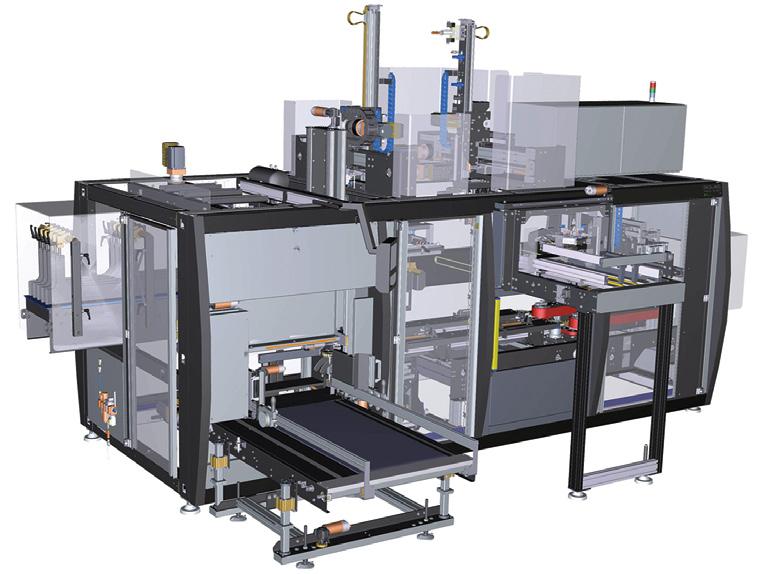
flexibility of use. It was created for the secondary packaging of various types of cans by means of the application of a cardboard pad positioned in the upper part of the pack. The TPP 300 ERGON model, presented at Interpack trade fair, packs 0.33 L cans in 2x3 format.
In the pack formation area, the cans are grouped continuously in the desired format by means of electronically synchronized separation fingers. At the same time, a flat layer of cardboard is deposited over the cans in transit, by means of an interlocking system. The flat cardboard pad is taken from the pad magazine, located in the upper part of the machine, by means of a rotary movement picker.
The new SMI packer allows to reduce the amount of packaging material, without compromising the product protection and the pack functionality.
The new multipacks, which do not require the use of glue, meet the growing market demands for environmentally sustainable packaging solutions.
Re-packing in resistant and ergonomic cardboard boxes
Packaging plays a key role in the marketing strategies of consumer goods manufacturers.
Cardboard box is an example of a packaging with a simple, but effective design, optimized according to the size of the product
packaging equipment 58 italian food & packaging technology - ciii (2023) - april
to be packed and ideal to maximize the visibility of the brand on the shelves in the points of sale, thanks to the possibility of graphic customization of the case.
With the automatic pick & place case packer from the ACP ERGON, SMI enters the sector of packaging in RSC cardboard cases (the so-called “American boxes”) and offers customers a valid alternative to the traditional packaging in wrap-around boxes.
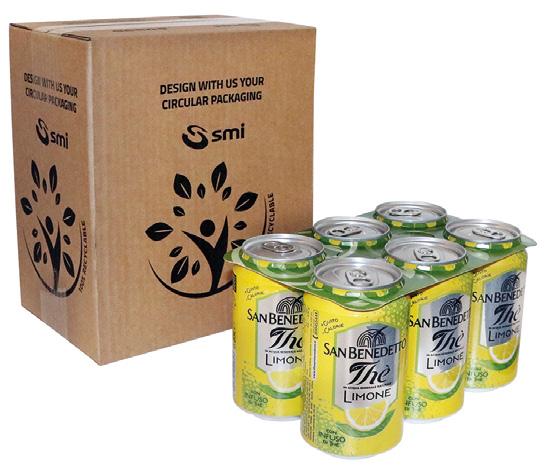
At Interpack 2023 trade fair, SMI will showcase an ACP 20 S ERGON case packer that processes multipacks of 2x3 cans coming from the TPP ERGON, stacking them on two layers within the box; the result of the packaging process is a robust and resistant pack, firmly closed by adhesive tape. The same machine is also available in ACP G version with box sealing by means of hot melt glue.
Compactness, easy management and advanced automation
ACP 20 case packers by SMI feature a solid monobloc structure in which all machine functions are grouped: product separation, placement in boxes with loose product top loading, cardboard magazine, box sealing.
The packaging process is alternate (stop & go) and uses a pick & place system, capable of realizing RSC packs at the maximum production speed of 20 packs/minute (depending on the format). The ACP ERGON series can pack several types of products, such as bags of pasta, rice and coffee, as well as oval containers (shampoo, liquid soap, detergents) and briks (tea,
juices) simply by changing the picking gripper/suction cup.
Thanks to the pick & place system, this machine range can process very delicate and exclusive products such as wines, sparkling wines and liquors, without damaging the glass bottle labels during processing.
The compactness of the end of the line presented at Interpack is enhanced by the presence of the new APS 620 ERGON automatic palletizing system, that allows to efficiently and cost-effectively automate the end-of-line operations at a production speed of 20 packs per minute (depending on the palletizing pattern).
With the palletizers from the APS range, SMI offers a versatile solution for processing products, which is flexible in adapting to format changeover and efficient in avoiding damages during the handling operations.
The advantages of APS 620 ERGON system:
• compact and ergonomic structure, that guarantees a consid-
erable space saving within the production line and allows the operator to easily and safely perform all activities related to the installation, management and maintenance operations
• use of innovative technical solutions that ensure advantages in terms of operational flexibility and economic competitiveness
• TCO optimized thanks to low management and maintenance costs
• possibility to create several palletizing patterns
• operations managed by a user-friendly machine automation and control system, thanks to an extremely intuitive graphic interface
• electrical cabinet, located outside the protection barriers, that remains cabled during transport and that can then be immediately installed at the customer’s plant.
(SMI - Via Carlo Ceresa 1024015 San Giovanni Bianco - BG
- Italy - email: info@smigroup.it
- www.smigroup.it)
packaging equipment italian food & packaging technology - ciii (2023) - april 59
New rice grains with dazzling color and flavor
Americans have sung about amber waves of grain for years, but soon, we might have to add more colors to that ode, as USDA’s Agricultural Research Service (ARS) releases newly-developed purple and red varieties of rice. In addition to being beautiful, the novel grains pack a nutritional punch, and offer farmers a distinct new opportunity. The latest addition is a purple variety, named “USDA-Tiara.”
Anna McClung, research geneticist at the Dale Bumpers National Rice Research Center in Stuttgart, AR (Usa), developed the pigmented purple and red varieties to enable American farmers to enter an important market. Today, she said, Americans can buy colored rice varieties, but the supply is predominantly from overseas.
“This is an opportunity for our domestic growers to have access to that market, which has greater economic potential than white milled rice,” she said.
Consumers have good reason to want the colorful options, as they offer significant nutritional benefits. McClung explained that with conventional rice, the bran is usually removed in the milling process, and it’s actually the bran layer that contains most of the nutrients. When the bran is removed, essentially only the starch is left. In the pigmented bran varieties, McClung and her team found that, in addition to the basic nutrients that brown bran possesses (vitamin E, fiber, and other vitamins), there is additional nutritional value in the pigmented bran.
“The pigments that are purple and red are just like the pigNew ARS-developed varieties of rice sport purple (left) and red (right) outer layers, or bran. These colorful varieties offer consumers improved options for nutrition and taste, and provide growers with an opportunity to enter new market areas.
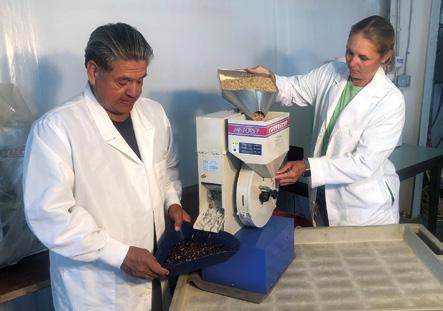
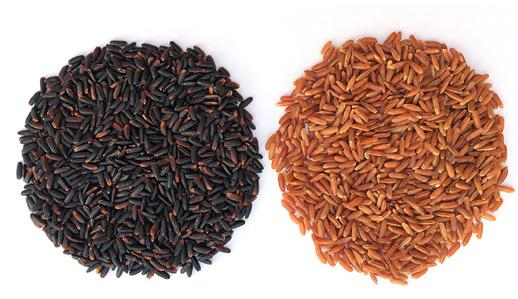
ments that you find in grapes and berries and different fruits and vegetables, and some of those compounds — tannins, flavonoids, and phenolics — have been shown to have antioxidant properties, which have a potential health-beneficial effect.”
The purple rice, like most cultivated rice, originally came from Asia. In China, where it has been grown for millennia, it was known as “the emperor’s rice” because it was so revered that lore said only the emperor could eat it. In part, its reputation was due to its nutrient content; the Chinese viewed it as beneficial for pregnant women and the ill.
“They understood a long time ago that the purple rice was spe-
60 italian food & packaging technology - ciii (2023) - april NUTRITION
Biological science technicians Luis Coral (left) and Laduska Sells (right) shelling USDA-Tiara purple rice.
cial for some reason,” said McClung.
From China, the purple rice made its way to Brazil via a scientist who recognized its potential, improved it through careful breeding, and ultimately brought it to McClung’s attention. Over the last 15 years, she has worked to breed an improved version of that strain from Brazil. It has since been released in the U.S. and commercialized; it is the parent of the new Tiara strain.
The red rice, which McClung also bred and named “Scarlett,” is the first red rice ever bred for commercial production in the United States. In the past, growers hesitated to grow red rice because it was regarded as a weed, with milled red grains causing rice to look “dirty” to consumers. While not native, the red rice had run wild and often inter-mingled with cultivated varieties, decreasing farmers’ net profit when the mixed rice was sold.
McClung was curious whether this disdained rice might have something to offer, and set out to answer the question, “Do these weedy rice varieties, which have ancestral lineage in common with regular cultivated rice, possess some good genes — genes that, through years of selection to make milled rice look pretty to consumers, have accidentally been thrown away? Are there interesting genes there that could help our existing crop, and could we move those back into our current cultivars?”
The answer was yes. “We found that the weedy species had yield-enhancing genes that we’d lost somewhere along the way,” McClung said.
She identified several farmers willing to try growing the new
varieties. Today, they rave about the results.
Relative to conventional varieties, “the flavor and aroma expression is infinitely more readable, more attractive, and certainly more relevant,” said farmer Glenn Roberts, who grows the rice as part of his Anson Mills operation. “You can taste the difference.”
“My view is that as climate change advances, we’re going to be looking for more plant-based
culinary options in general,” Roberts said. “In an increased plantbased environment, you want a rice that’s fast in and out of the field, that will stand well, that’s unique, and that is absolutely high-yielding. Anna’s put out two rices that yield like a bandit, they’re quick in and out of the field, and they have unique culinary properties.”
www.ars.usda.gov
Improving flavour and texture of B12-fortified bread
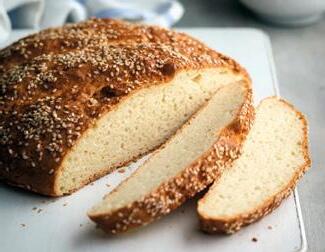
A study carried out by Finnish Researchers and published in LWT - Food Science and Technology journal, aimed to develop a fermentation process that allows the concomitant production of dextran (a texture-enhancing agent) and vitamin B12 (in situ fortification) for bread applications.
Mixed fermentation of soya flour or rice bran using Propionibacterium freudenreichii DSM 20271 and Weissella confusa A16 with added sucrose resulted in substantial quantities of dextran (5.6-5.8% dry matter) and B12 (7.9-8.9mug/100g fresh weight),
together with antifungal metabolites (e.g.acetic and propionic acids). In addition to an extended mould-free shelf life, the bread containing 50% (dough weight) fermented soya flour or rice bran not only contained adequate levels of B12 but also exhibited improved texture and sensory quality compared to the control, such as a higher loaf volume, a softer crumb, and a more cohesive and moister mouthfeel. The mixed fermentation reduced the beany or cooked-rice flavour but increased sour and cheesy flavours and aftertaste. Dextran produced during the fermentation process exhibited a masking effect on the beany and sour notes and aftertaste, consistently with reduced levels of green or grassy volatiles (e.g.hexanal, heptanal, (E, E)-2,4-decadienal, and 2-pentylfuran). Overall, the mixed fermentation method using P. freudenreichii DSM 20271 and W. confusa A16 showed potential for B12 fortification of bread products with high sensory quality.
italian food & packaging technology - ciii (2023) - april 61 nutrition
Potential of raw and fermented maize gluten feed in bread making
Maize gluten feed (MGF) is a secondary product of maize processing with rich dietary fiber content, which remains underexploited as an ingredient by the food industry. In a Chinese study published in LWT – Food Science and Technology journal, the impact of MGF and fermented MGF (FMGF) incorporation on dough properties and bread quality was investigated.
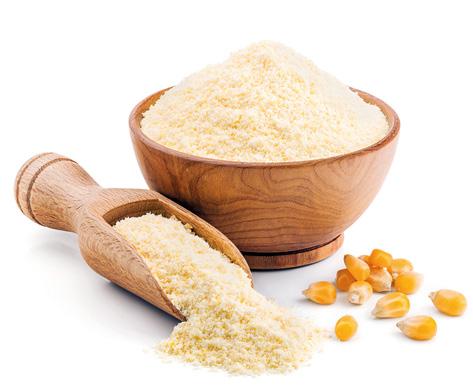
The results indicated that both MGF and FMGF demonstrated beneficial effects on the water absorption, dough development time, setback value while exerting a negative impact on the dough stability time. A significant decrease in L value (extensibility)
and W value (deformation energy), and a significant increase in P value (elasticity) were observed with MGF or FMGF incorporation in the dough. For fermentation properties, the maximum height of dough and the volume of the gas retained in dough during fermentation decreased with the substitution level increased. The bread incorporated MGF or FMGF decreased the specific volume, deepened the color, led to lower porosity, increased the crumb hardness and chewiness. MGF and FMGF bread showed a slight depreciation in quality with the substitution level below 10 g/100 g. Compared with MGF, FMGF displayed advantages in bread
Increasing the content of lactose-free milk macronutrients
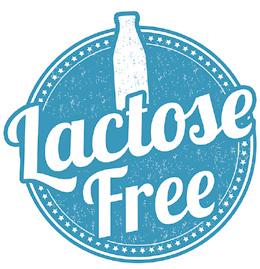
Lactose-free milk is rising in popularity among consumers due to its claim to be a better digestible product compared to regular fluid milk. For that reason, concentrating on this food is a good alternative for increasing its versatility and usability in different dairy industry segments. Block freeze concentration (BFC) is a simple technology used to concentrate liquid foods through ice crystal formation and subsequent removal of water. Thus, a Brazilian work published in the Journal of Food Science aimed to test two variants of the BFC technique on lactose-free milk concentration.
In the first approach, it was investigated the centrifugation-assisted BFC of skim lactose-free milk by applying a factorial experimental design. Temperature, time, and rotation speed were the factors, and the
properties at below 10 g/100 g substitution level, indicating that fermentation is a promising technology for improving the processing properties of MGF.
response variables included the concentrate yield, concentration index, and efficiency of the process. Concentrate yield and concentration index were mainly affected by the centrifugation temperature. On the other hand, individual factors did not have a significant effect on the efficiency, only their interactions. In the case of centrifugation-assisted BFC in a single step, the condition at 40°C, 70min, and 4500 rpm was considered the best, given the highest values of efficiency and concentrate yield (80.87 and 67.02, respectively), and still an excellent value for concentration
62 italian food & packaging technology - ciii (2023) - april nutrition
index (2.05). Conversely, the condition at 30°C, 45min, and 3500 rpm was chosen to integrate a freeze concentration process in two stage. Then, the ice obtained from the first cycle was subjected to the vacuum-assisted BFC, which consisted in the second cycle. The concentrate obtained from the vacuum-assisted BFC presented contents of total solids, carbohydrates, and protein
2.95, 3.00, and 2.91 times more than the initial lactose-free milk, respectively. Therefore, according to the Researchers the concentrates obtained can be used
for the development of innovative lactose-free dairy products.
Using concentration processes in the dairy industry can significantly contribute to enhancing the overall efficiency of milk processing since huge quantities of water from milk can be reduced, increasing the total solids content. In turn, dairy products that provide a high amount of solids (especially protein) are gaining in popularity among consumers, with consequent interest from researchers. In addition, milk concentration shows advantages in terms of processing, packag-
ing, transportation, and handling. Since most changes occur in an aqueous environment, the removal of some parts of water results in the preservation of milk.
It is noteworthy that dairy industries are concerned principally with food preservation, green technologies, and the production of high-quality products. Thus, concentration processes could favor the development of milk products rich in proteins to meet certain demands on functional and nutritional properties, for example in beverages and formulated food.
Cassava starch as a novel gluten-free for baking product
French Researchers have used native and fermented waxy cassava starch as a novel gluten-free and clean label ingredient for baking and expanded product development and the results were published in Food & Function journal.
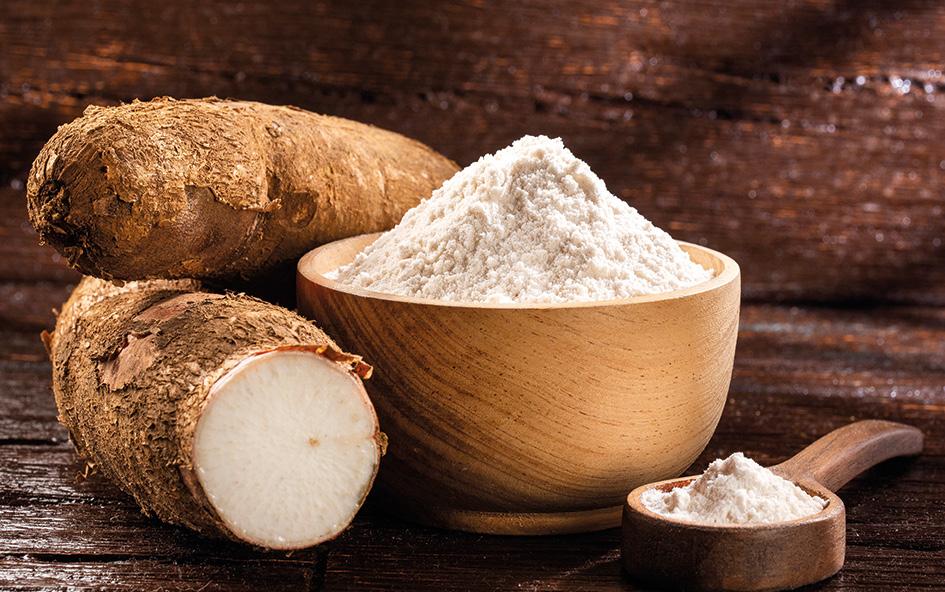
Amylose-free and wild-type cassava starches were fermented for up to 30 days and oven-or sun-dried. The specific volume (v) after baking was measured in native and fermented starches. The average v (across treatments) for waxy starch was 3.5 times higher than that in wild-type starches (17.6 vs. 4.8cm3 g-1). The best wild-type starch (obtained after fermentation and sun-drying) had considerably poorer breadmaking potential than native waxy cassava (8.4 vs. 16.4cm3 g-1 , respectively). The best results were generally obtained through the synergistic combination of fermentation (for about 10-14
days) and sun-drying. Fermentation reduced viscosities and the weight average molar mass led to denser macromolecules and increased branching degree, which are linked to a high loaf volume. The absence of amylose, however, was shown to be a main determi-
nant as well. Native waxy starch (neutral in taste, gluten-free, and considerably less expensive than the current alternatives to cassava) could become a new ingredient for the formulation of clean label-baked or fried expanded products.
italian food & packaging technology - ciii (2023) - april 63 nutrition
Rosemary extract as drink ingredients
Rosemary (Rosmarinus officinalis L.) is in high demand in the food and drink industries due to its distinct organoleptic properties.
With the aim of evaluating the rosemary leaves as drink ingredients, both the essential oil and alcoholic (38%, v/v) extract were studied by Greek Researchers in terms of chemical composition, genotoxicity, antimicrobial, antiviral, and antioxidant properties. GC-MS analysis showed that the main volatile compounds in the essential oil were eucalyptol (40.1%), camphor (12.4%), and alpha-pinene (12.9%). LC-MS analysis revealed gallocatechin and rosmarinic acid as the main extract ingredients. Both the essential oil and the extract were not genotoxic (Ames test) against TA98 and TA100 at the dilutions of 5% and 90%, respectively; those dilutions were selected as the maximum possible ones in the drink industry. Their activity was investigated against Escherichia coli, Salmonella enterica serovar Typhimurium, Staphylococcus aureus, Aspergillus niger, and Adenovirus 35. Both were effective against Adenovirus and A. niger, even the essential oil at 5% (v/v). The extract at dilutions of 25-90% had more pronounced activity against tested bacteria than the essential oil at the dilutions of 5-100%; the essential oil at the dilution of 5% inhibited S. aureus growth. The antioxidant activity was evaluated by the 2,2-diphenyl-1-picrylhydrazyl radical scavenging assay, the 2,2-azino-bis-3-ethylbenzothiazoline-6-sulfonic acid decolorization assay, and the ferric reducing

antioxidant power assay. Both exhibited good antioxidant activity, but rosemary essential oil was far more effective than the extract.
The results published in Foods journal demonstrate that rosemary essential oil and extract are safe and have beneficial biological properties. Therefore, they could serve as health-promoting ingredients in the drink industry.
Extruded snacks from pulses and pseudocereal proteins
The protein-rich fractions of pulses and pseudocereals exhibit a well-balanced amino acid profile, particularly when combined in different portions, and are therefore high-value ingredients for the production of extruded snacks. However, the impact of a combination of pulses and pseudocereals on the physical and sensory qualities of extruded snacks has not been investigated up to now.
Native or preconditioned protein isolates and concentrates from pulses-as single ingredients or in combination with protein-rich flours of pseudocereals-were analyzed by German Researchers regarding their thermal and functional properties in relation to extrusion characteristics. Low moisture extrusion cooking was used to investigate the impact of protein source (lentil, lupin, faba bean), pseudocereal source (quinoa, amaranth, buckwheat) and protein content (30%, 50%, 70%) on sectional expansion, specific hardness, density and sensory properties of
the snacks. With increasing protein content from 30% to 50%, the sectional expansion decreased and the density and specific hardness of the extrudates increased, which could be counteracted by preconditioning of the protein-rich ingredients. Lupin protein-based extrudates exhibited satisfactory texture and sensory properties. Extruded mixtures of pulses and pseudocereals (70% protein) exhibited a smaller sectional expansion compared to pulses as single ingredients (30%, 50%), regardless of pseudocereal type. However, the texture and sensory properties of the extruded blends were satisfactory.
In conclusion, Researchers showed for the first time that protein-rich fractions of pulses and pseudocereals can be processed into expanded snacks with favorable texture and nutritional properties such as increased protein contents (70%) and balanced amino acid profiles. These results were published in the Journal of the Science of Food and Agriculture.
64 italian food & packaging technology - ciii (2023) - april nutrition
Effects of soybean oil body as a milk fat substitute on ice cream
Soybean oil body (SOB) has potential as a milk fat substitute due to its ideal emulsification, stability and potential biological activity. In a Chinese study, SOB was used as a milk fat substitute to prepare ice cream, expecting to reduce the content of saturated fatty acid and improve the quality defects of ice cream products caused by the poor stability of milk fat at low temperatures.
This study, published in Foods journal, investigated the effect of SOB as a milk fat substitute (the substitution amount was 10-50%) on ice cream through apparent viscosity, particle size,

overrun, melting, texture, sensory and digestive properties. The results show SOB substitution for milk fat significantly increased the apparent viscosity and droplet uniformity and decreased the particle size of the ice cream mixes, indicating that there were lots of intermolecular interactions to improve ice cream stability. In addition, ice cream with 30% to 50% SOB substitution had better melting properties and texture characteristics. The ice cream with 40% SOB substitution had the highest overall acceptability. Furthermore, SOB substitution for milk fat increased unsaturat-
ed fatty acid content in ice cream and fatty acid release during digestion, which had potential health benefits for consumers. Therefore, SOB as a milk fat substitute may be an effective way to improve the nutritional value and quality characteristics of dairy products.
Study on optimization of preparation process of coconut plant-based yoghurt
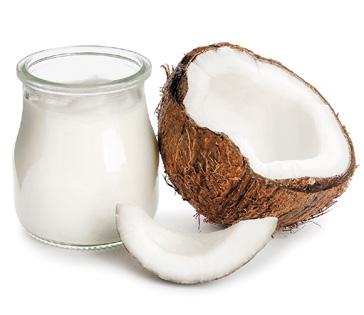
In a study published in Food Research and Development journal by Chinese Researchers, coconut milk was used as the main raw material, without the addition of any animal-based ingredients, to prepare coconut plant-based yoghurt using lactic acid bacteria fermentation.
Sensory scores were used as the main evaluation indicators, combined with physical and chemical indicators, such as pH, acidity, and water holding capacity, to study the impact of fat and sugar addition, homogenization pressure, fermentation temperature and time, and starter inoculation on the quality of the coconut plant-based yoghurt. Then,
through orthogonal experiments, the process conditions for the preparation of coconut plantbased yoghurt were optimized. Comprehensive analysis of single factor experiment and orthogonal experiment results showed that
the optimal preparation process was 10% fat content, 4% sugar addition, 25 MPa homogenization pressure, 3%starter inoculation, 40°C fermentation temperature, and 8 h fermentation time. Under this process, the pH of the prepared coconut plant-based yoghurt was 4.55, titer acidity was 92.67°T, water holding capacity was 88.75%, protein content was 3.85 g/100 g, and viable number of lactic acid bacteria was 5.70 x 109 CFU/g. Yeast and pathogenic bacteria were not detected, and the yoghurt had a good taste, no delamination, suitable consistency, good coagulability, and the sensory score was the highest at 84.97.
italian food & packaging technology - ciii (2023) - april 65 nutrition
Chickpea extract as leavening and anti-staling agent for gluten-free breads
The use of a sourdough (SD) preparation based on a fermented chickpea extract (FCE) starter as a leavening and anti-staling agent in gluten-free breads was explored in a Greek study pub-
using a rice sourdough produced with the FCE starter as additional leavening agent; the FCE-SD breads and samples containing merely baker’s yeast as microbial leavener (control) were both
lished in Food Research International journal.
The FCE starter was prepared by a submerged fermentation (at 37°C for 15 h) of coarsely ground chickpeas and the gluten-free bread formulations, based on rice and corn flours, were made
prepared at three different levels of added water, i.e., 85, 92 and 100% (flour weight basis). The loaf specific volume significantly (p < 0.05) increased with sourdough inclusion into batters and by increasing the amount of added water. Moreover, inclusion of
sourdough into the gluten-free formulations resulted in a finer porous crumb macrostructure and a lower crust moisture content than control breads. Upon bread storage (25°C for 5 days), water migration from crumb to crust was noted. Staling events were also monitored by compression testing and differential scanning calorimetry, showing an increase in crumb firmness and the apparent melting enthalpy (DELTAH) of retrograded amylopectin during bread storage; the values for both parameters decreased with inclusion of FCESD and with higher amounts of added water into the gluten-free formulations. Kinetic data in modelling crumb firmness and DELTAH values by linear regression analysis and the Avrami equation, respectively, revealed a slower staling rate for breads with sourdough, compared to control formulations; moreover, with increasing level of added water to the batter, the firming rate was reduced, while the amylopectin retrogradation was enhanced. Finally, in vitro enzymatic starch digestibility of the crumb was lower for staled breads stored for 5 days, compared to fresh products, while there was no pronounced effect by sourdough inclusion.
Overall, the incorporation of FCE-SD into gluten-free bread formulations seems to be a promising alternative for improving quality and extending the shelf life of gluten-free baked products.
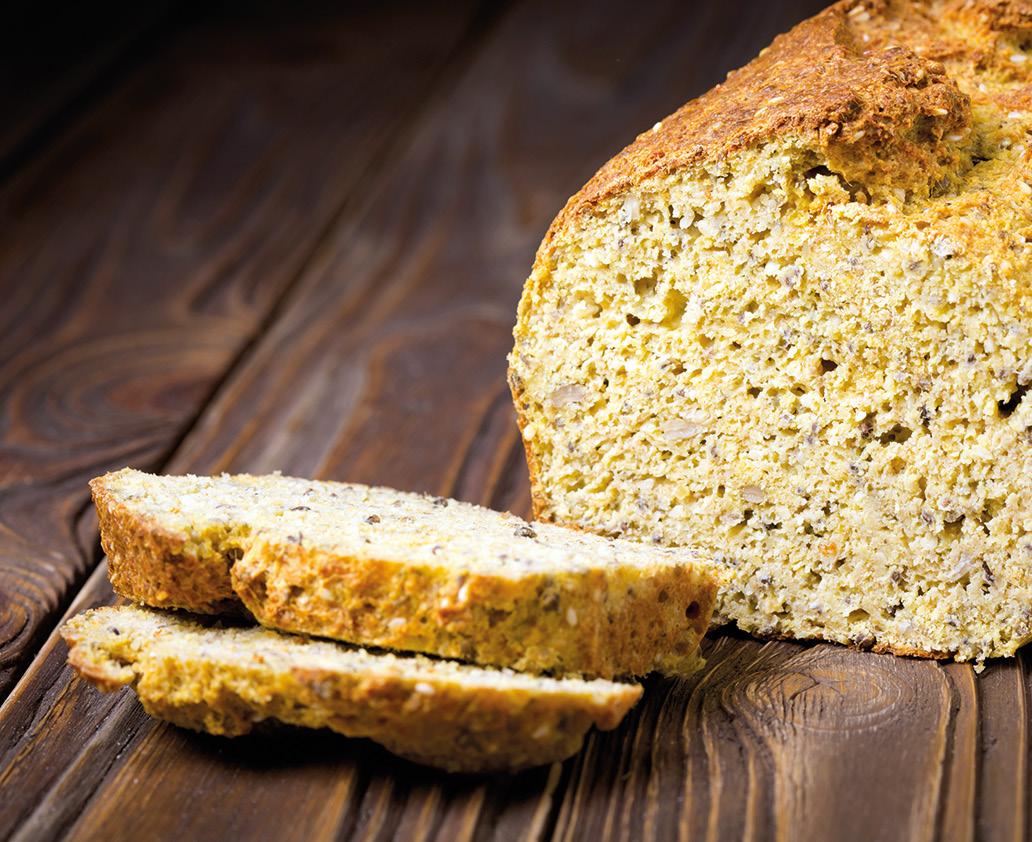
66 italian food & packaging technology - ciii (2023) - april nutrition




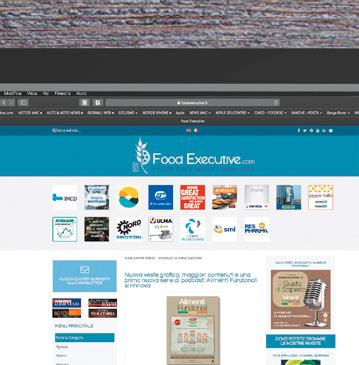
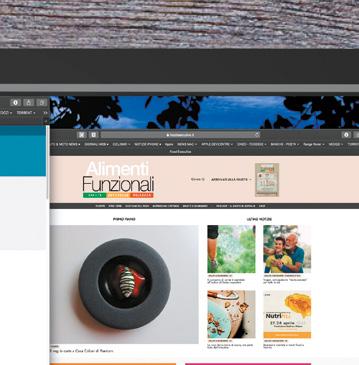





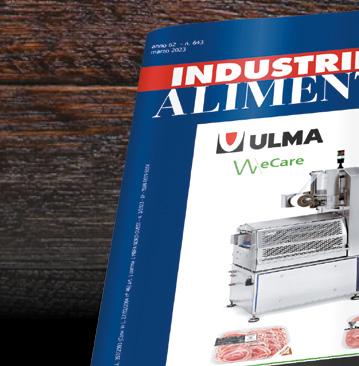
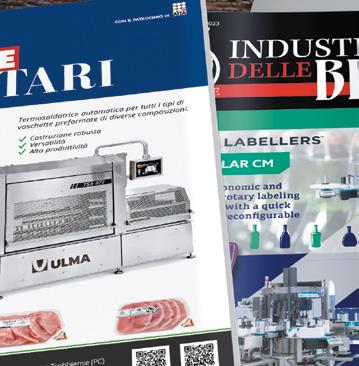

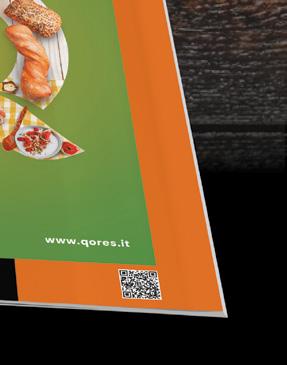


THE CORRECT TOOLS FOR THE BEST INFORMATION www.chiriottieditori.com
Bringing your food full circle
The moment you toss your leftovers into the garbage may be the last time you think about them, but it’s far from the last time they will affect you. When the garbage truck leaves your home, the organic matter you threw away is just beginning a journey that will take it through municipal transfer stations and, usually, to a landfill. There, it will slowly degrade into methane, a planet-warming greenhouse gas that is 84 times more powerful than carbon dioxide.
Over the years, scientists have tried to develop uses for organic waste that divert it from the landfill – perhaps as compost, or biofuel. Now, though, a unique opportunity has prompted them to look for other, potentially better, options. ARSX is an annual competition that asks ARS scientists to propose innovative, high-risk ideas that cross disciplines and break boundaries to solve our most pressing challenges. The 2022 theme, «Innovations for a Circular Economy in Agriculture,»
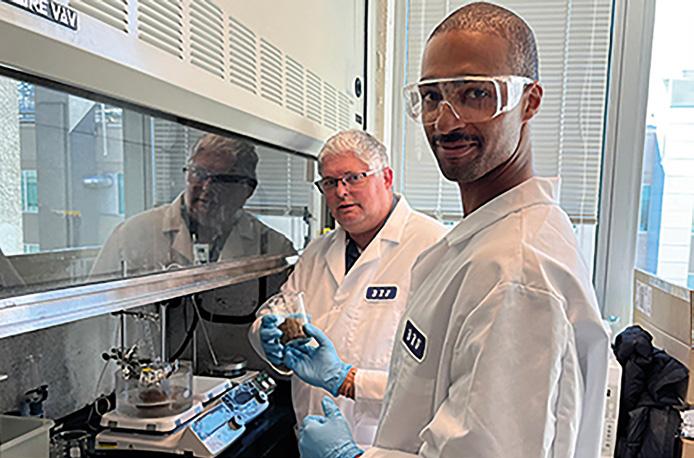
focused on “developing regenerative processes and closing gaps in existing loops [to] use our natural resources more efficiently.”
One of three winning projects, “Universal Waste Conversion for a Circular Economy,” succeeded by proposing a new industrial process that will transform organic waste into nanocellulose, a fluffy fiber that can be used in multiple products. To maximize the chances that their ideas would reach the marketplace, the researchers partnered with business leaders already working in the area. Dane McSpedon, CEO of Hughes Energy, explained why he got involved:
“15% of methane emissions globally are from rotting organic matter in landfills. Our process essentially gives organic material a second life. We put it into other products that displace the need for fossil fuels or cutting down trees.” In essence, he said, the group is “turning a problem into a product.”
One of the first products the group plans to use nanocellulose for is cardboard boxes. They believe that it could replace existing petrochemical-based products that line cardboard, making it lighter and firmer. With further work, the nanocellulose could
68 italian food & packaging technology - ciii (2023) - april
RESEARCH
ARS research chemist Gabe Patterson hands a container of nanocellulose material to project leader Jim McManus. The brown, fibrous material is the result of a novel process their team has developed to transform organic waste into a high-value product with many applications, from cardboard boxes to food packaging.
also be a component of other products, like single-use paper plates and food packaging liners. That change could have real ramifications for human health.
“There’s a class of hazardous chemicals, called PFAS, where very low levels can cause serious health issues like cancer and reproductive toxicity,” said William Hart-Cooper, a research chemist at the ARS Western Regional Research Center (WRRC) and one of the project team members. “PFAS have traditionally been used to coat biodegradable products like disposable plates. Nanocellulose could replace that type of chemical, and we can make it from garbage.”
While nanocellulose materials have been around for some time, the ARSX team developed an entirely new production process, making it easier to transform organic waste into the final product. The process breaks down the organic material using a steam
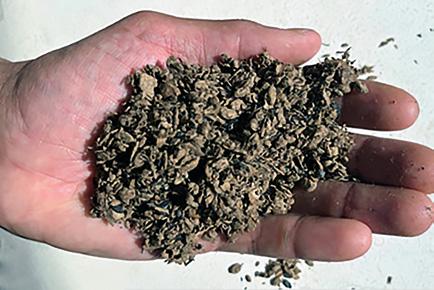
autoclave, a machine that subjects it to high temperatures and pressure.
“The steam treatment is the only preprocessing necessary for the pre-pulped waste fibers before their conversion into nanocellulose,” said Gabriel “Gabe” Patterson, a research chemist at WRRC. “Compare this to existing nanocellulose synthesis processes requiring the harvest, transport, size reduction, and cellulose purification of raw plant materials residues. We anticipate that the Hughes system can both reduce economic barriers to nanocellulose production and mitigate greenhouse gas emissions from landfilling municipal solid waste.”
In the end, the result should be a win for the businesses that get involved and for consumers who get healthier products and, most importantly, fewer climate-warming emissions.
“The really big thing is we’re reducing methane emissions,
and stopping forests from being used, so they’ll still be there to trap carbon,” said James “Jim” McManus, a research scientist at WRRC and the project leader. “We’re really making the world a better place, that’s what we want to do with the project.” – Kathryn Markham, ARS Office of Communications.
www.ars.usda.gov
Potential of lactic acid bacteria to produce functional fermented whey beverage
A functional fermented whey (FW) beverage was produced by Researchers from Thailand using lactic acid bacteria (LAB), Pediococcus pentosaceus ENM104 and Lactiplantibacillus plantarum SPS109.
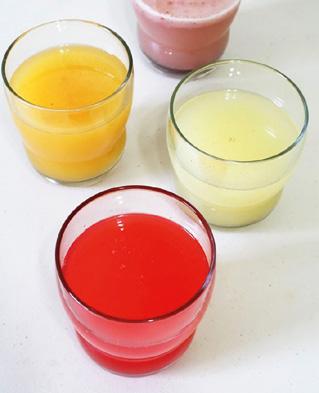
Both strains grew well in MRS medium under aerobic and anaerobic conditions, were susceptible to antibiotics, and showed antibacterial activity via metabolites i.e. organic acids and produced biofilm. A co-culture of the LAB in phosphate-buff-
ered saline reduced heterocyclic aromatic amines, nitrosamines, and biogenic amines, including 2-phenethylamine, putrescine, cadaverine, histamine and tyramine. The cholesterol content of whey fermented for 72 h with the co-culture was 37.60 ± 18.28% lower than the initial content, while gamma-aminobutyric acid production increased by 3.91 ± 0.10mug.mL-1. Angiotensin-converting enzyme (ACE) inhibitory activity increased by 36.07 ± 3.94%. Oxygen radical
research italian food & packaging technology - ciii (2023) - april 69
Municipal solid waste fiber following the Hughes process. Additional processing will transform it for use in a variety of consumer products.
absorbance capacity (ORAC) increased to 362.06 ± 8.63 nmol TE.mL-1. Putrescine and cadaverine were reduced by 11.84 ±2.20% and 53.82 ±2.91%, respectively.


This FW inhibited Bacillus cereus TISTR 687, Listeria monocy-


togenes DMST 17303, and Streptococcus mutans ATCC 25175 with minimum inhibitory concentration (MIC) from 30 to 40% and biofilm inhibitory concentration (BIC) from 35 to 40%.
The most sensitive strain was S. mutans, which exhibited
98.52 ±0.99% biofilm inhibition. According to the results published in LWT - Food Science and Technology journal, both LAB in a mixed starter showed great potential to produce functional FW through their joint beneficial activities.
Aloe vera and carrageenan based edible film improves storage stability of ice-cream
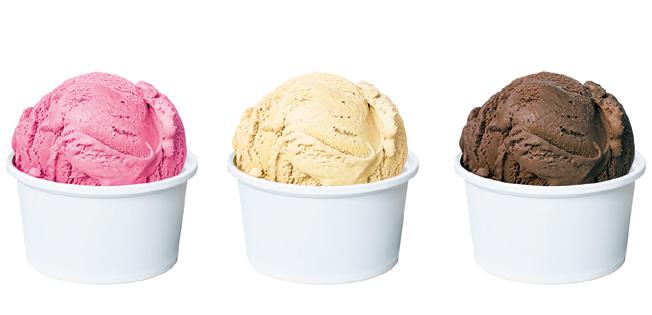
An Indian study published in Applied Food Research journal was aimed at developing a bioactive edible film for improving the lipid-stability of ice-cream and frozen dairy products during storage using Aloe vera as a bioactive ingredient. Kulfi, a popular Indian ice-cream, was used as a food model system. The optimized film (1.5% w/v carrageenan and 14% w/v glycerol) was incorporated with different levels of A. vera (9, 12 and 15% w/v) and used to pack the kulfi samples during six-month frozen storage (-18°C). While density (g/mL) and thickness (mm) of the film increased, the transmittance (%), water-vapour transmission rate (mg/m2t) and lightness (L*) values decreased
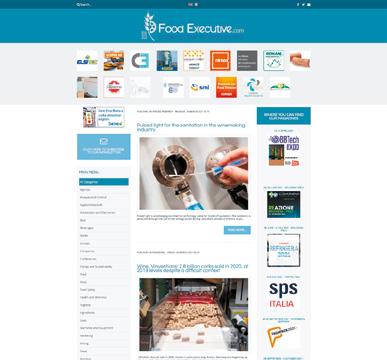

with concentration of A. vera. The A. vera films showed antimicrobial properties against Escherichia coli The kulfi samples packaged in A. vera films showed significantly lower values for lipid-oxidation [thiobarbituric acid reacting substances (TBARS), free-fatty acids (FFA) and peroxide values (PV)] and microbial counts (psychrophilic and yeast/ moulds) which were reflected in
their sensory quality during entire storage period. The highest values for TBARS, FFA and PV were observed for control samples (1.0 mg malondialdehyde/kg, 0.80% and 1.99 meg/kg, respectively) and lowest for samples packaged in films containing 15% A. vera (0.61 mg malondialdehyde/kg, 0.47% and 1.34 meg/kg, respectively) on day 180.
research 70 italian food & packaging technology - ciii (2023) - april
+ NEWS + INFORMATION www.foodexecutive.com FOODEXECUTIVE 1-4.indd 4 31/03/21 16:32
A comparative study between freeze-dried and spray-dried goat milk
Different drying techniques impart distinguishing characteristics to goat milk, particularly to its fat globules. Chinese researchers investigated the difference between freeze-dried and spraydried goat milk (FGM and SGM) fat globules on lipid profiling and in vitro infant gastrointestinal digestibility.
The former presented higher levels of MUFA (31.76%) and lower cholesterol content (1.20± 0.02mg/g). Some important longchain polyunsaturated triacylglycerols such as POL (16:0/18:1/18:2), PSL (16:0/18:0/18:2), and POO (16:0/18:1/18:1), also had better preservation in FGM. Moreover, we detected more species of lysophospholipid in FGM than SGM,
accounting for 2.51% and 0.71% of total phospholipids, respectively. More intriguingly, FGM, which has better membrane integrity and larger particle size, showed longer lag during gastric digestion and lower level of final lipolysis throughout gastrointestinal
digestion. Therefore, the results published in Food Chemistry journal showed the effects of different drying techniques on lipid profiling and digestibility of goat milk, providing significant insight for appropriate utilization of goat milk in infant nutrition.

Evaluation of quality changes of cloudy mixed juices after high pressure processing
Cloudy fruit and vegetable mixed juice (MJ) pasteurized by high pressure processing (HPP) showed an increasing market demand. However, browning, sedimentation, and flavor changes of HPP juice during storage have been a great challenge for the beverage industry. The aim of the Chinese work published in Current Research in Food Science journal was to investigate quality changes of HPP MJs during storage and to explore the potential to create the shelf-stable MJs with fresh-like organoleptic quality through HPP. In the work, commercial MJ1 (orange, mango, and kiwifruit) and MJ2
(carrot and pineapple) were formulated and their quality changes during storage were investigated. The results indicated no visible color changes and sedimentation were observed in MJ1 and MJ2 during refrigerated storage (90 days). However, sucrose decreased as glucose and fructose increased; a large number of aldehydes and alcohols decreased but some terpenoids increased during storage.
In general, blending proper fruit and vegetable to produce MJs combing with HPP could maintain high cloud and color stability, but sugars and volatiles clearly changed during storage.

research italian food & packaging technology - ciii (2023) - april 71
Effects of ultra high pressure-magnetic field treatment on stored shrimp
The preservation of ultra high pressure (UHP) and magnetic field (MF) technologies on food have been reported, but the effect of combined treatment (UHP-MF) on aquatic product quality is rarely explored.
The purposes of the study carried out by Chinese Researchers and published in LWT - Food Science and Technology journal were to investigate the effects of UHP-MF treatment on protein properties and quality deterioration of stored Litopenaeus Vannamei. The vacuum-packed shrimps were treated at 200 and 300 MPa for 5 min, then stored in 5 mT MF for 12 days. Results
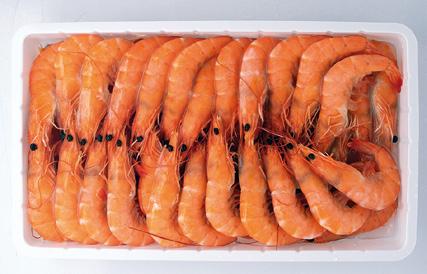
showed the hardness, springiness, chewiness, shear force, L*, a*, b*, and W of muscle were improved by UHP, whereas the texture softening, a* and b* increase, water holding capacity were inhibited during MF storage.
On the 12th day, compared with CON group, the cathepsin B, D, H, L activities, TBARS, carbonyl and dityrosine content in UHP300-MF group were reduced by 46.67%, 27.26%, 43.10%, 52.00%, 41.30%, 32.86%, and 30.42%, respectively. Furthermore, UHP-MF treatment slow down the accumulation of surface hydrophobicity, myofibril fragmentation index, and trichloroacetic acid-sol-
Improving fresh cheese shelf-life through hyperbaric storage
The changes in microbiological, physiochemical, and textural properties in fresh cheeses made from either cow or goat milk were
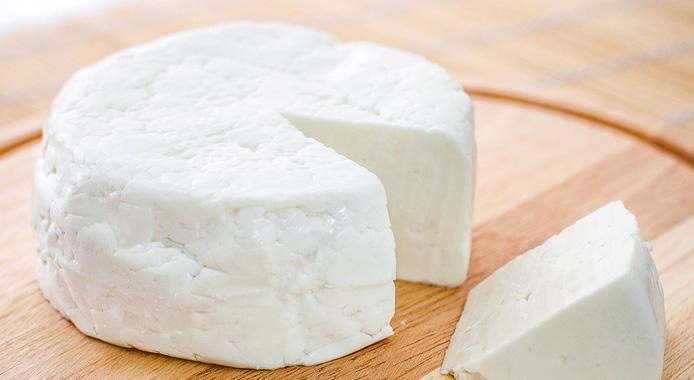
observed by Portuguese Researchers under hyperbaric storage (HS, 50-100 MPa) at room temperature (RT) and compared
uble peptide content. Generally, UHP-MF treatment inhibited lipid oxidation, weakened cathepsin activities, delayed protein oxidation and degradation of stored shrimp, retarded quality deterioration and prolonged shelf life of stored shrimp.
with refrigerated storage under normal atmospheric pressure for 60 days.
An initial microbial growth inhibition was observed for both cheese types, as well as a considerable inactivation of all endogenous microbiota under HS/RT (75-100 MPa/RT). This contributed to a higher stability of pH and color values, especially at the higher pressure at room temperature (100 MPa/ RT) throughout 60 days storage. A compression effect occurred during HS/RT, resulting in higher whey loss, reduction in moisture content, and textural changes. Such changes tended to decrease over time, to values closer to the
research 72 italian food & packaging technology - ciii (2023) - april
initial ones, with hardness values at the 60th day of storage at 75/ RT similar to those observed for refrigeration on the 7th day and 1.4-fold higher than those observed at 100/RT. Overall, HS/RT reduced the microbial populations load during storage ( >= 5 log units in some cases), with minimal effects on most of the evaluated quality parameters. These results point to a considerable shelf-life extension of
HS fresh cheeses, without temperature control, pinpointing HS as a more sustainable preservation strategy than refrigeration, with great potential for industrial application.
The results presented in this study published in the Journal of Food Science point to increased microbial stability of fresh cheeses when stored under hyperbaric storage without temperature control, leading possibly to an
Techno-functional properties of black soldier fly larvae
Quality, nutritional and techno-functional properties of whole black soldier fly larvae (BSFL) were investigated by Australian Researchers to determine its potential as a food ingredient. The effect of age, feed and killing method (blanching or frozen) on these characteristics were determined; all three factors influenced the characteristics investigated.
The BSFL were freeze dried and milled into a powder and analysed for physical (larvae size, pH, colour, proximate composition) and techno-functional properties (water absorption capacity, lipid absorption capacity, emulsifying activity, emulsifying stability, and gel formation). Older larvae were found to have a higher ash, fat, and chitin content, whilst having lower moisture and protein con-
increased shelf-life, of up to 60 days. This kind of new food preservation strategy may be suitable for longer transportation of foods, where energy may not be handily and widely available, while additionally contributing to increased shelf-life and safety. Also, hyperbaric storage could be applied throughout the food storage, improving shelf-life with a lower carbon footprint than refrigeration.
tents than the younger larvae (P< 0.05). The pH of the BSFL ranged from 6.79 (frozen) to 8.94 (blanched), with blanching causing a lighter coloured BSFL than freezing. The water absorption capacity of the BSFL ranged from 56.27 to 80.77% and the lipid absorption capacity ranged from 50.83 to 68.62%, both of which are lower than that of other insect species. Five-day aged frozen larvae could form a gel at 5% inclusion, whilst blanching had a negative effect on gel formation and required an inclusion of 30% BSFL to form a gel. Emulsion capacity (EC) (43%) and stability (ES) (32%) compared well to other insect species; however, blanching had a negative effect on these properties, reducing both EC (10%) and ES (5%).
Overall, the results published in Journal of Insects as Food and Feed the indicate that freezing is the preferred killing method for ingredient functionality and these findings demonstrate some promising potential for BSFL as a functional ingredient.
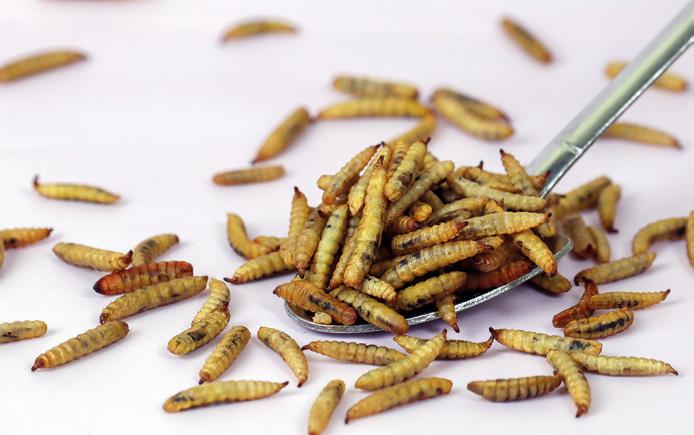
research italian food & packaging technology - ciii (2023) - april 73
Novel lactic acid bacteria starter from insect microbiome to plant-based fermentations
Lactic acid bacteria (LAB) are a broad group of gram-positive bacteria that have actively been used worldwide in food productions due to their nutritional, technological, bioprotection and flavour-related characteristics,
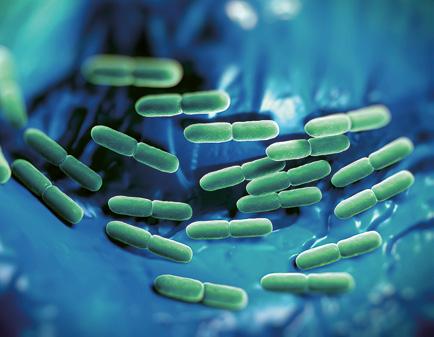
- Food Science and Technology journal. Based on this analysis, two strains belonging to Leuconostoc pseudomesenteroides and L. lactis species were found to be the most suitable strains for use in common food plant matrices. The former showed an ability to significantly catabolize raffinose, maltose and citrate, which are
present in soy beverages, while the latter was able to produce high concentrations of diacetyl and lactic acid, which are relevant for the generation of plant dairy alternatives, and noticeably degraded phytic acid, pectin and sucrose mostly found in bean, cereal and fruit-based plant matrices.
Effect of roasting degree on major coffee compounds
Coffee is a beverage that is consumed worldwide, and the demand for decaffeinated coffee has increased in recent years.
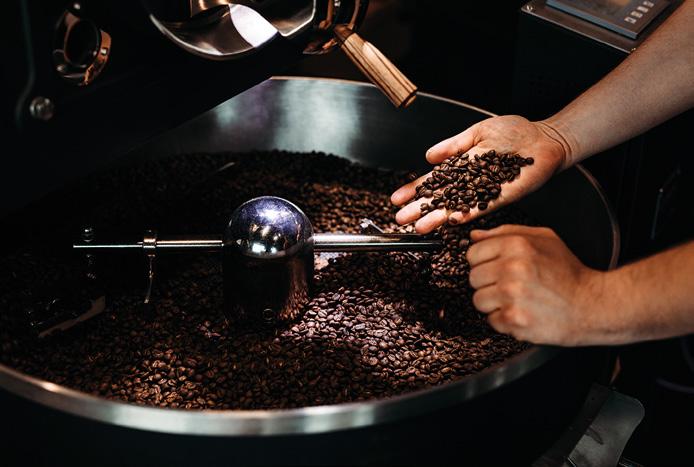
which define them as powerful biological tools to be used in fermented food applications. LAB are ubiquitous in nature and some species have been found in fructose-rich niches, such as insect microbiomes.
Twenty-eight LAB species were isolated from Apis mellifera, Bombus spp. and Andrena nigroaenea insect sources. Lactococcus lactis was the most widespread species in all insect species. A phenotypical characterization analysis based on carbohydrate metabolism, subproduct and acid production, pectinolytic activity, citrate uptake, phytate degradation and diacetyl production was carried out by Danish Researchers and the results were published in LWT
A Japan study aimed to investigate the effect of roasting conditions on the concentration of physiologically active com -
pounds in coffee beans with and without supercritical CO2 decaffeination treatment. Decaffeination treatment markedly reduced caffeine concentration and slightly reduced trigonelline concentration in the coffee beans, whereas the concen -
research 74 italian food & packaging technology - ciii (2023) - april
trations of chlorogenic acids (chlorogenic acid, cryptochlorogenic acid, and neochlorogenic acid) were largely unchanged. Roasting was performed using a hot-air coffee roaster machine and the coffee beans were treated at different peak temperatures (125°-250°C), different hold times at the peak temperature (120-240 s), and different temperature increase times to reach the peak temperature (60-180 s). Roasting conditions such as long hold and long temperature rise times at high temperatures (≥ 225°C)
significantly degraded coffee compounds except for caffeine, with similar degradation rates between non-decaffeinated and decaffeinated coffee beans. In contrast, the L * value of decaffeinated coffee decreased with less thermal history compared to that of non-decaffeinated coffee. This allowed for the complete roasting of decaffeinated coffee with a lower thermal history compared to those of non-decaffeinated counterparts, suppressing the degradation of several coffee compounds. For example, comparing
the similar L * values between coffee beans with and without decaffeination treatment, it was found that the former tended to contain more chlorogenic acid.
Generally, decaffeination results in the loss of physiologically active compounds along with caffeine, which is a major concern. However, this study published in the Journal of Oleo Science showed that appropriate control of decaffeination and roasting conditions can limit the degradation of several valuable coffee compounds, such as trigonelline and chlorogenic acid.
Extruded mozzarella cheese properties influenced by
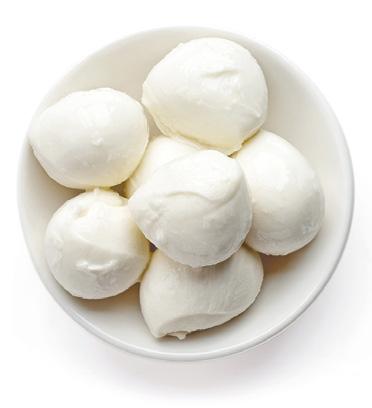
renneted
casein gels
Renneted casein gels, often named cheese curds, are traditionally pre-heated by immersion in water before stretching, which influences cheese functional properties.
A Danish work aims to understand the effect of pre-heating (cooking) on extrusion process of cheese curds at 80° and 90°C in a lab twin-screw, co-rotating extruder, and consequences for composition, microstructure and functional properties of the extrudates.
The cooking significantly enhanced curd meltability and oiling-off, resulting in faster extrusion, higher exit temperature and lower specific mechanical energy. Microscopic observations at different length scales, combining confocal laser scanning microscopy and X-ray micro-tomography, showed that cooking caused extensive fat coalescence
and cracks in protein matrix, resulting in extrudates with less fibrous structure, lower elasticity and tensile strength. The extrusion process induced significantly increased of calcium bridges in extrudates, which may replace weak water-protein interactions and increase relaxation time of
the more mobile water fraction (T2.2). The specific mechanical energy was less influenced by the extrusion temperature in cooked than uncooked curds, likely due to a more extensive oiling-off during extrusion of the cooked curd. In agreement with the microscopic observations, extrudates obtained at 80°C differ from 90°C specially regarding fat content respectively 23.8-24.8% and 29.5% (w/w) and fat globule size and distribution, influencing fiber formation. In general curds extruded at 90°C had higher elasticity and tensile strength, which was related to the well-elongated fat domains.
This study published in Food Hydrocolloids journal provided knowledge about extrusion process of curds generating new ideas to improve cheese processing and design customized cheese products.
research italian food & packaging technology - ciii (2023) - april 75
Fresh fruits and nuts processing
An Italian family business with an international reach, Di Bartolo was established in 1951 in Sicily and soon made a name for itself for the outstanding quality of its products and its innovative approach to creating semi-finished products for the food industry.
Now in its third generation, Di Bartolo S.r.l. is run cohesively by Rosario’s son and daughters, Carmelo (Sales Manager), Cristina (Administrative and Financial Manager) and Valeria (Purchasing Manager), with a special focus on applications for the gelato, bak-
ery, beverage and confectionery sectors.
With two production plants covering an area of more than 6,000 square metres, the company produces pastes, chopped nuts, juices, essential oils and candied fruit. It has more than 350 products in its catalogue, all of which are versatile and can be used to enrich creations, making them truly unique.
Over the years, it has set up an in-house laboratory equipped with state-of-the-art analytical technology in order to support its R&D team, meet multiple and diverse market demands, and offer its customers customised recipes and product standardisation, including tailor-made ingredient solutions.
Painstaking care and transparency are some of the core values that Di Bartolo S.r.l. is built upon; in fact, it closely oversees the work process and processing by carefully selecting and analysing the finest raw materials so as to ensure that they meet strict food safety standards and that they comply with religious requirements, when requested.
As a member of protection consortia such as the ‘Consorzio di Tutela del Pistacchio verde di
Bronte DOP’ and ‘Consorzio di Tutela per la Mandorla di Avola’, it is also committed to promoting the local area and native products by choosing locally sourced and ORGANIC early produce of certified origin, such as Modica Chocolate (Cioccolato di Modica IGP) and wonderfully fragrant citrus fruits such as Sicilian lemons and oranges.
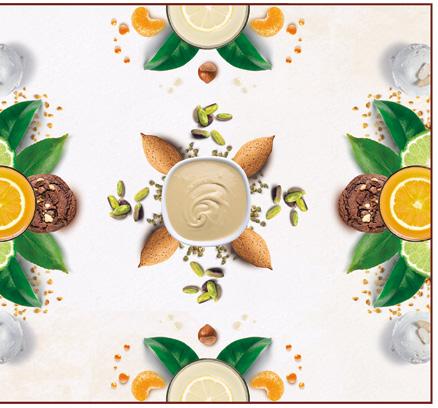
Throughout its history spanning more than 70 years, Di Bartolo S.r.l. has not only managed to establish itself in Italy, but also to achieve remarkable goals by forging business relationships with 16 countries, both in Europe and overseas, including Canada, Japan, the UK, France and Germany. The company was able to achieve this by continuously investing in highly skilled personnel and in their training, in expanding and modernising its production facilities by purchasing fully automated systems, constantly driven by an unwavering passion, which has always been a distinctive feature of the Di Bartolo family.
(Di Bartolo - Via Garibaldi 165 - 95011 Calatabiano - CT - Italy - Tel. +39 095 645103email: info@dibartolosrl.it - www. dibartolosrl.it)
76 italian food & packaging technology - ciii (2023) - april NEWS
First USDA winter peas for food
USDA MiCa, USDA Dint and USDA Klondike, the first winter pea cultivars specifically developed to be used whole or as an ingredient in human food, have been released by the Agricultural Research Service.
Winter or autumn-sown peas (Pisum sativum)—also called “black peas” or “field peas”—are annual legumes with excellent nitrogen-fixing abilities. They, and related pea species, originated in the eastern Mediterranean and western Asia. They should not be confused with cowpeas (Vigna unguiculata), which are also known as field peas, and usually grown in the southern states.
Currently, winter peas are mostly grown in the Pacific Northwest as a cover crop to add nitrogen to farmers’ fields, for domestic animal feed and to attract deer and other game species. They also are sometimes used in a crop rotation with winter wheat in semi-arid areas of the Pacific Northwest.

“With a typical rotation of winter wheat–summer fallow, farmers really need a broadleaf crop to improve the sustainability of the system. Still, until now winter peas haven’t provided enough of a return to be a cash crop,” explained geneticist Rebecca McGee with the ARS Grain Legume Genetics Physiology Research Unit in Pullman, Washington. «Fall-sown, food quality, winter peas are poised better to fill that gap biologically and economically.»
But winter peas have much more potential value as an ingredient for human foods. These three new varieties offer several
prized qualities: 1) high protein levels with a nearly complete amino acid profile 2) peas lack the allergens common in soybeans and peanuts, which are often the supplier of protein 3) a favorable, low glycemic index number and 4) winter peas are not genetically modified, all of their development is being done with traditional breeding.
As a food ingredient, the winter peas can be used to provide the protein in protein-starch-fiber slurries used as part of producing nondairy milk, energy bars, non-wheat flour pastas, and baked goods. Some of the food products that contain pea protein as an ingredient include Beyond Meats, numerous brands of protein powder, and many trail mixes.
Winter Austrian peas were first introduced to the Pacific Northwest, primarily in Idaho, in 1932. When World War II curtailed the availability of nitrate fertilizers, many farmers turned to winter Austrian peas as a replacement to add nitrogen to their soil. But the small, dark colored peas were not acceptable for human food use.
“Still, U.S. regulations remained on the books that allowed only spring-planted peas to be sold in the food quality markets,” explained McGee. “Once the regulations were changed in 2009 so the quality characteristics of the harvested seeds, not the planting season, dictated the purposes for which the crop can be sold, it allowed winter peas to enter the much more economically rewarding food quality distribution channels and opened the poten-
tial for widespread winter pea production.”
McGee began her breeding program in 2010, selecting for human food-oriented traits.
The three new varieties:
• MiCa: A cross of a USDA winter pea with Arwyn, a spring pea with resistance to Pea Seed-borne Mosaic Virus that produces large, smooth green
seeds. The name comes from combining the first letters of two of McGee’s mentors in breeding winter peas.
• Dint: Produces large, smooth green seeds with a slight dimple. The name is from the Middle English word for a dent made by a blow.
• Klondike: Produces large, highly desirable dark yellow seeds invoked by the Klondike’s connection to the gold rush era. Yellow seeds mean food producers don’t have to remove color during processing.
www.ars.usda.gov
news italian food & packaging technology - ciii (2023) - april 77
Cellular agriculture key technology for food security
With the global population estimated to expand to around 10 billion by 2050, the call for a sustainable food system to meet the global protein needs iss on the rise. “Cellular agriculture” is emerging as one of the key technologies for decarbonizing protein production systems by directly producing products from cells, as opposed to raising an animal for slaughter or growing crops, says GlobalData, a leading data and analytics company.
Misa Singh, Business Fundamentals Analyst at GlobalData, comments: “Cellular agriculture is an emerging solution for alternative proteins. Governments and companies are promoting investments in the field. The Dutch government has announced a EUR60 million investment into the field. The US FDA issued the first ‘No Questions’ letter about the safety of UPSIDE Foods’ cultivated chicken product.” Australian Ethical Investment speaks about supporting the growth of alternative protein markets (plant-based meat and cellular agriculture) to minimize the pressure on deforestation, carbon emissions, and animal suffering.
An analysis of GlobalData’s Company Filings Analytics Database reveals that companies such as Agronomics and SEED Innovations are making investments focused on producing and commercialising cellular agricultural products.
SEED Innovations invested EUR125,000 in Clean Food Group, a biotech company focused on cellular agriculture and commer-
cialization of bio-equivalent palm oil production by fermentation. Agronomics invested on CellX Ltd, a Chinese company producing cultivated meat
Companies such as Agronomics indicate that animal agriculture produces 18% of the world’s greenhouse gas emissions, with 12% of these emissions coming from deforestation made to grow crops.
This has accelerated the need for technologies to reduce these emissions, and cellular agriculture could emerge as an effective solution. Companies are also partnering to help accelerate the
creation of affordable cultivated meat. Qkine has partnered with 3DBT to combine its protein engineering technology with 3DBT’s animal-free media supplement City-Mix to cultivate muscle and fat cells for mass production of affordable cultivated meat.
Singh concludes: “The demand for protein is threatening to overwhelm the supply, and cellular agriculture is an emerging sustainable option limiting greenhouse emissions impacting climate. However, companies and investors need to consider the unpredictable biological processes involved in cell and tissue culture bioprocessing along with risks associated with delays, supplies, or services required for research and development.”
www.globaldata.com
INTERNATIONAL EVENTS IN ITALY
3-5 May - 2023 - Rimini: Macfrut, fruit and vegetable processing exhibition –www.macfrut.com
5-7 May - 2023 - Bologna: Cosmofarma, functional and nutraceutical exhibition - www.cosmofarma.com
8-11 May 2023 – Milano: Tuttofood, food show – www.tuttofood.it
16-18 May 2023 – Milano: Packaging Première – luxury packaging show - www. packagingpremiere.it
23-25 May 2023 – Parma: SPS Italia – automation and digital show - www. spsitalia.it
14-15 June 2023 – Parma: Solids – powder and bulk processing show - www. solids-parma.de
13-17 October 2023 – Milano: Host, hospitality show - www.host.fieramilano.it
24-27 October 2023 - Parma: CibusTec, food processing show - www.cibustec.it
16-17 January 2024 - Bologna: Marca, private label food show - www.marca. bolognafiere.it
20-24 January 2024 - Rimini: Sigep, confectionery, pastry and ice cream show - www.sigep.it
31 January – 3 February 2024 - Verona: Fieragricola, agricultural processing show - www.fieragricola.it
18-22 February 2024 - Rimini: BBTech, beer technology show - www.bbtechexpo. com
12-15 November 2024 - Rho (MI): Simei, beverage and wine industry showwww.simei.it
27-30 May 2025 - Rho (MI): Ipack-Ima, packaging, food processing and pasta show - www.ipackima.com
news 78 italian food & packaging technology - ciii (2023) - april
www.foodexecutive.it the latest news on the food&beverage world

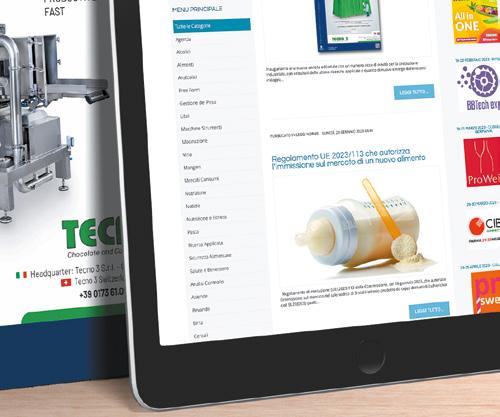

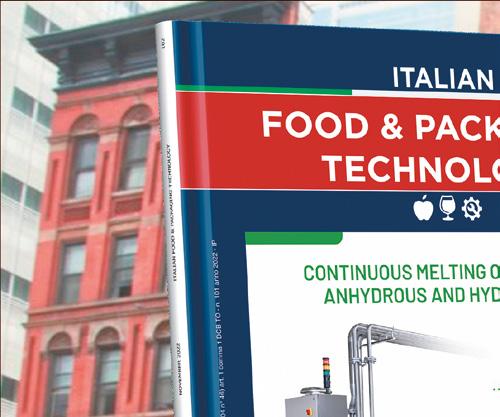
Analysis & Control
Applied Research
Automation & Electronics
Beer
Beverages
Books
Cereals
Companies
Conferences
Energy & Sustainability
Feed
Food
Food Safety
Health & Wellness
Hygiene
Ingredients
Laws
Machines & Equipment
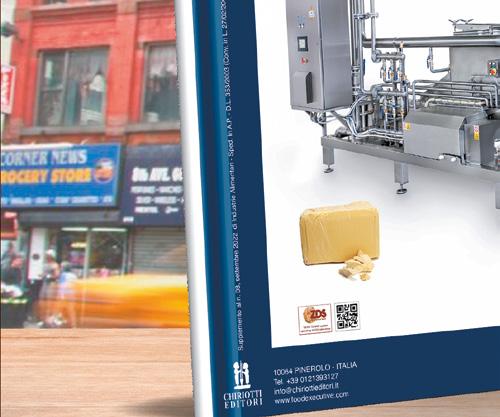
Marketing

Milling
News
Nutrition
Packaging
Pasta
Soft Drinks
Spirits
Wine

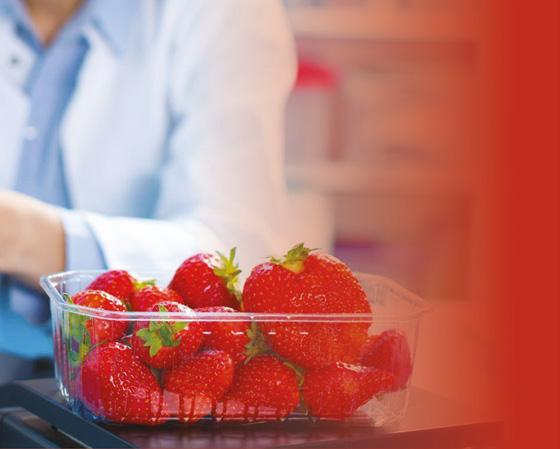






80 italian food & packaging technology - ciii (2023) - april Company index Chiriotti Editori - Pinerolo - www.chiriottieditori.it ............................. 67 Di Bartolo - Calatabiano - www.dibartolosrl.it...................................... 13 Foodexecutive.com - Pinerolo - www.foodexecutive.it 79 General System Pack - Schio - www.gsp.it 7 Gerhard Schubert - Crailsheim (D) - www.schubert.group ................. 35 IFP Packaging - Schio - www.ifppackaging.it........................................ 49 Italo Danioni - Milano - www.danioni.it 57 Megadyne - Mathi - www.megadynegroup.com 31 P.E. Labellers - Porto Mantovano - www.pelabellers.com ........... cover 2 Pinco - Rancate (CH) - www.pinco-sa.com ..................................... cover 3 Sarp - Castelfranco V. - www.sarp.it 17 Smi - San Giovanni Bianco - www.smigroup.it 41 TECNO 3 - Corneliano d’Alba - www.tecno-3.it.............................. cover 1 Tecno Pack - Schio - www.tecnopackspa.it ................................... cover 4 Wolhfarth - Sordio - www.wolhfarth.it 21 Ammega Italia 30 Di Bartolo.................................................................................................. 76 Gerhard Schubert .................................................................................... 54 Megadyne 30 P.E. Labellers 56 Sarp ........................................................................................................... 29 SMI ............................................................................................................. 58 Tecno 3 28 Advertiser index www.chiriottieditori.it/en/ VISIT OUR SITE SUBSCRIBE TO OUR NEWSLETTER AND TO OUR SOCIAL MEDIA, WE WILL KEEP YOU INFORMED SITO CHIED 2018 1-2.indd 2 16/05/18 12:19
Meetusat Hall3-BoothF19
